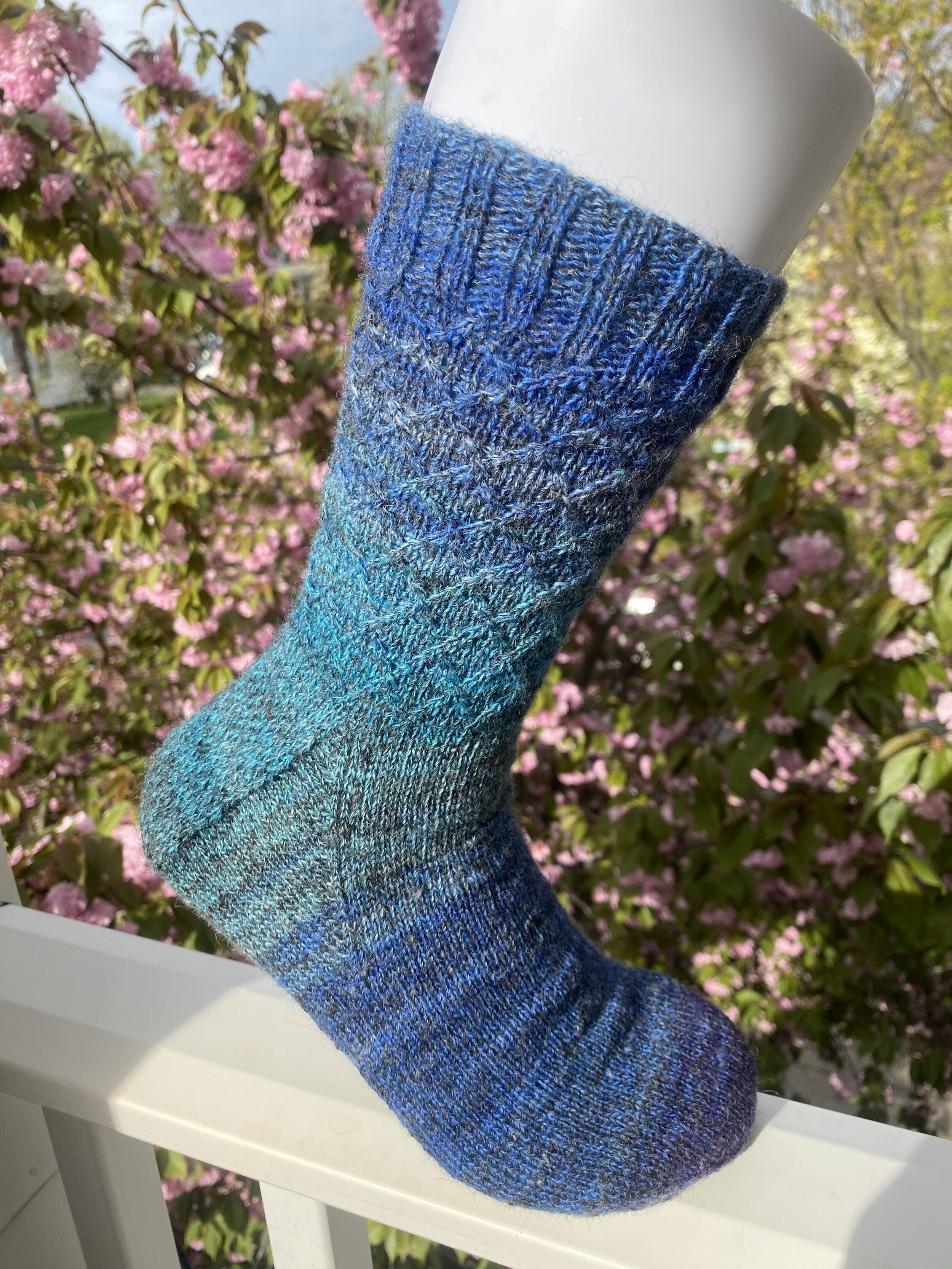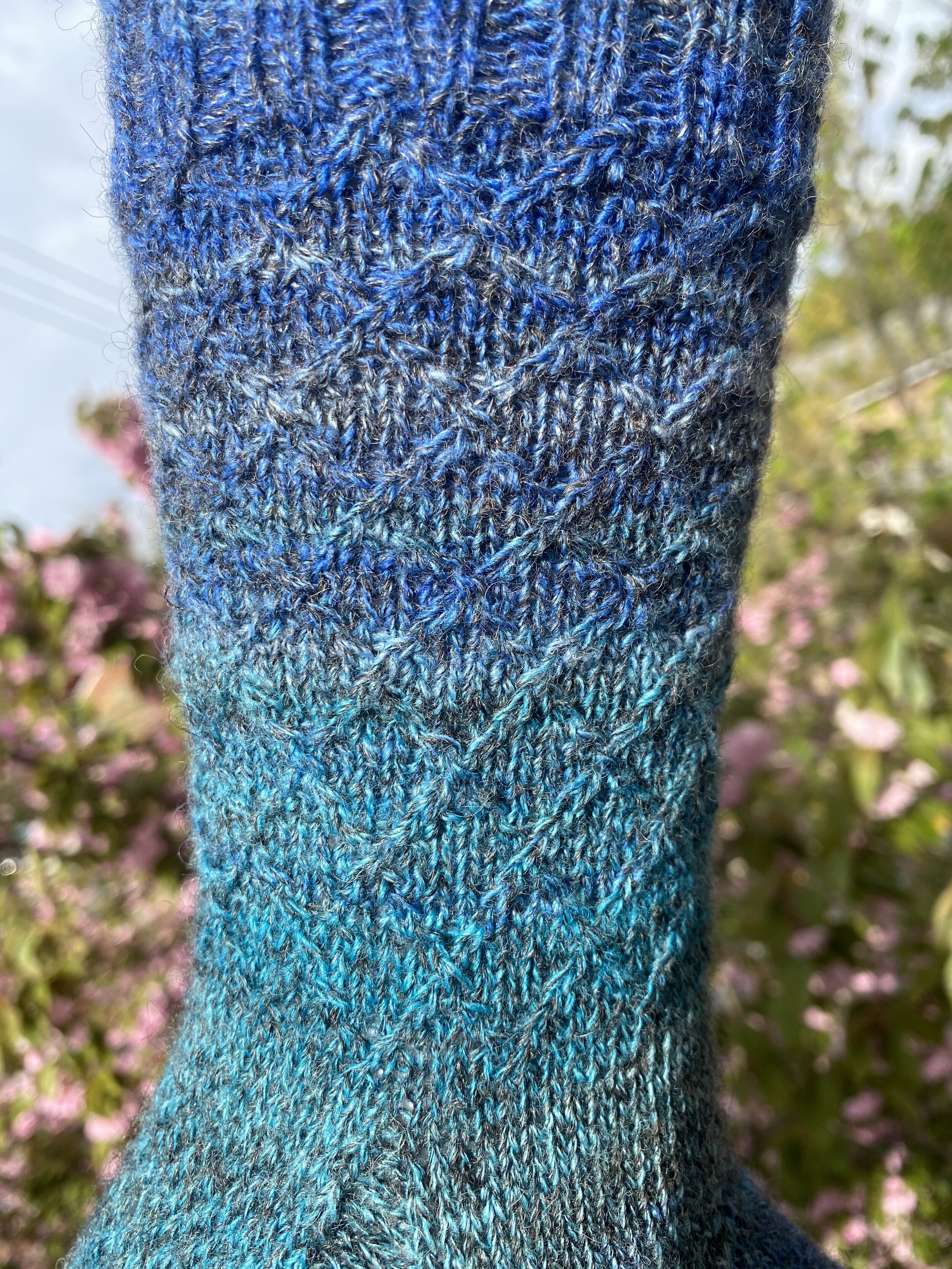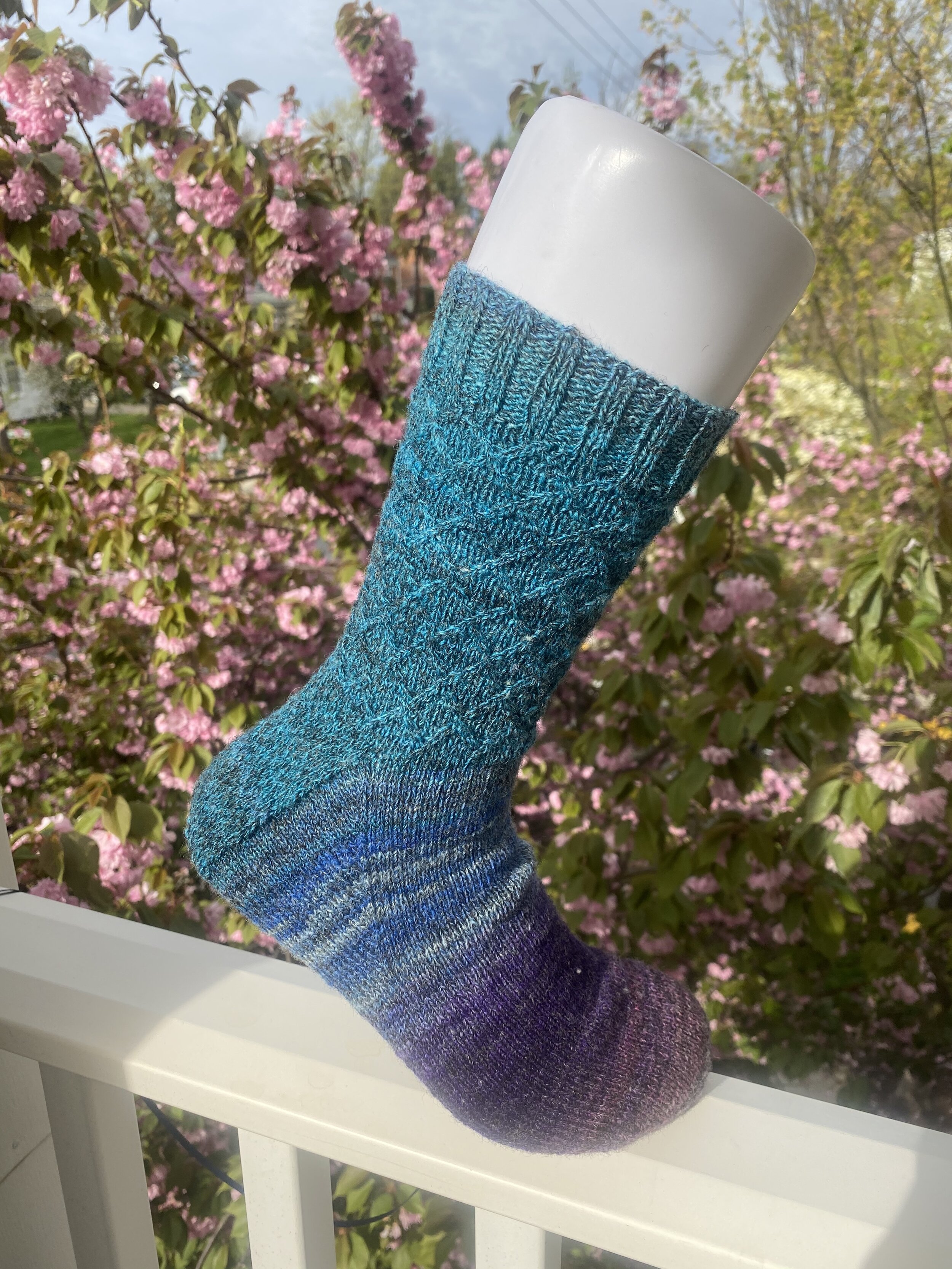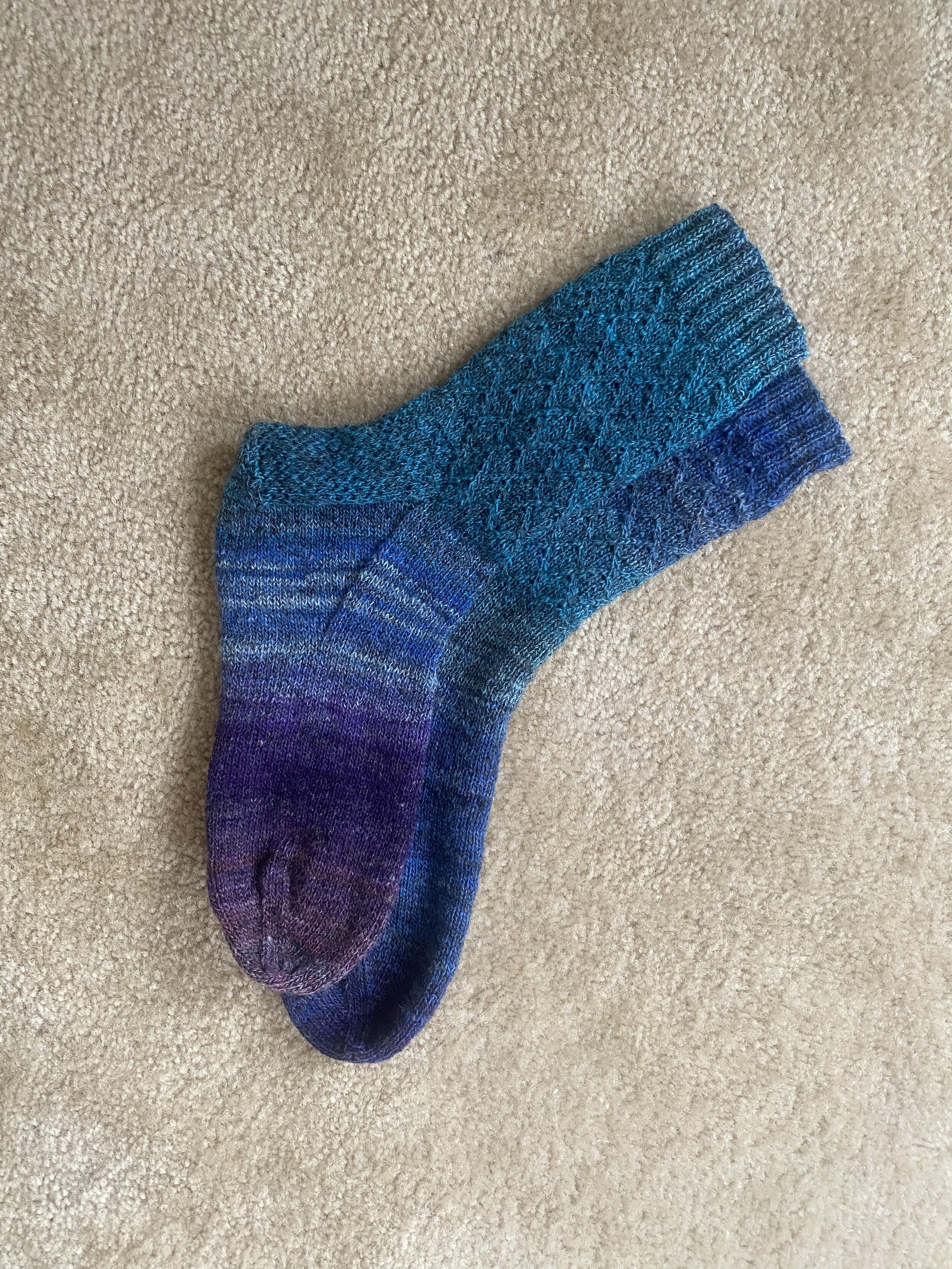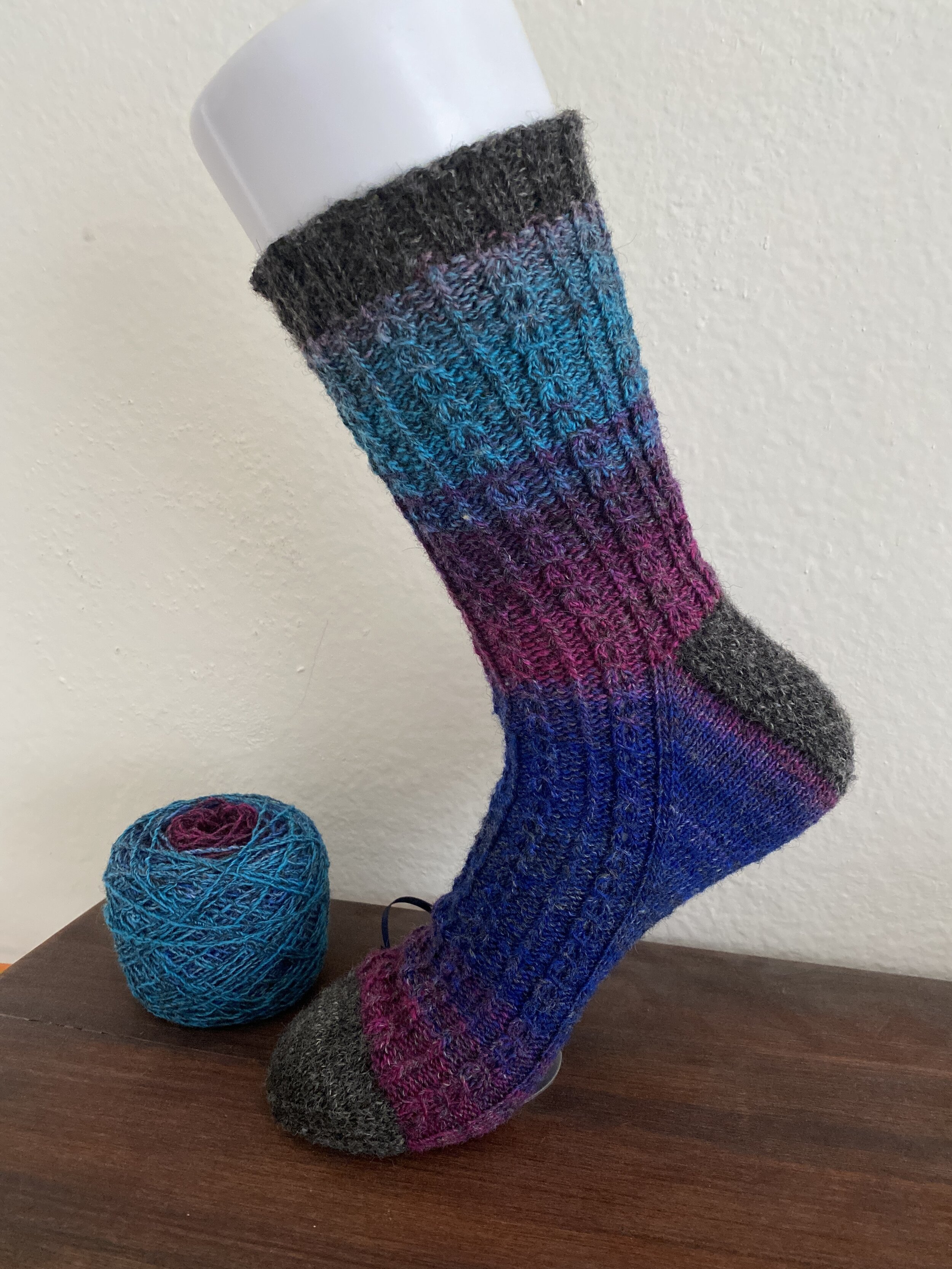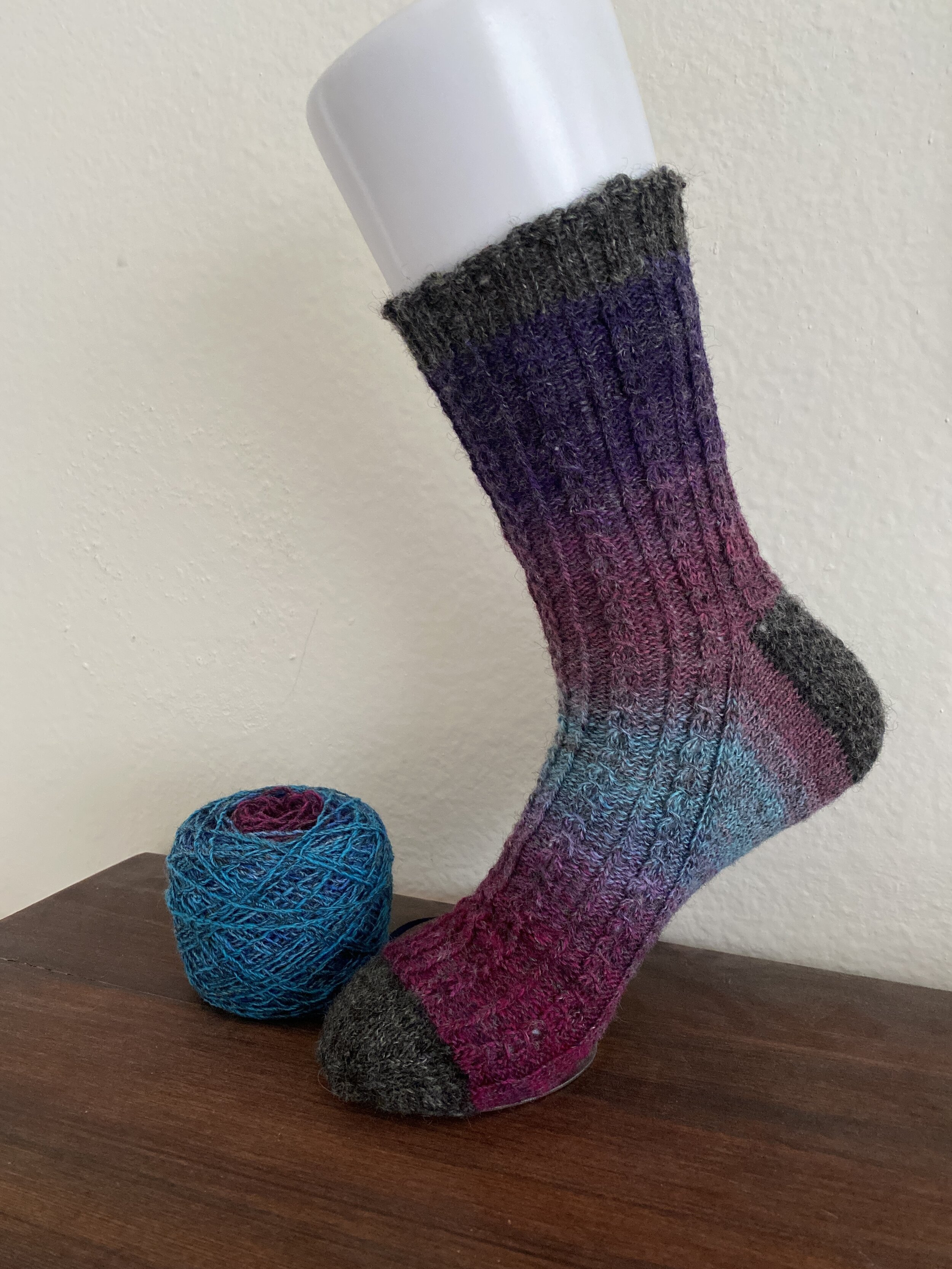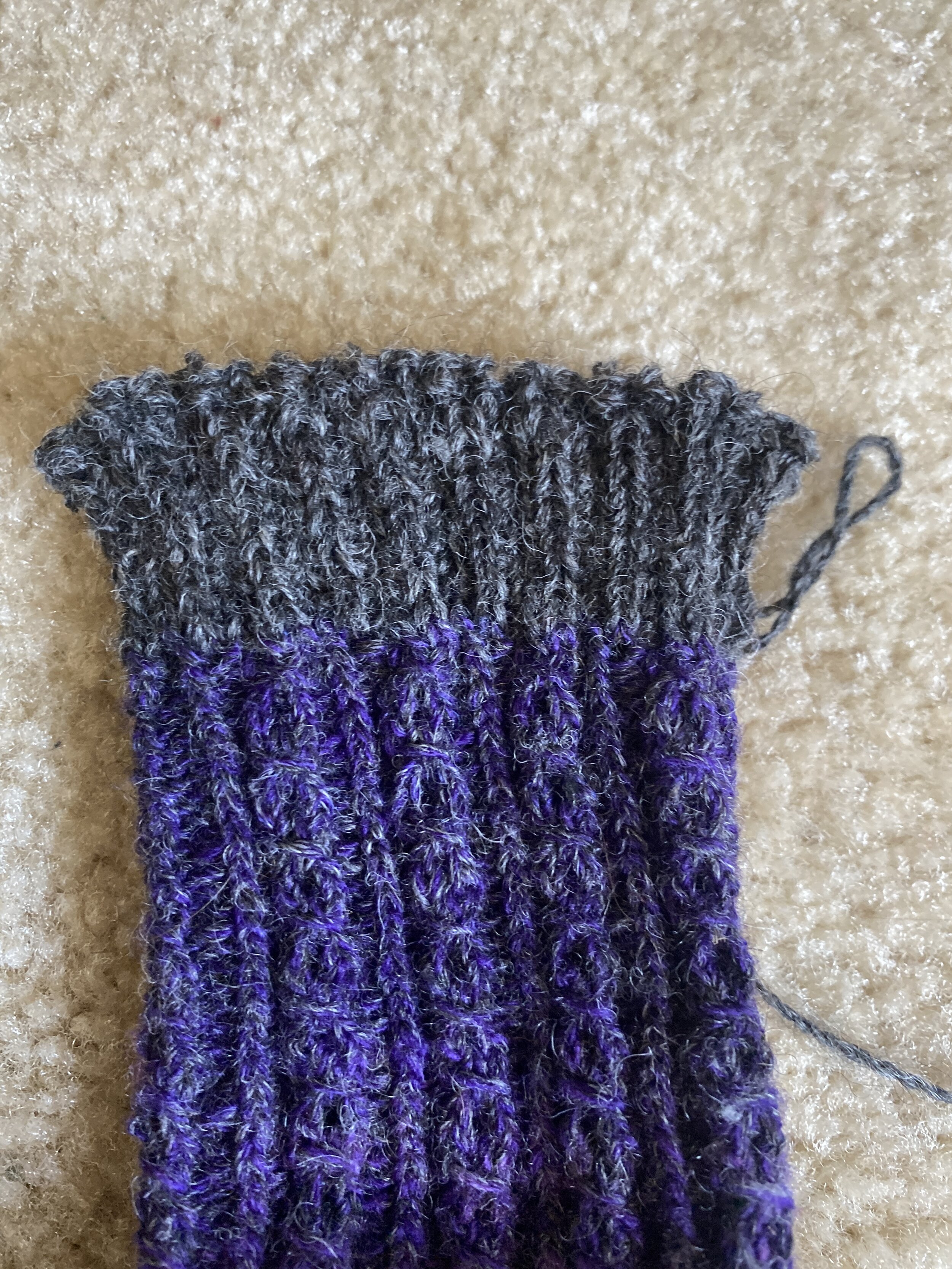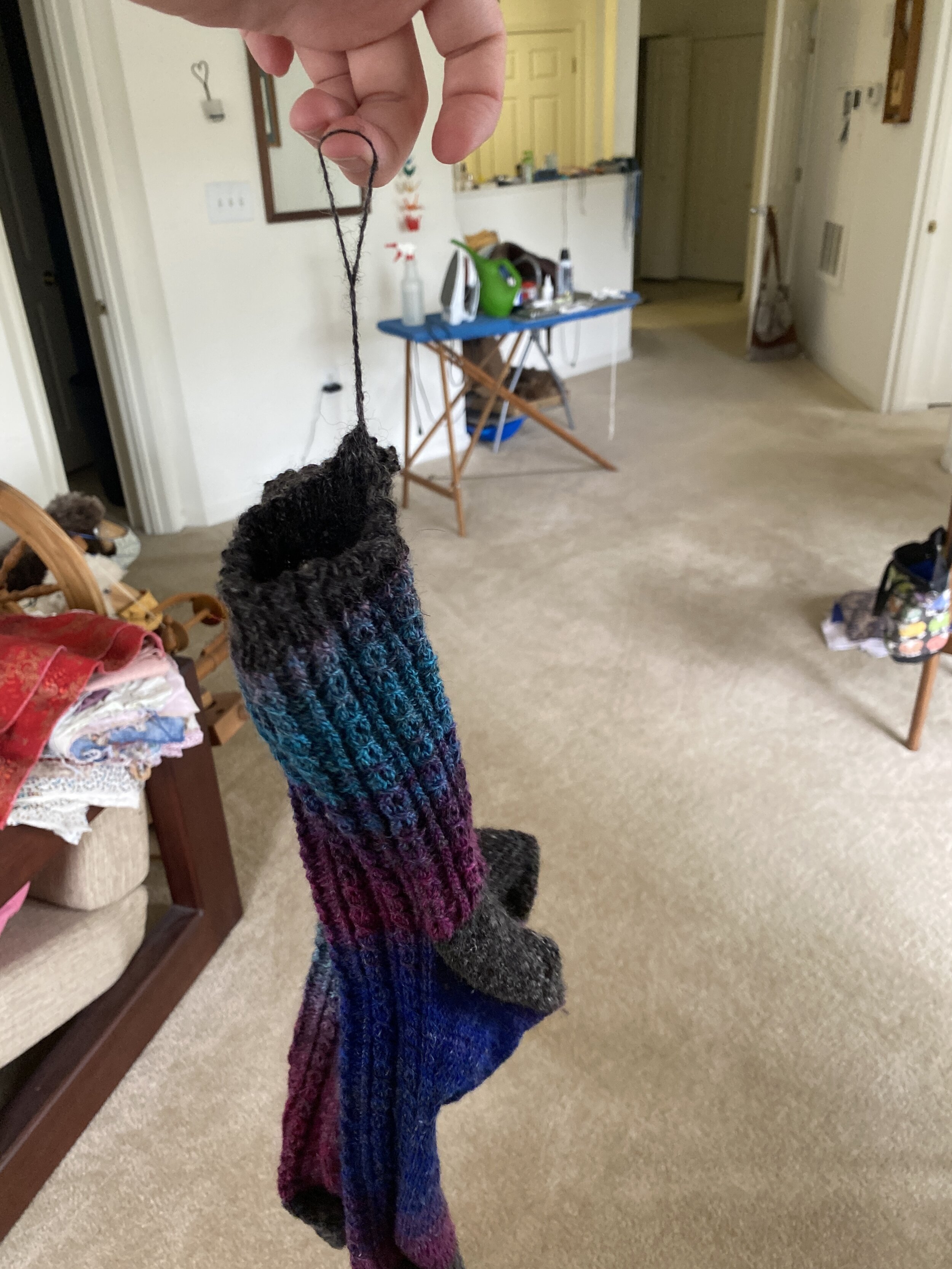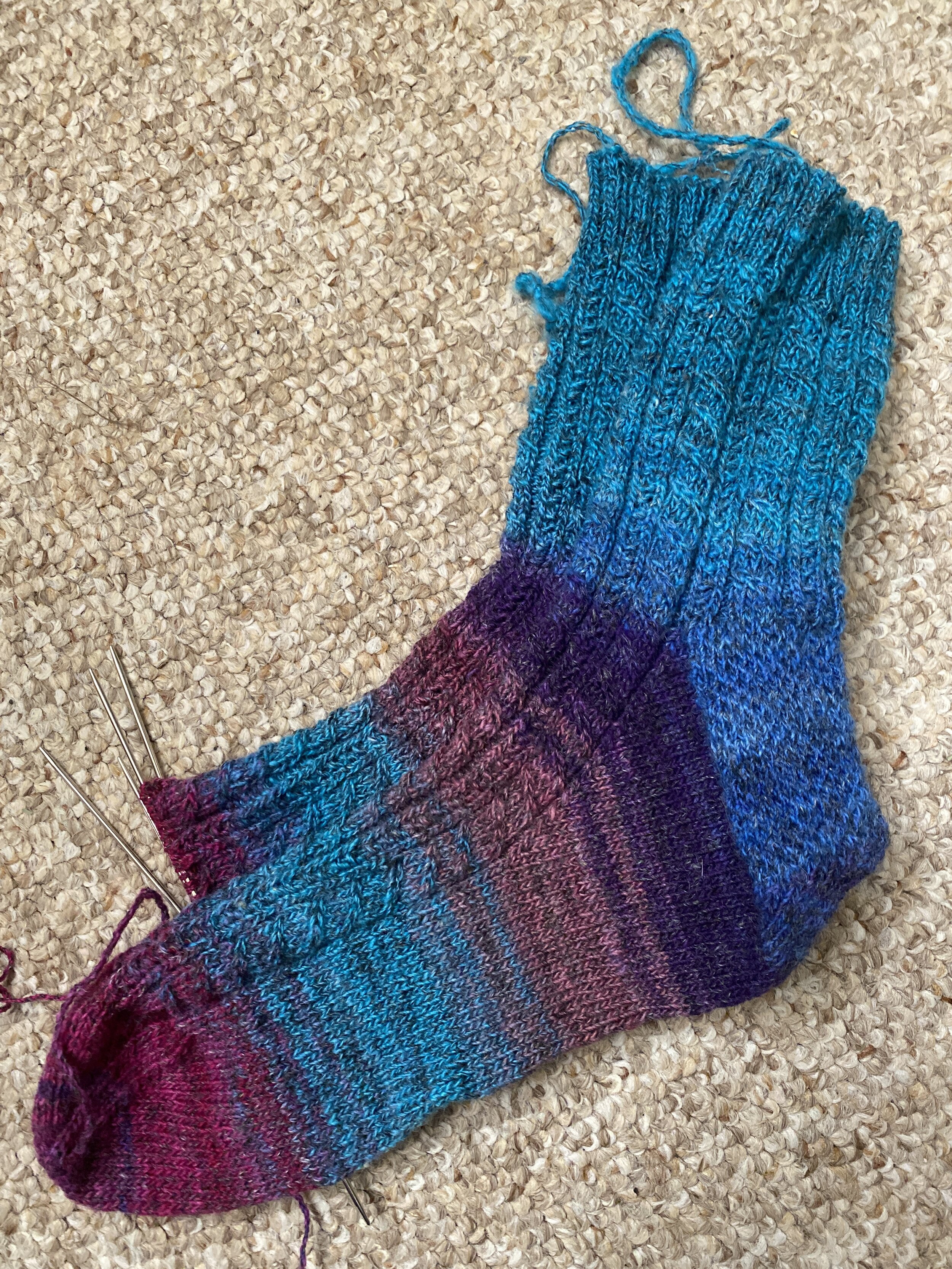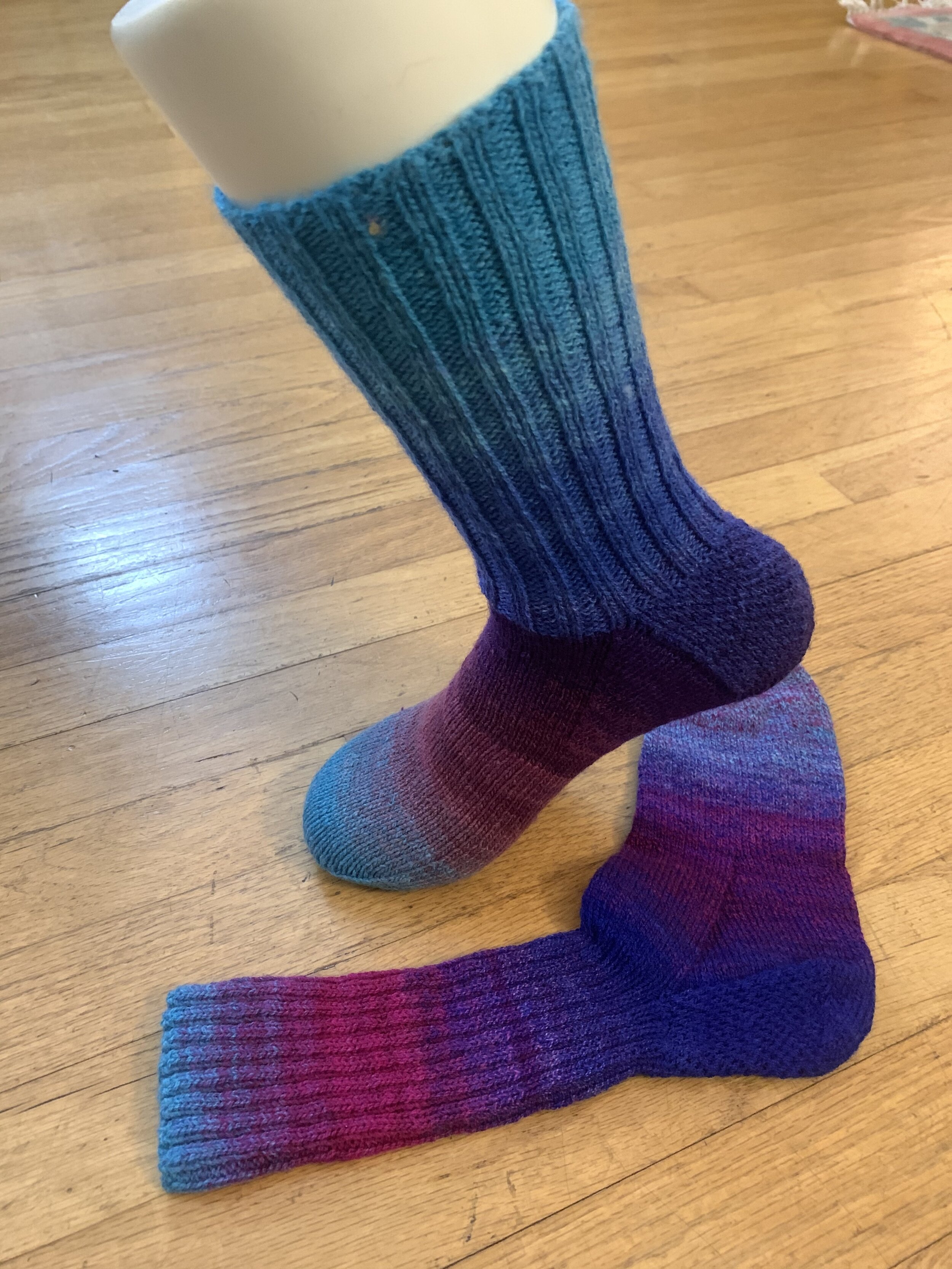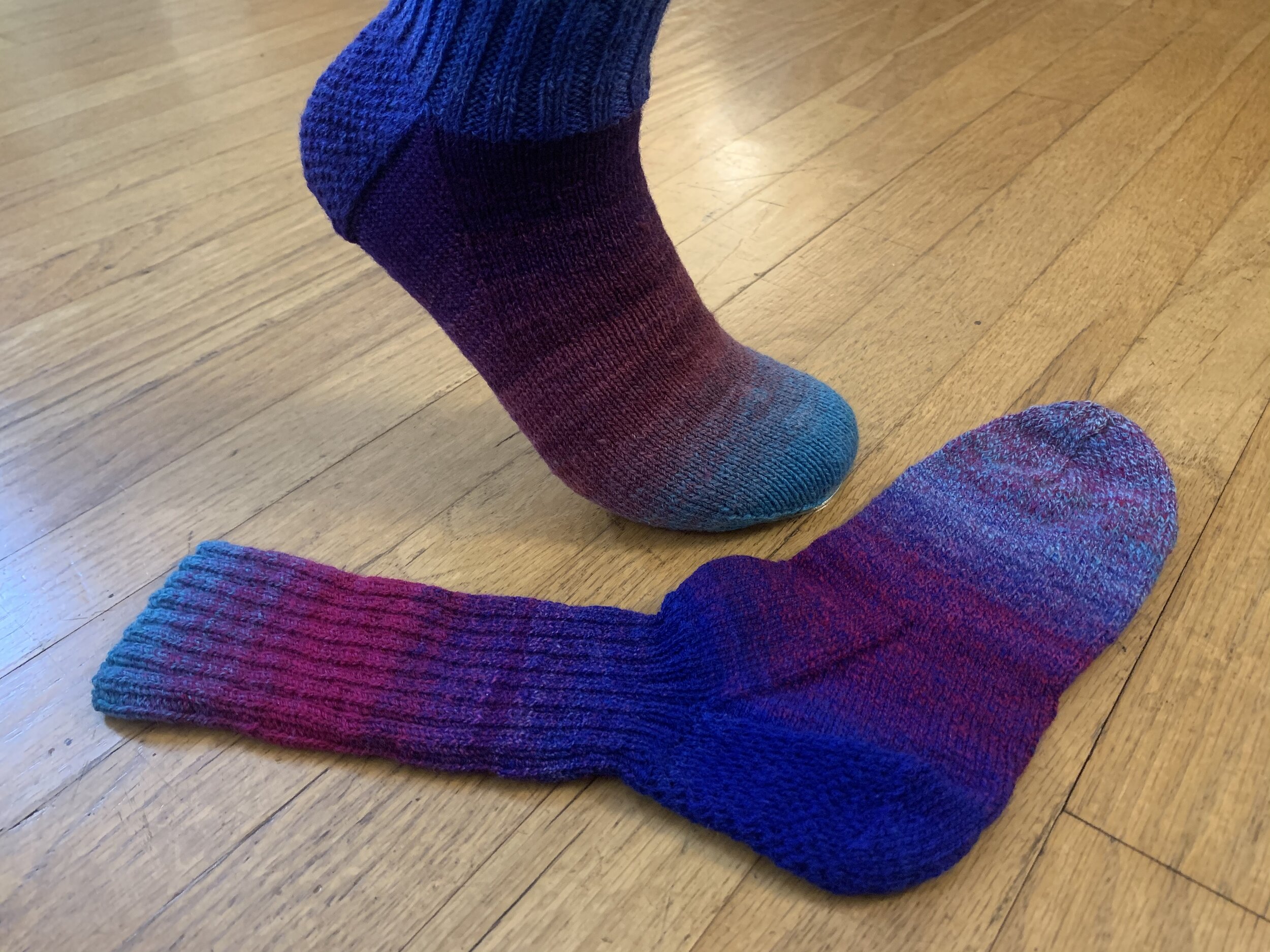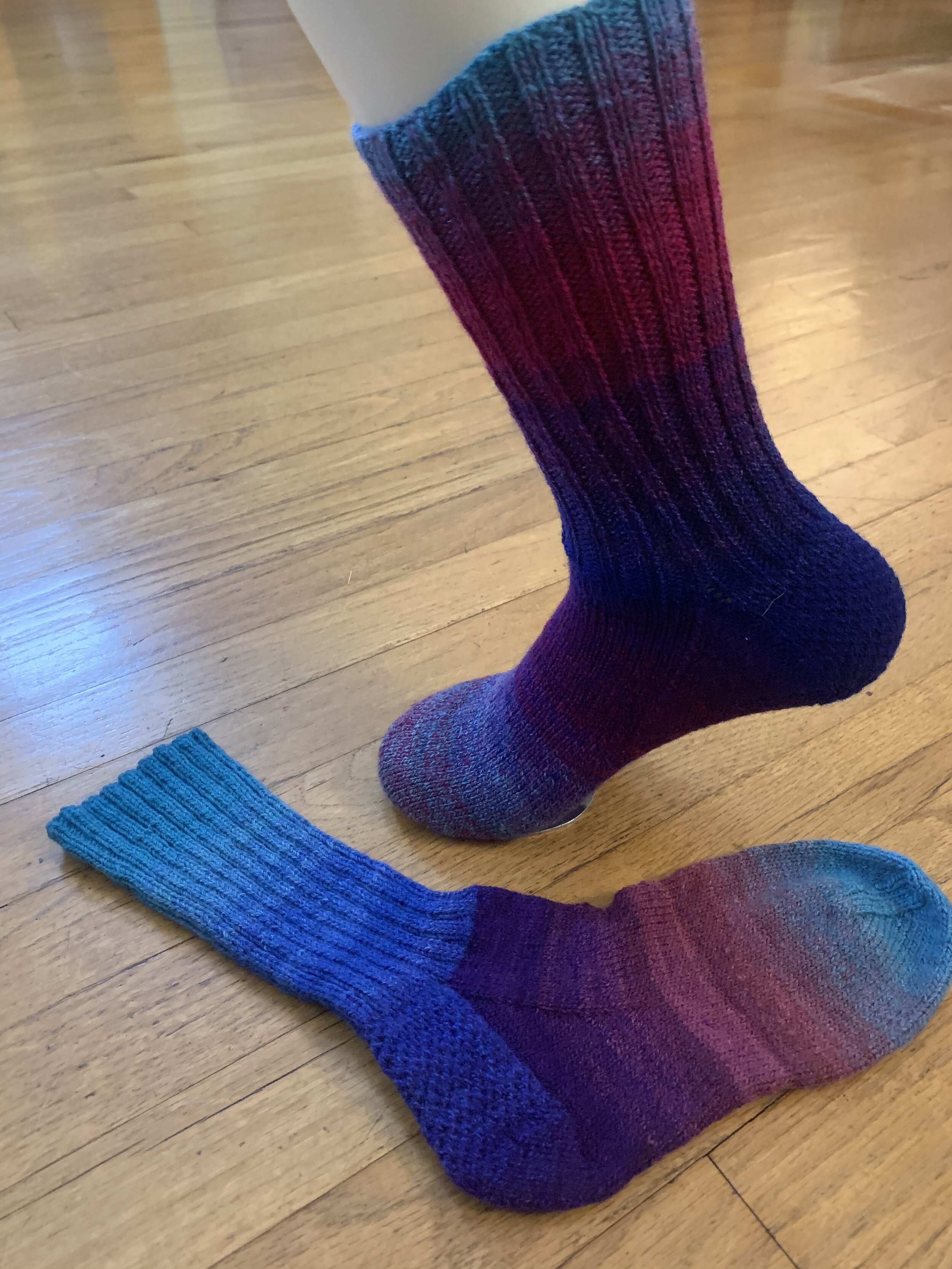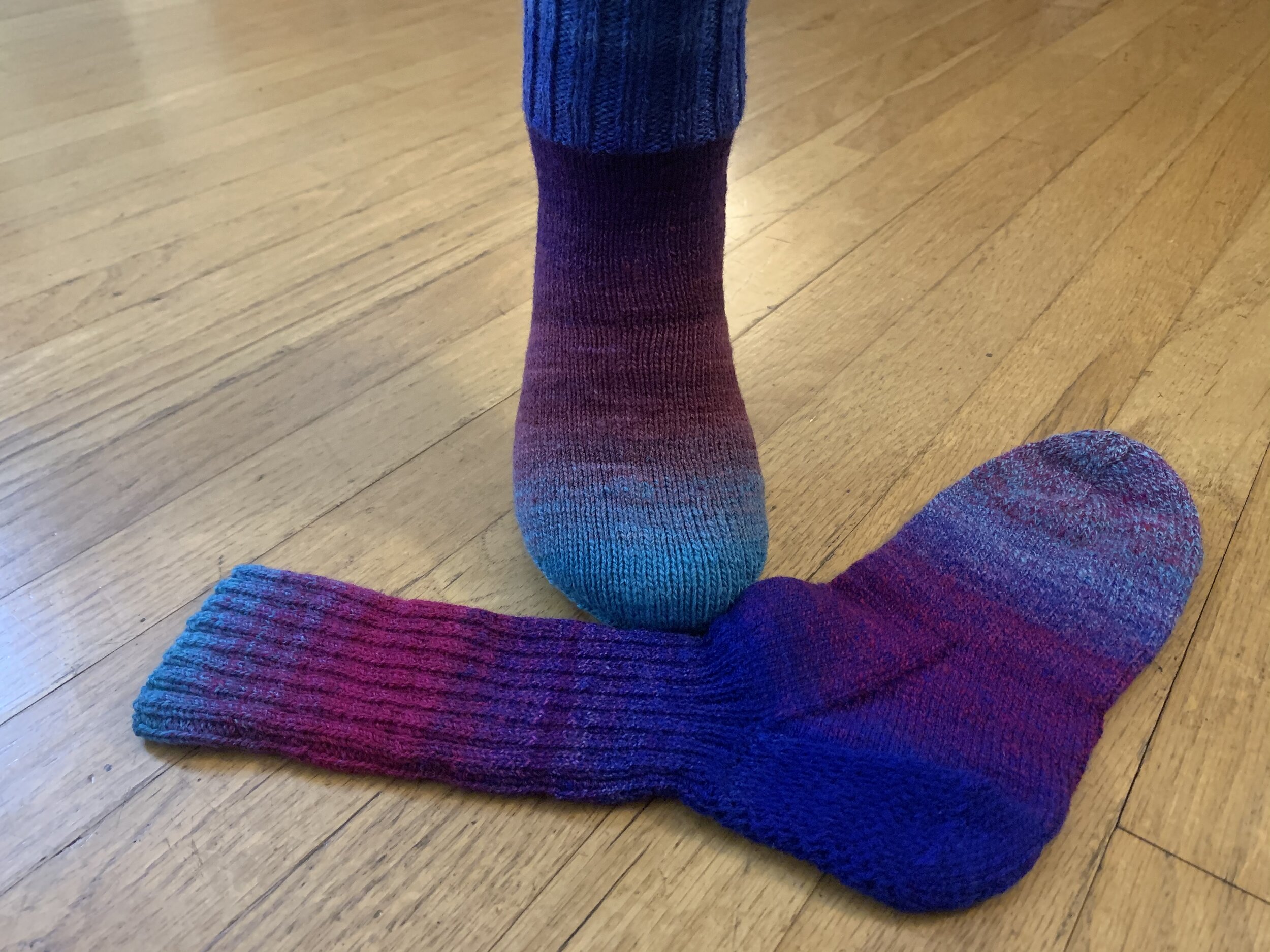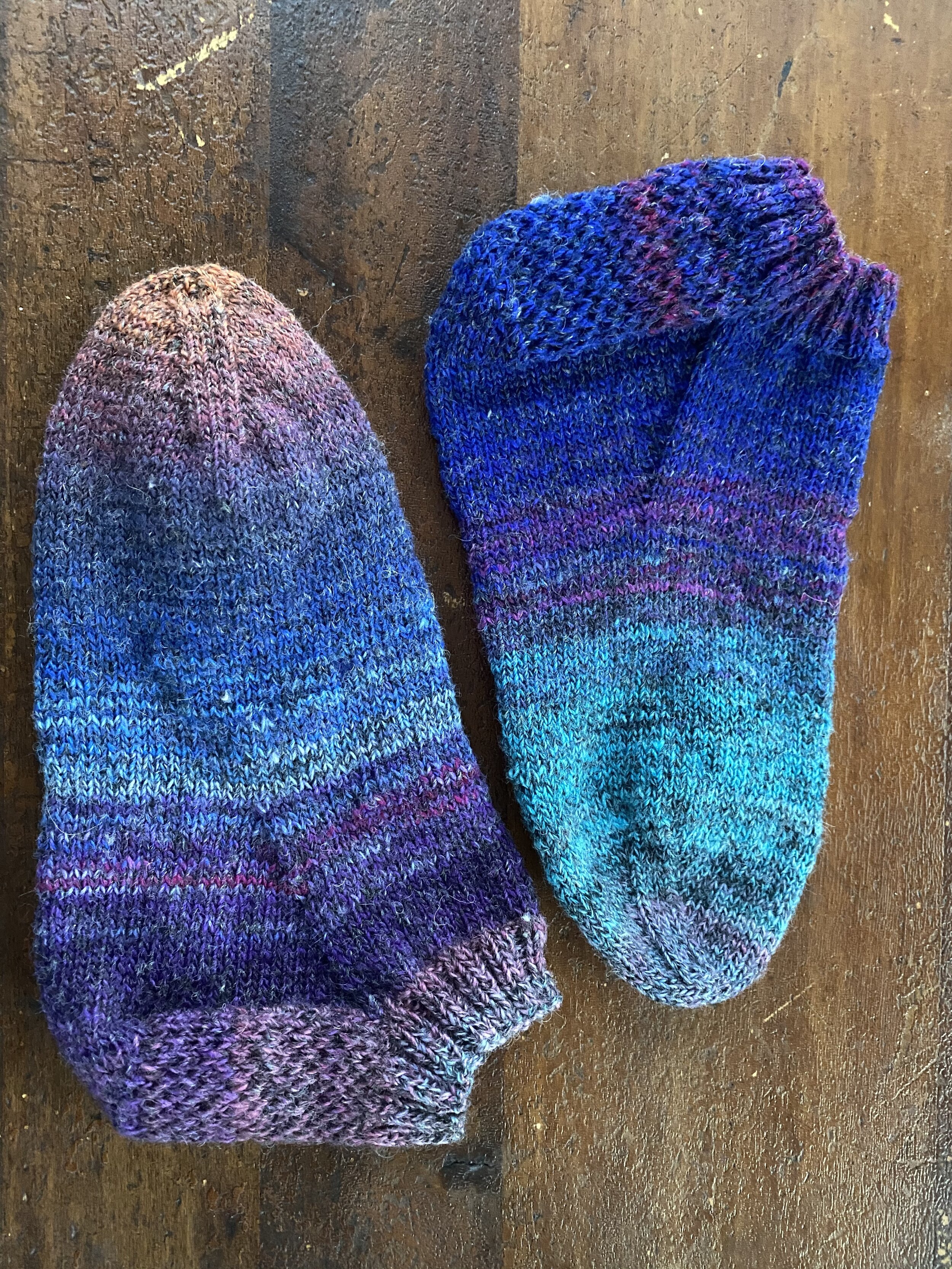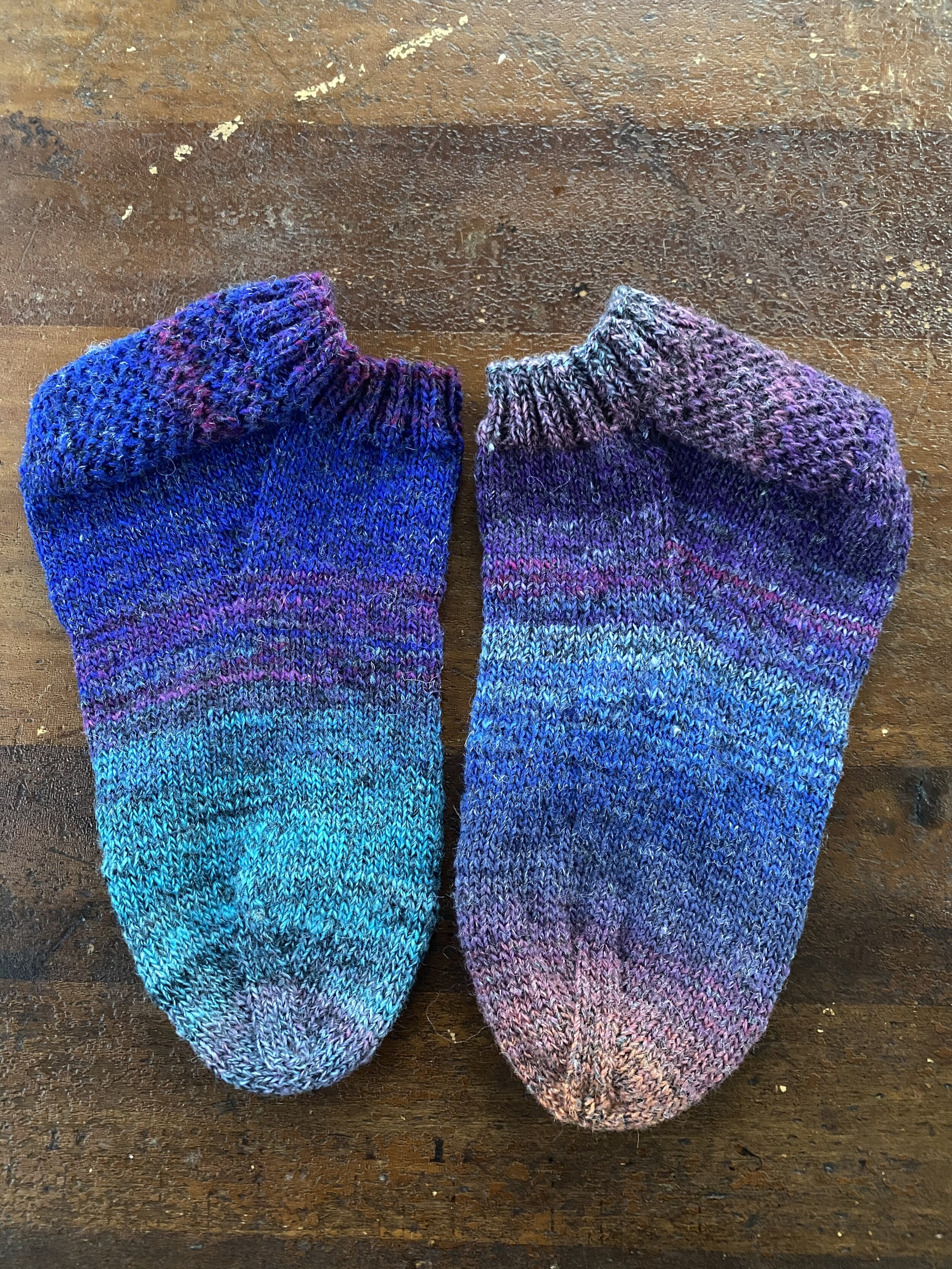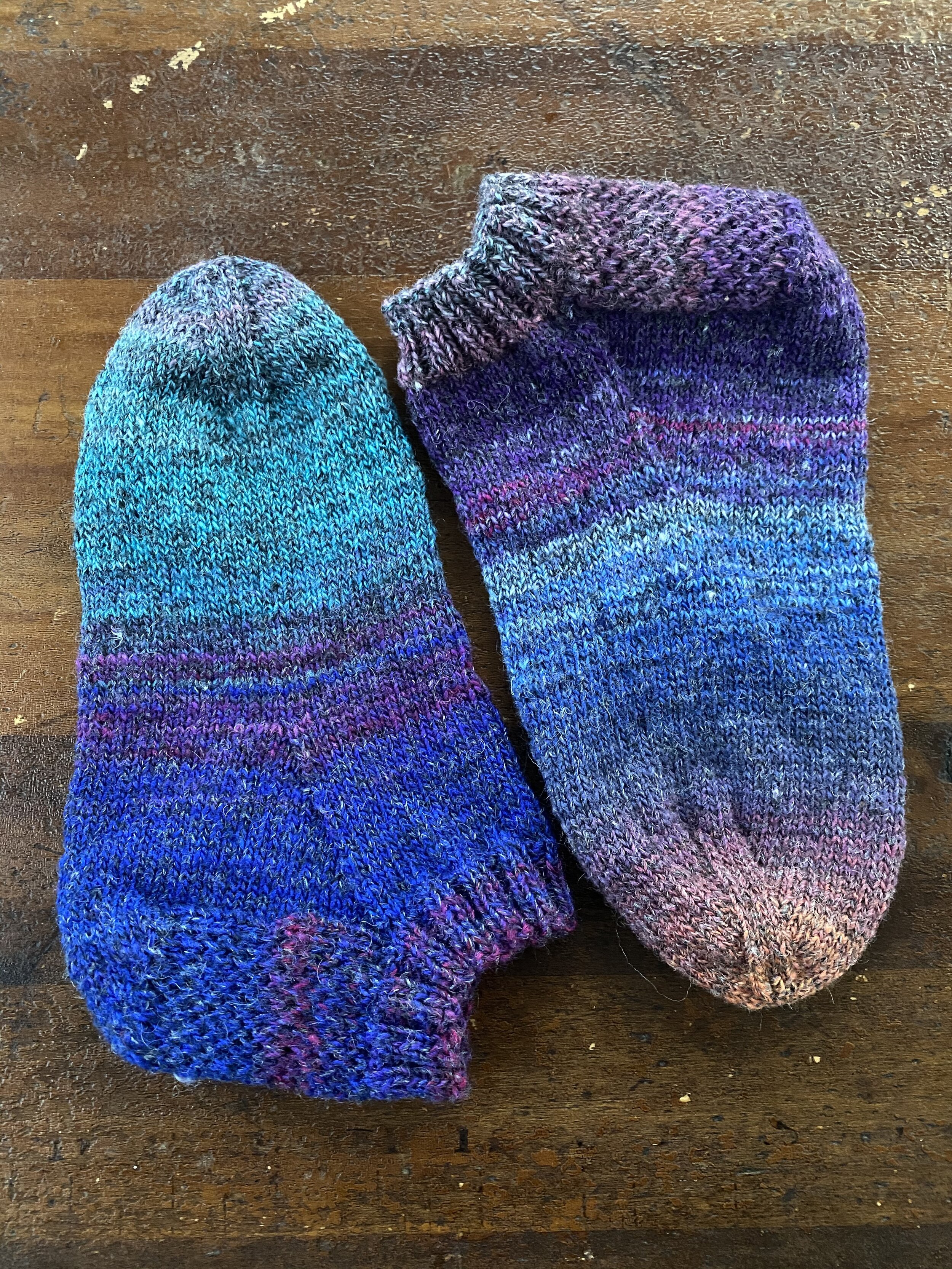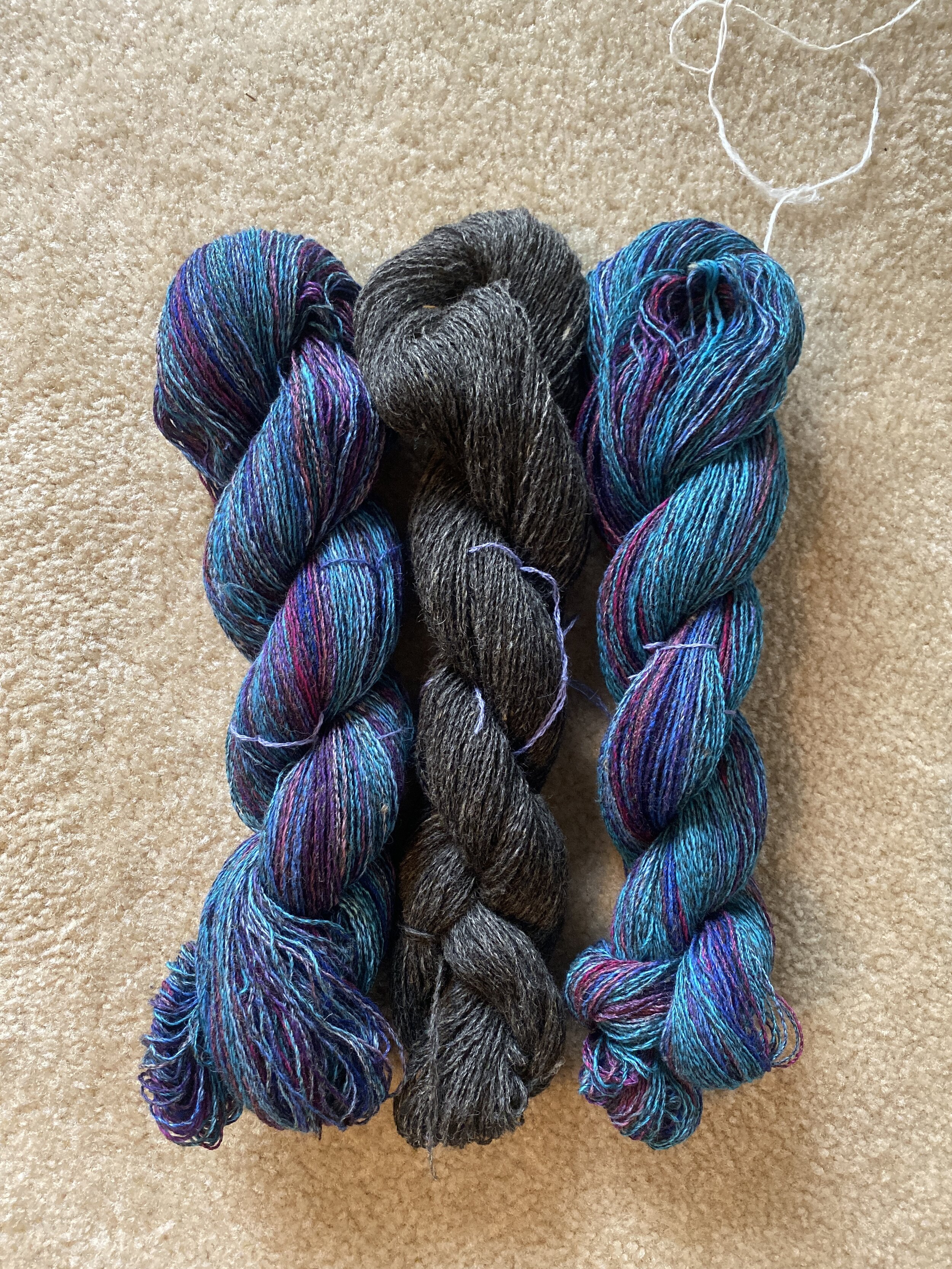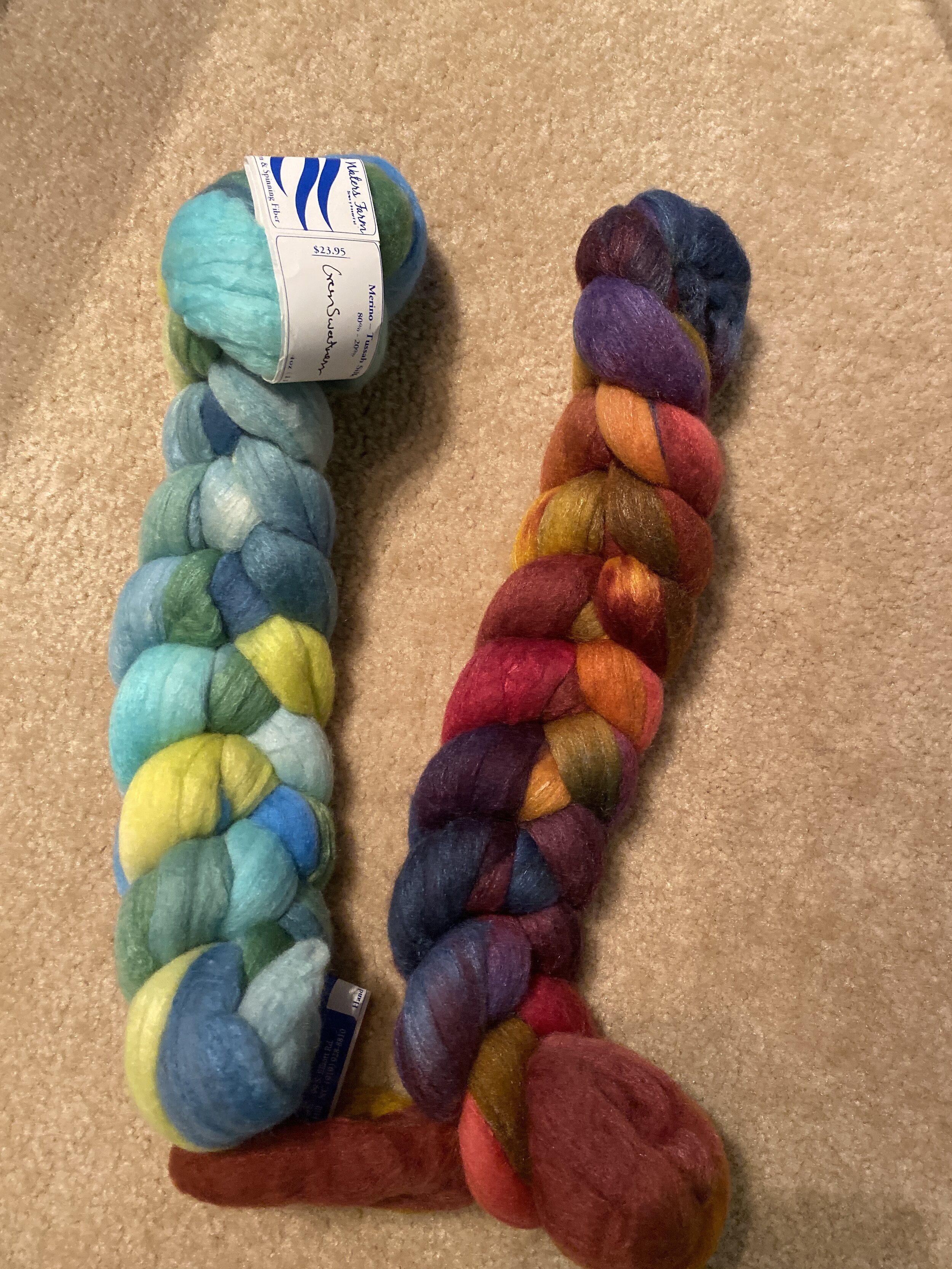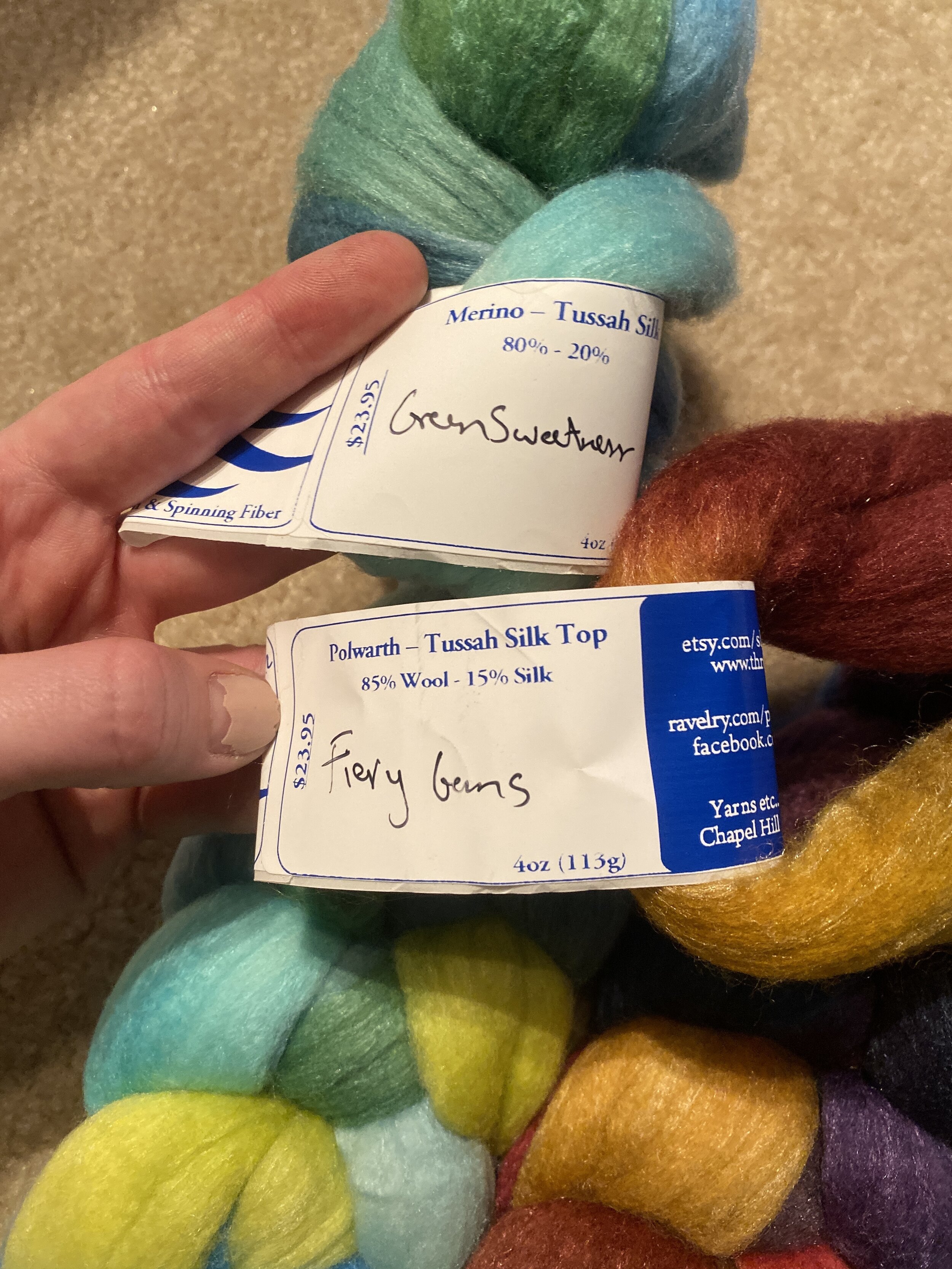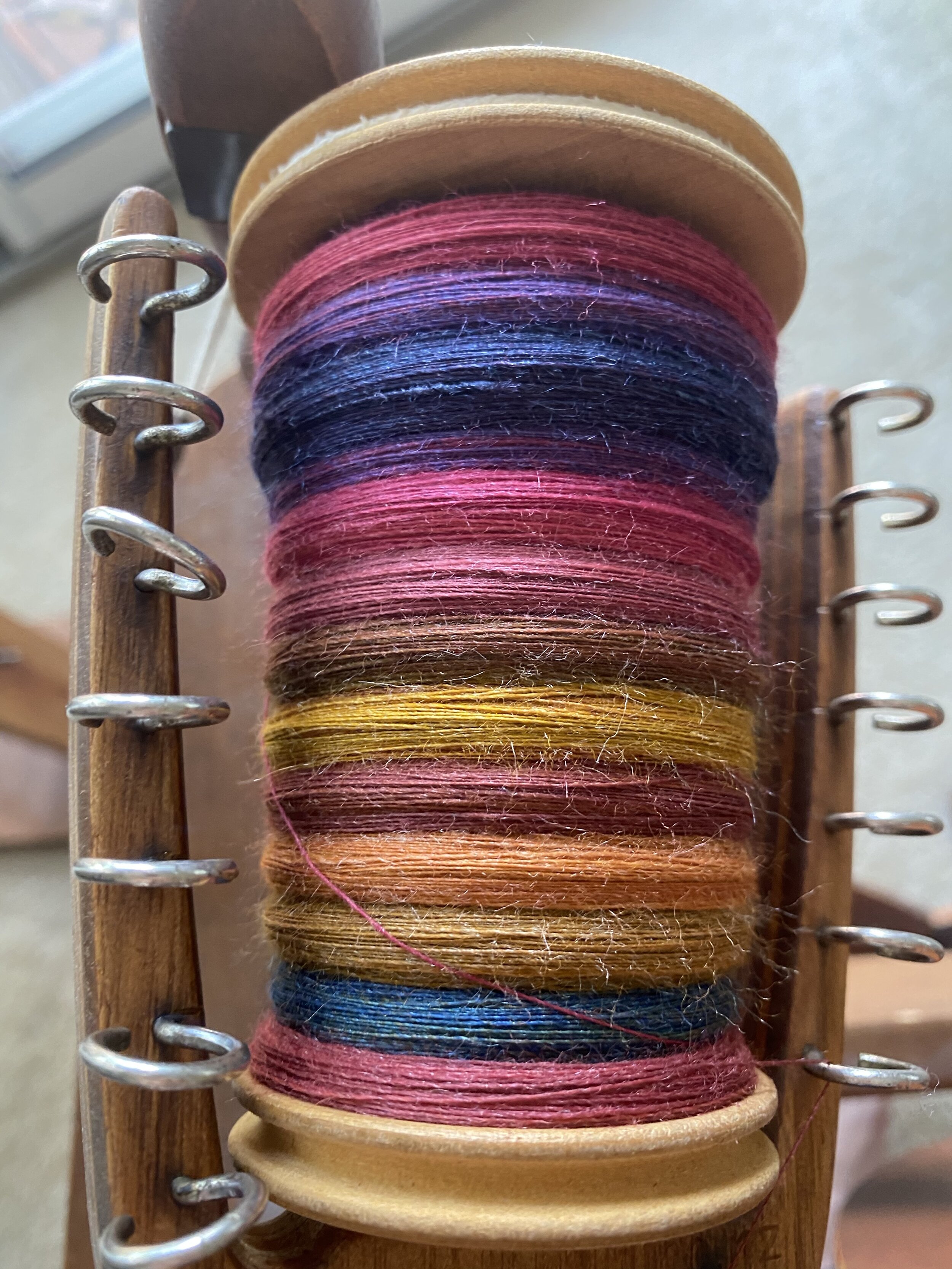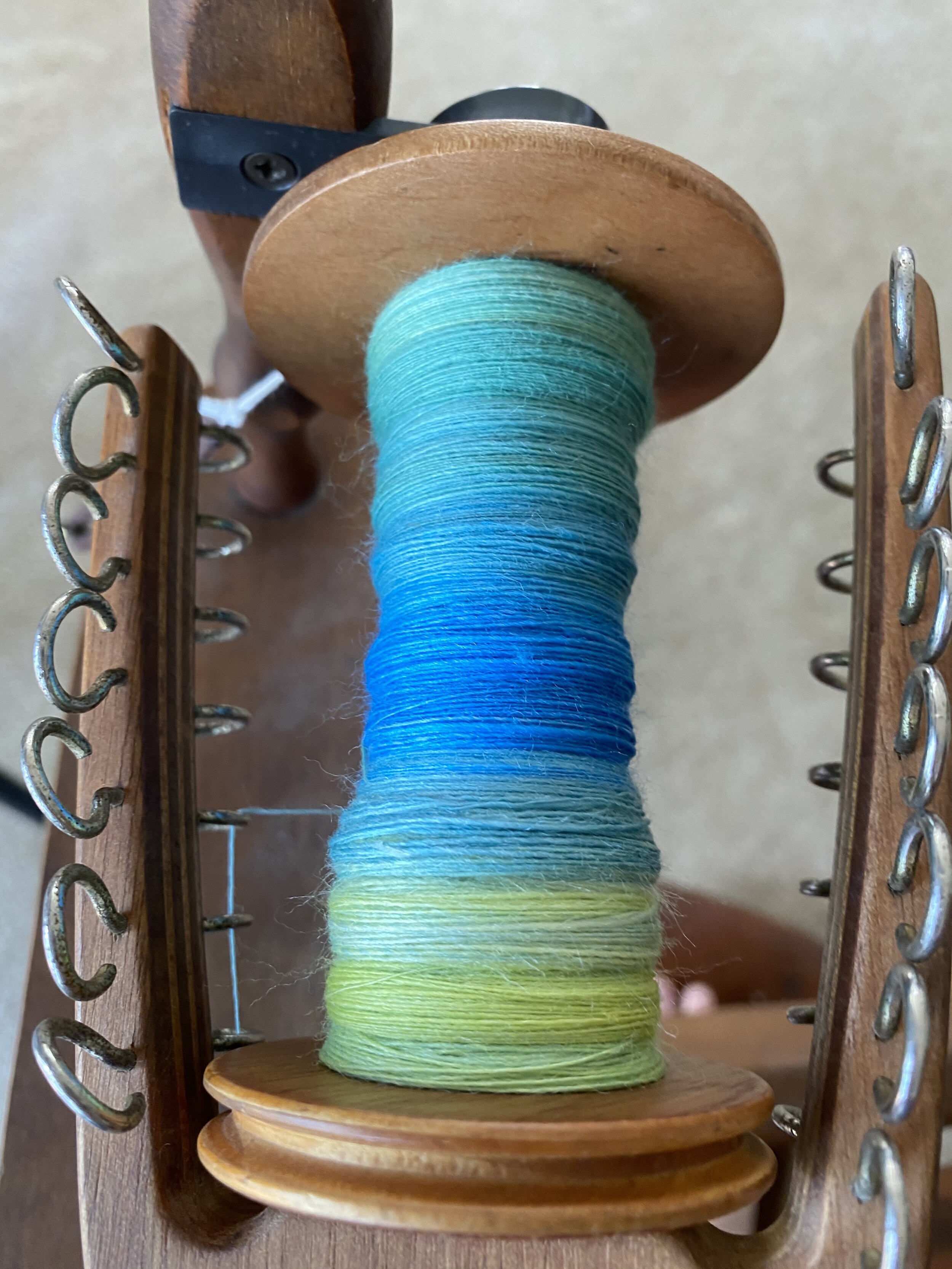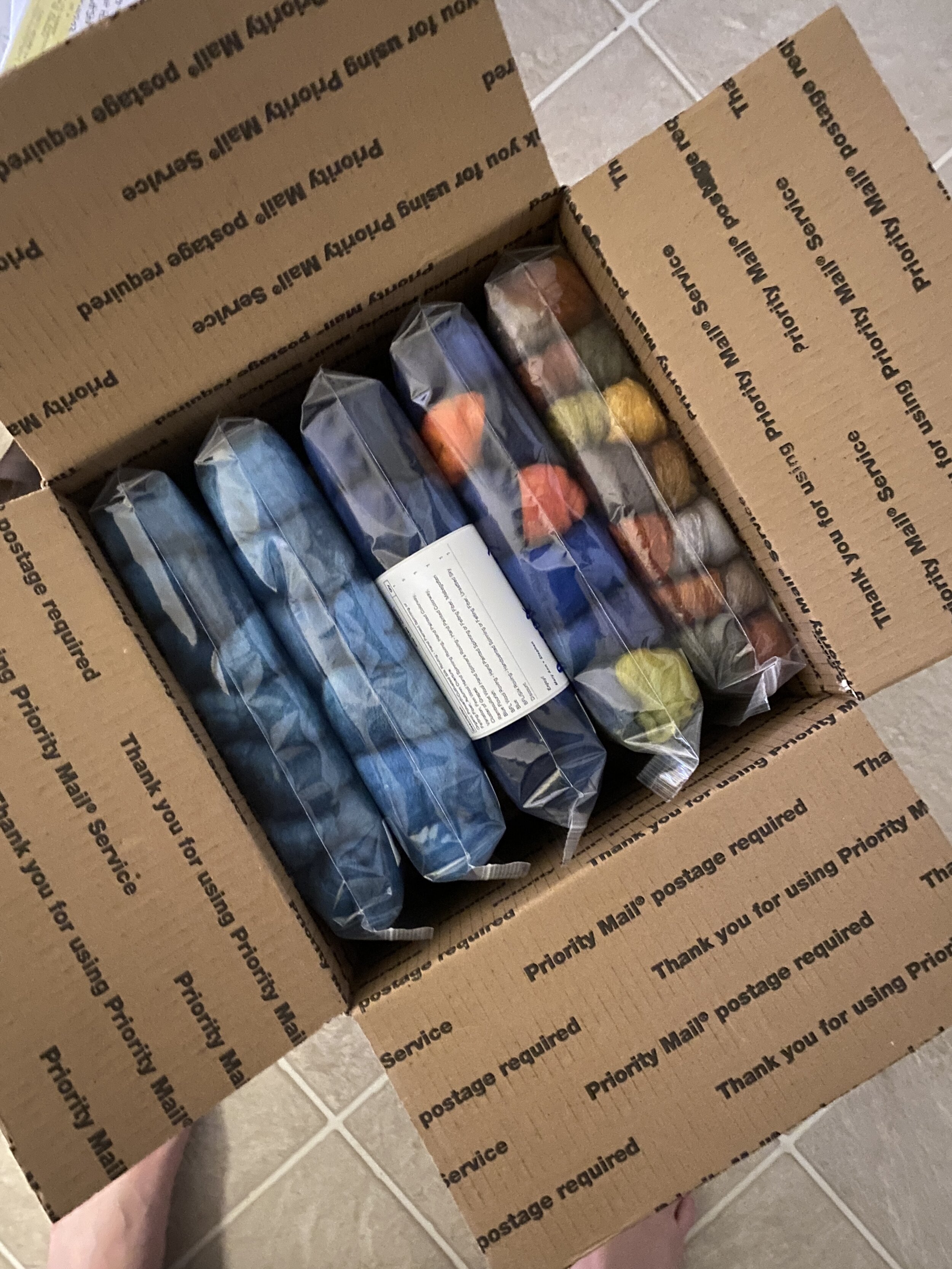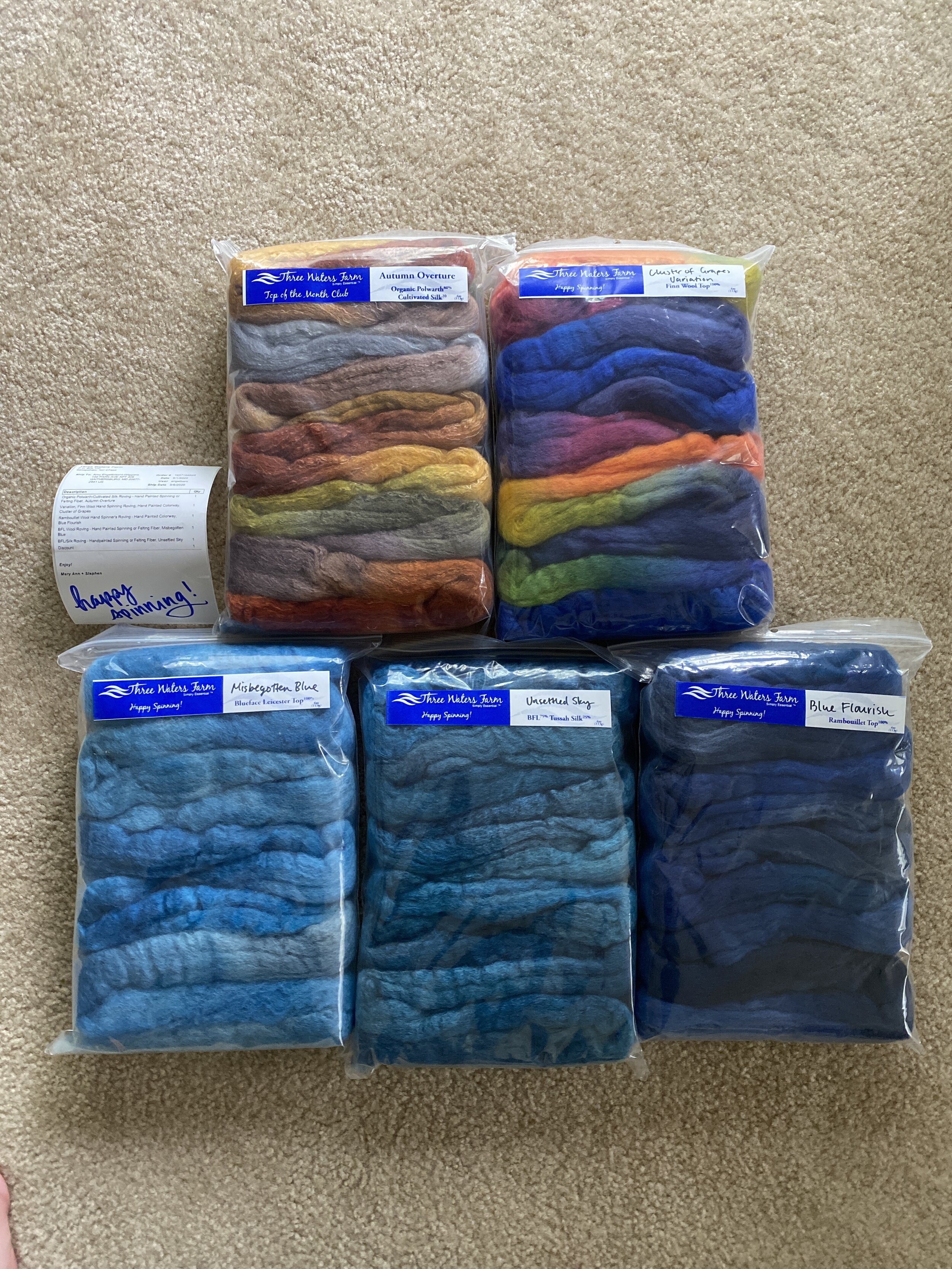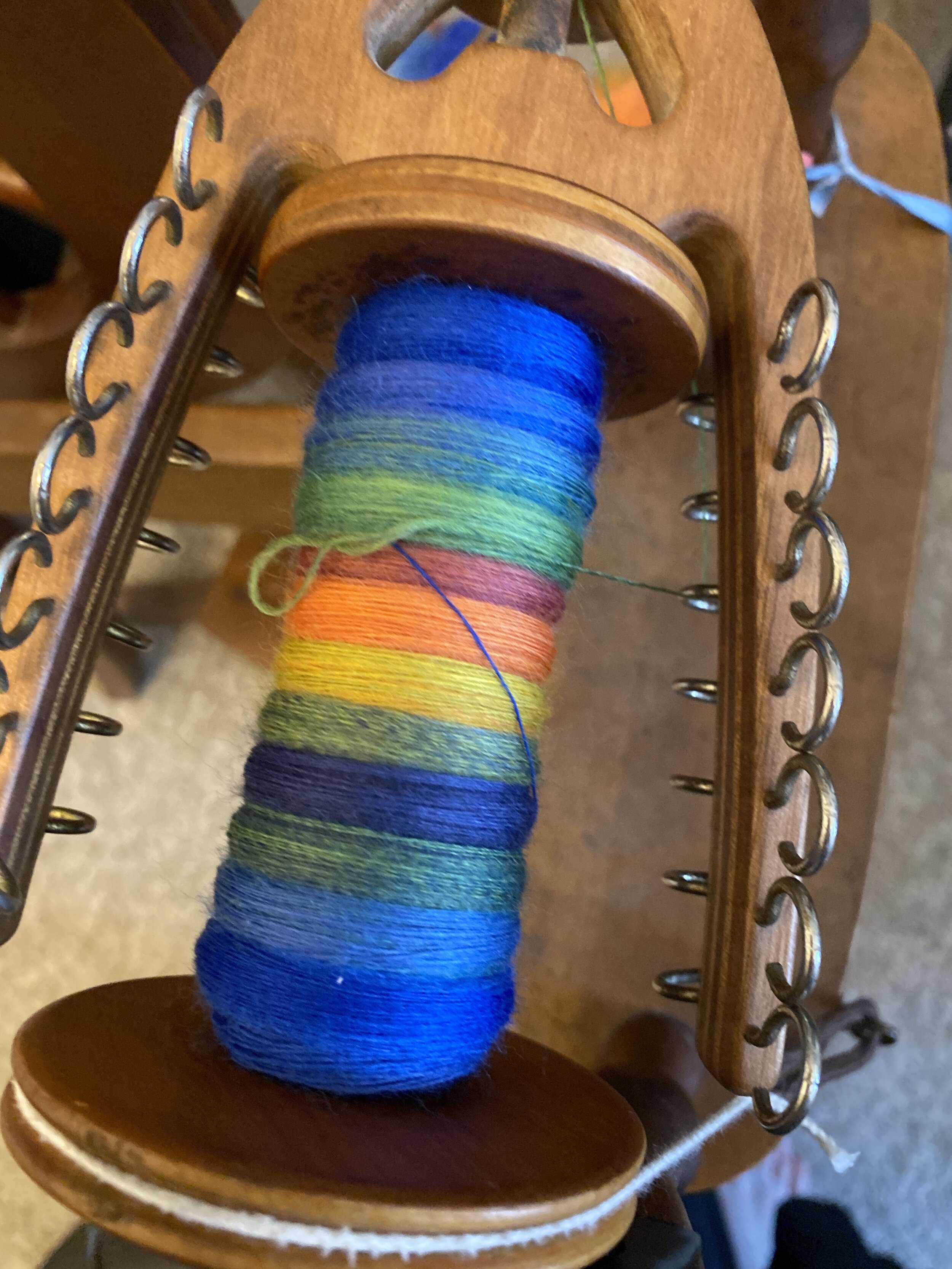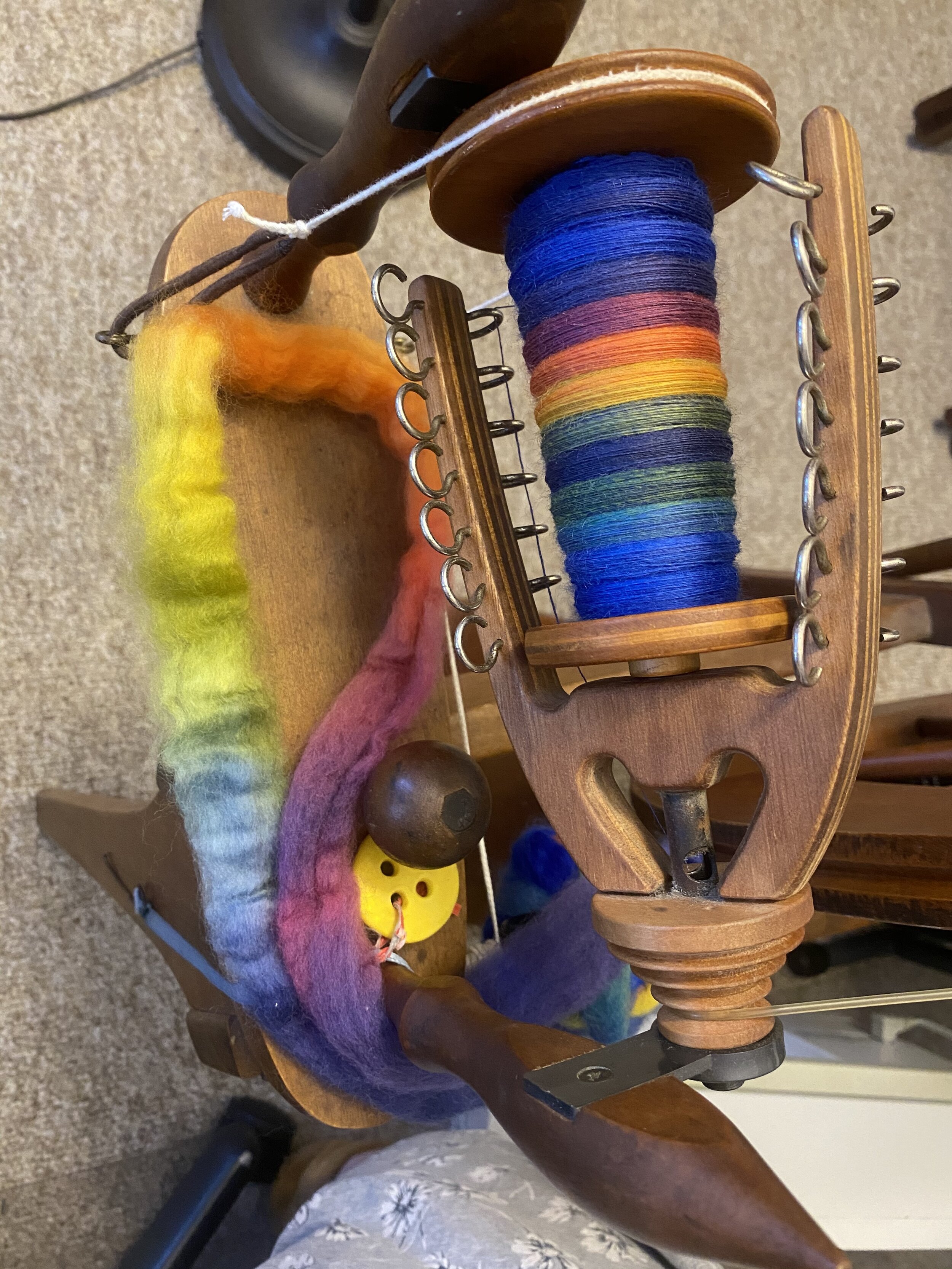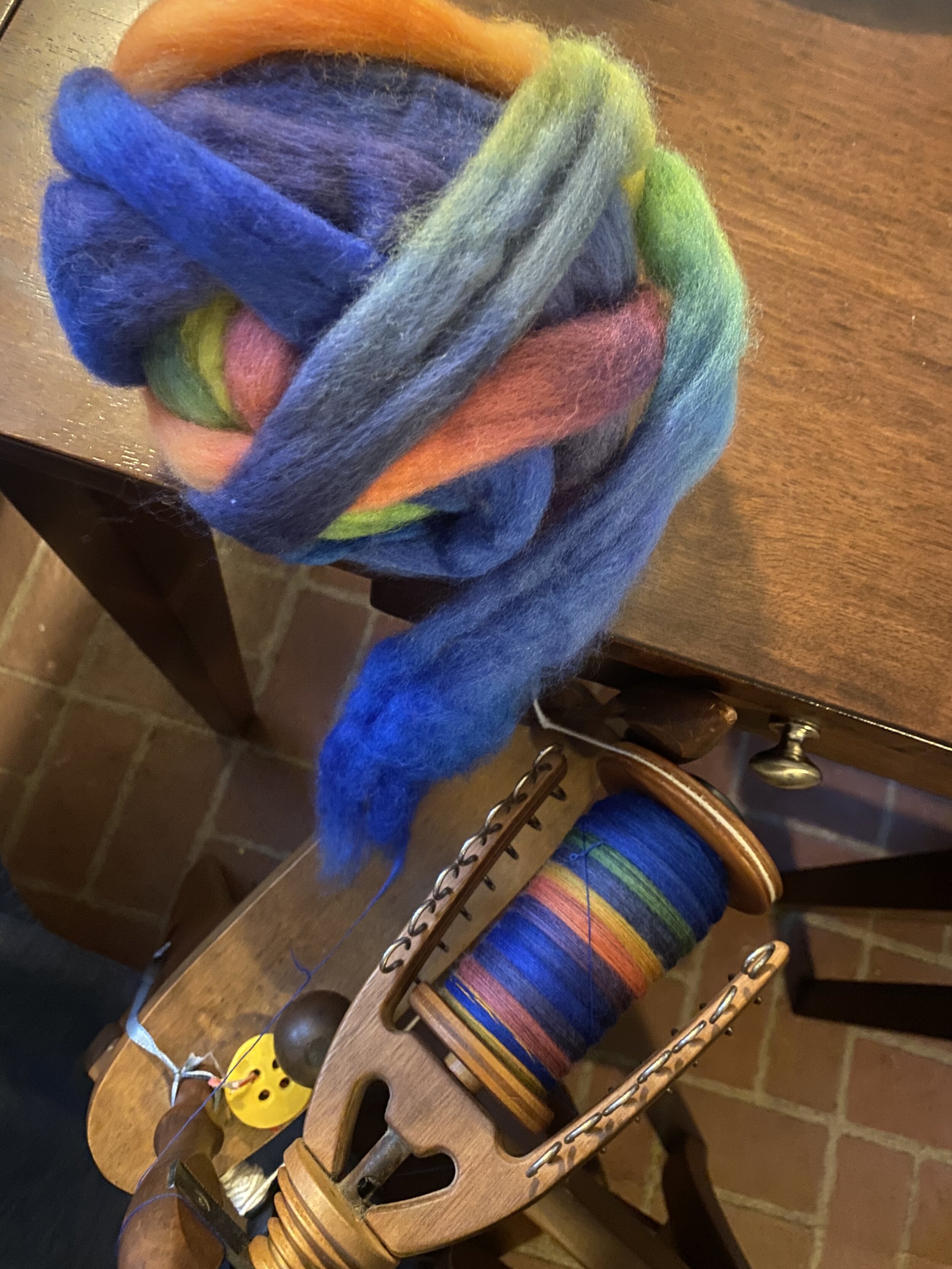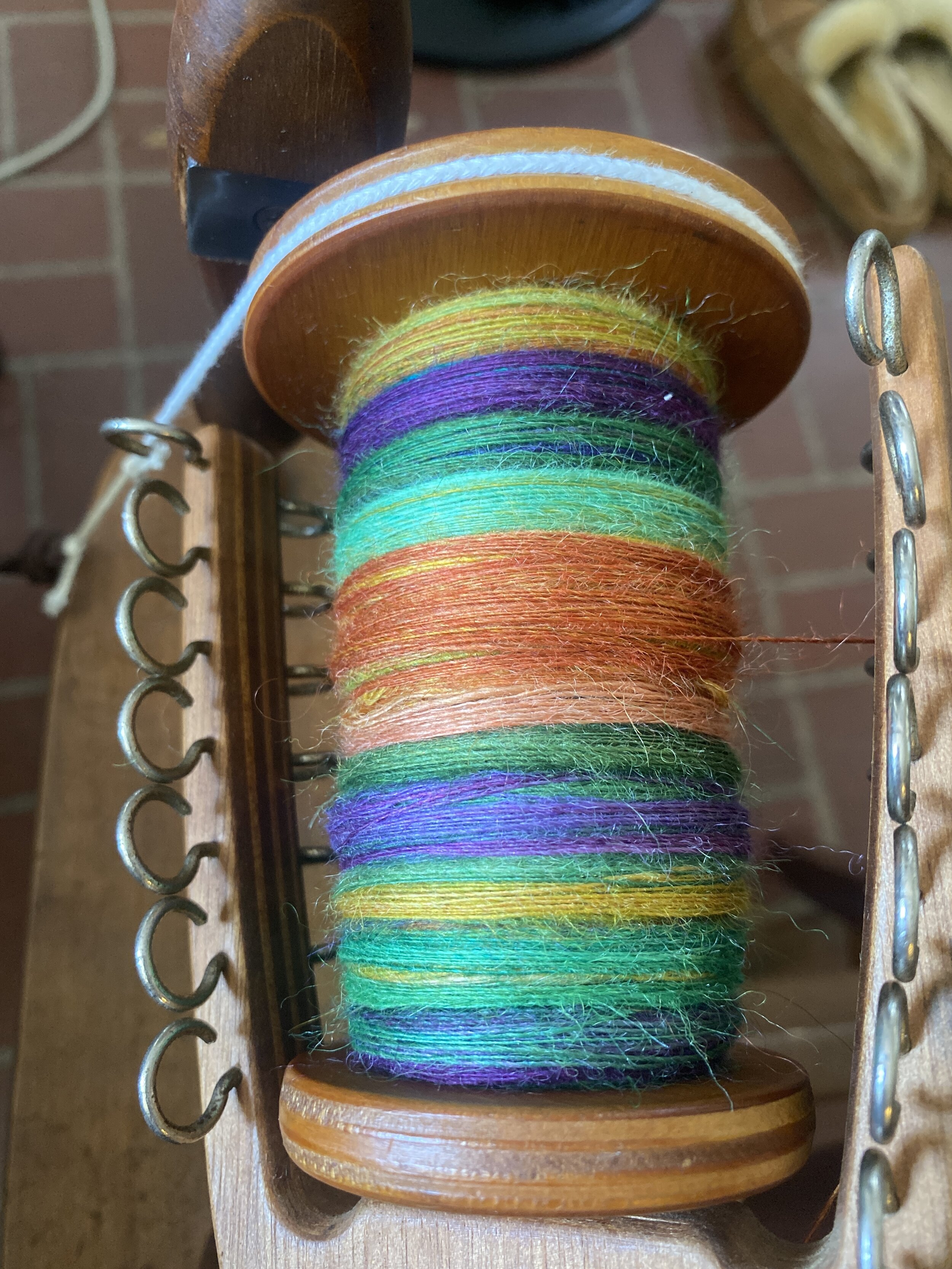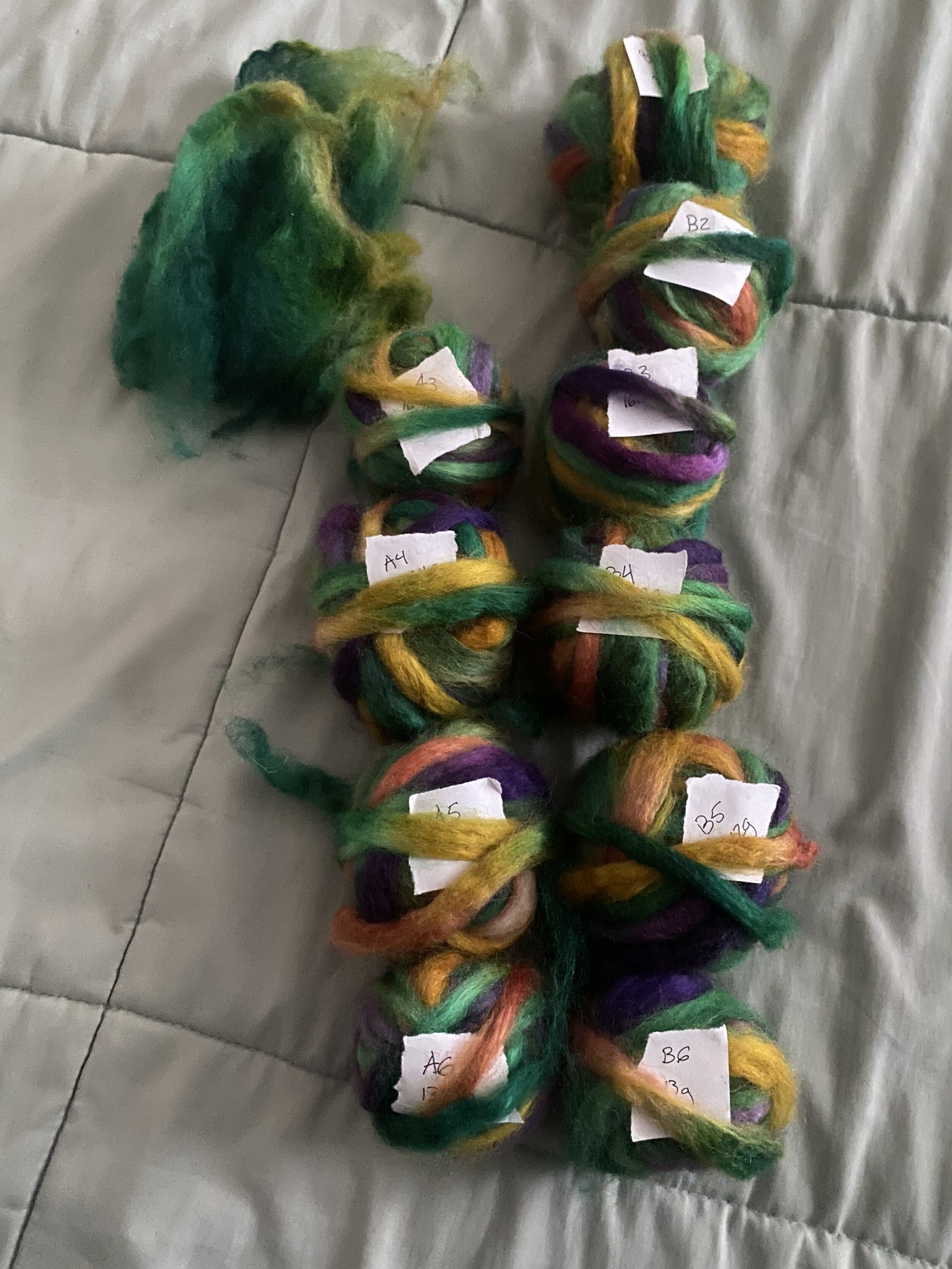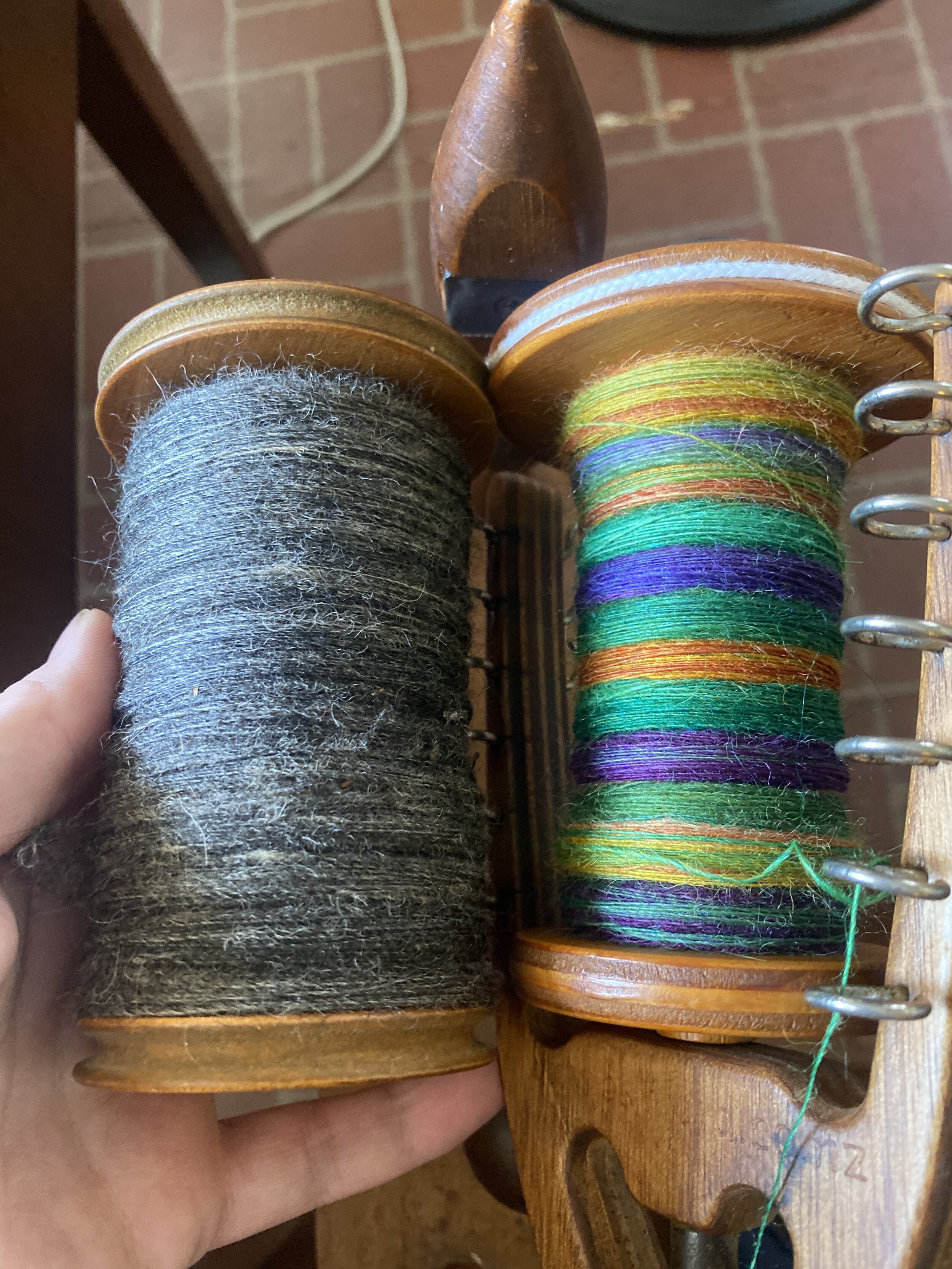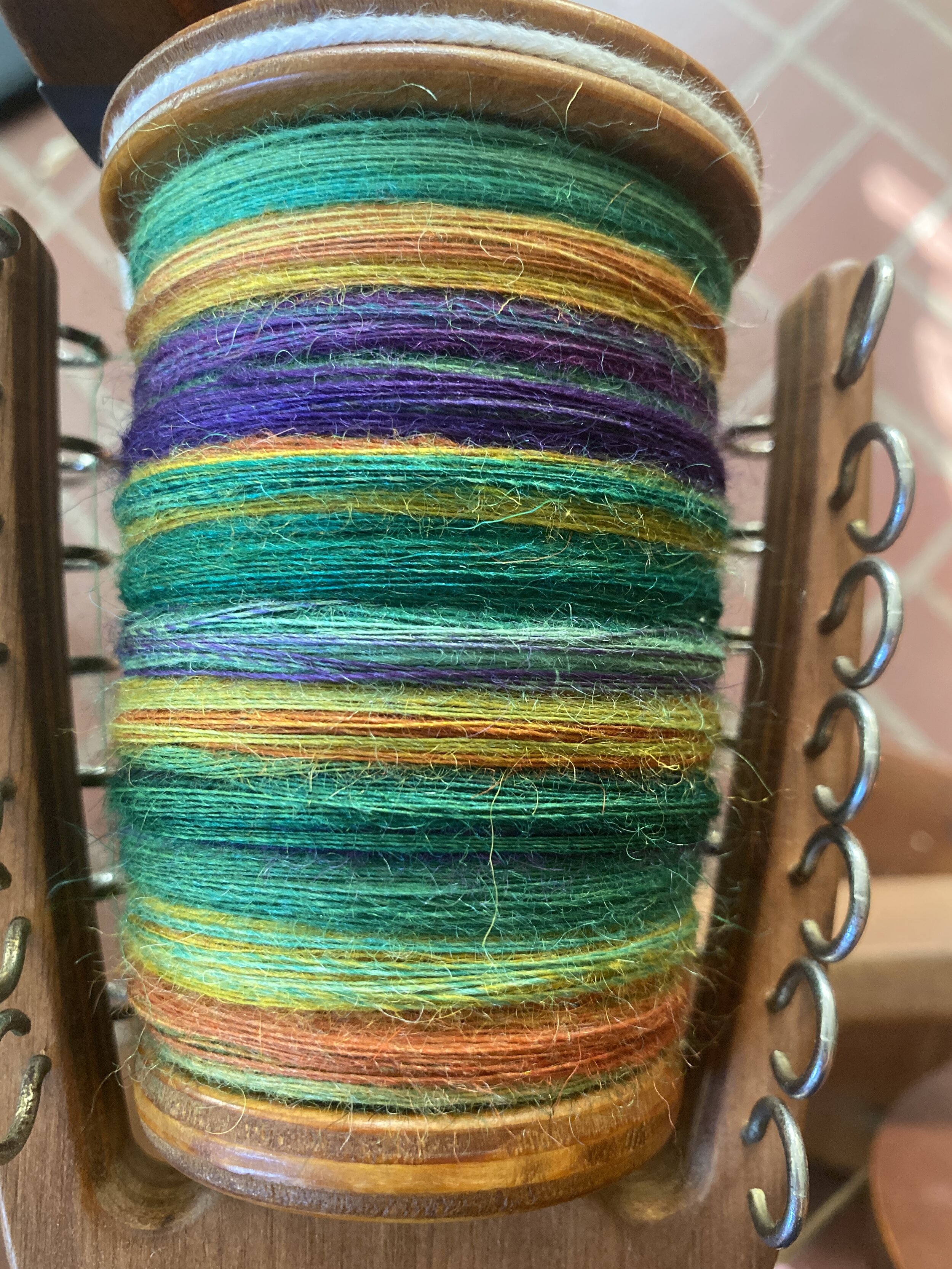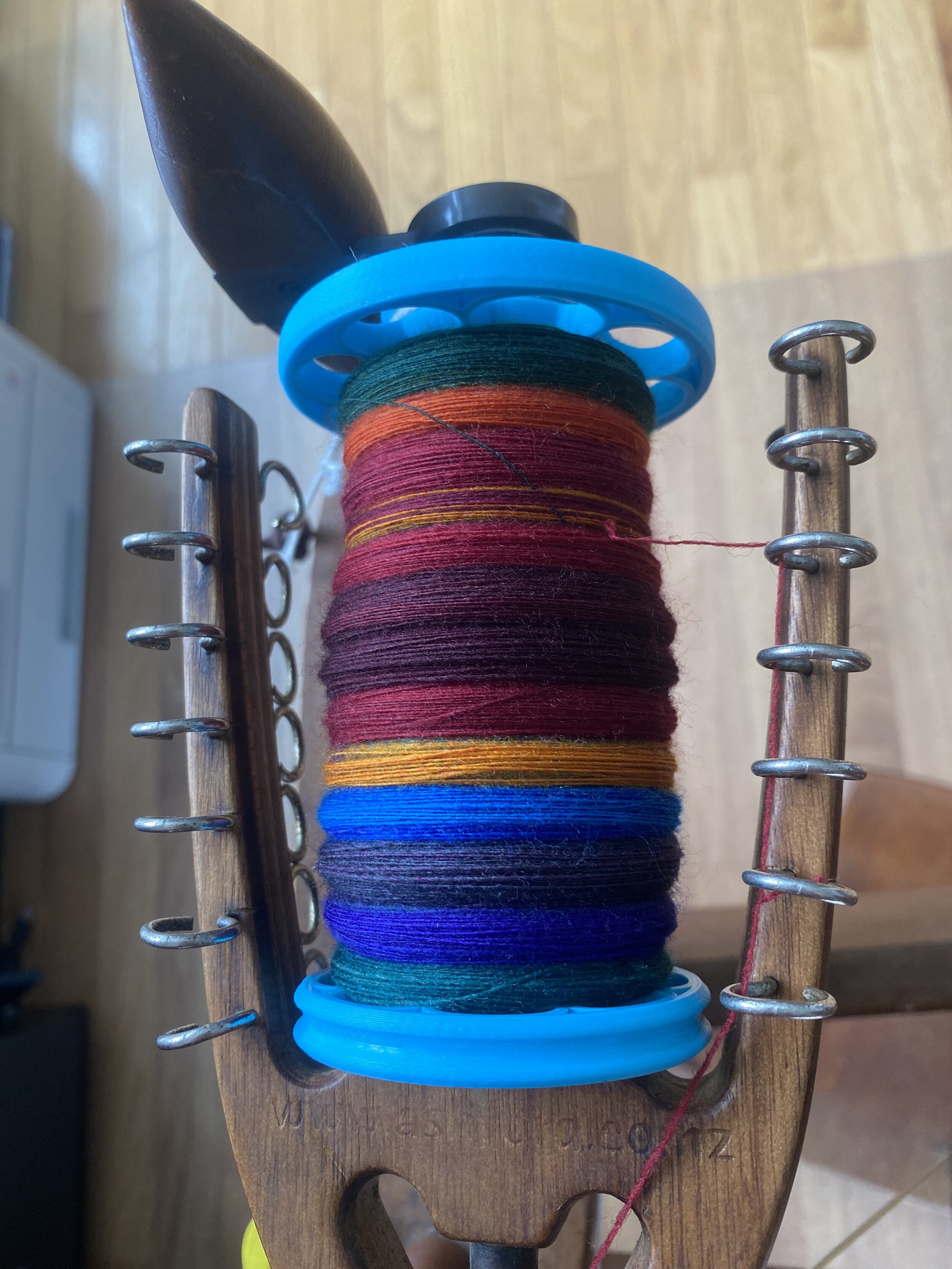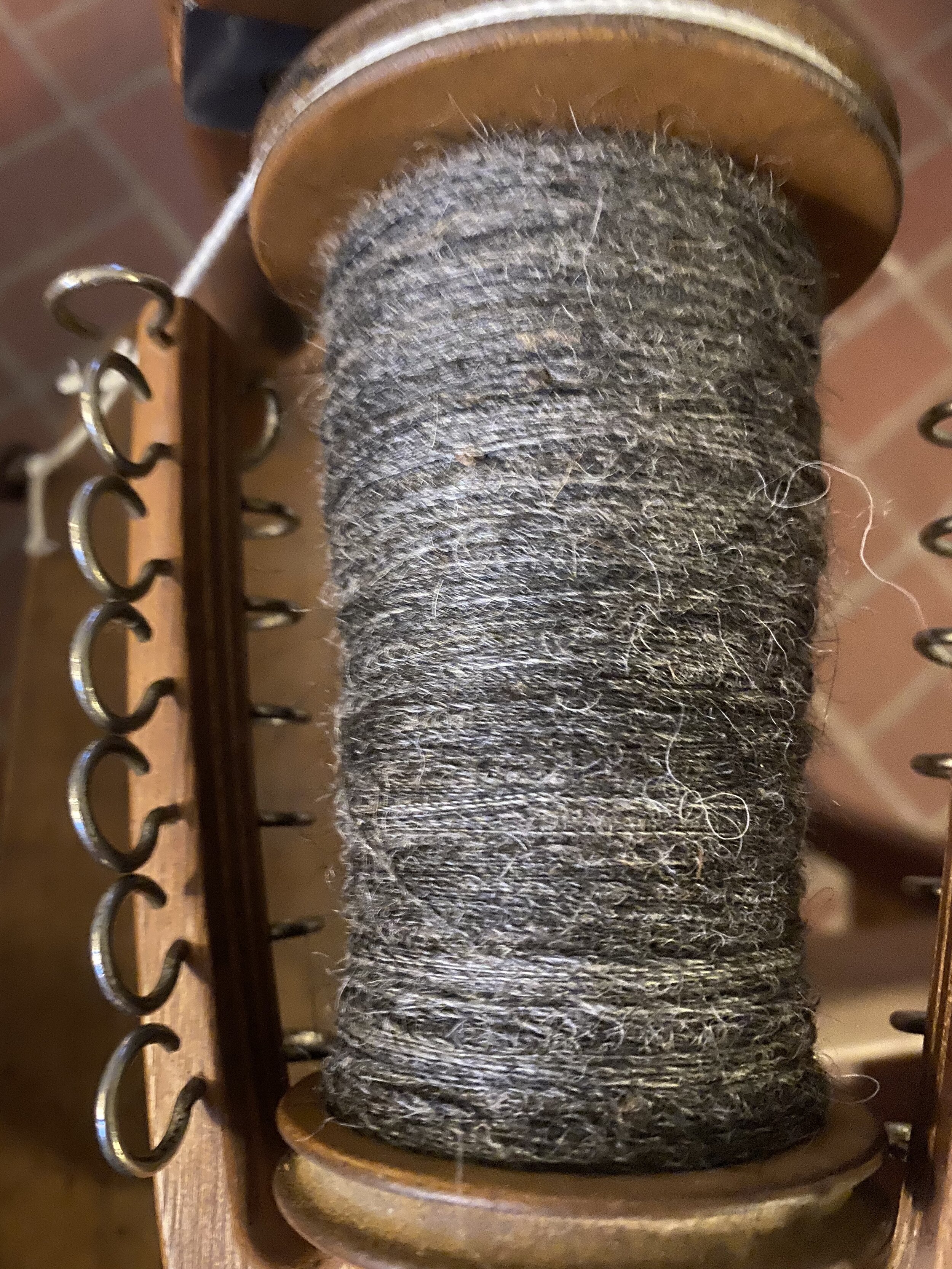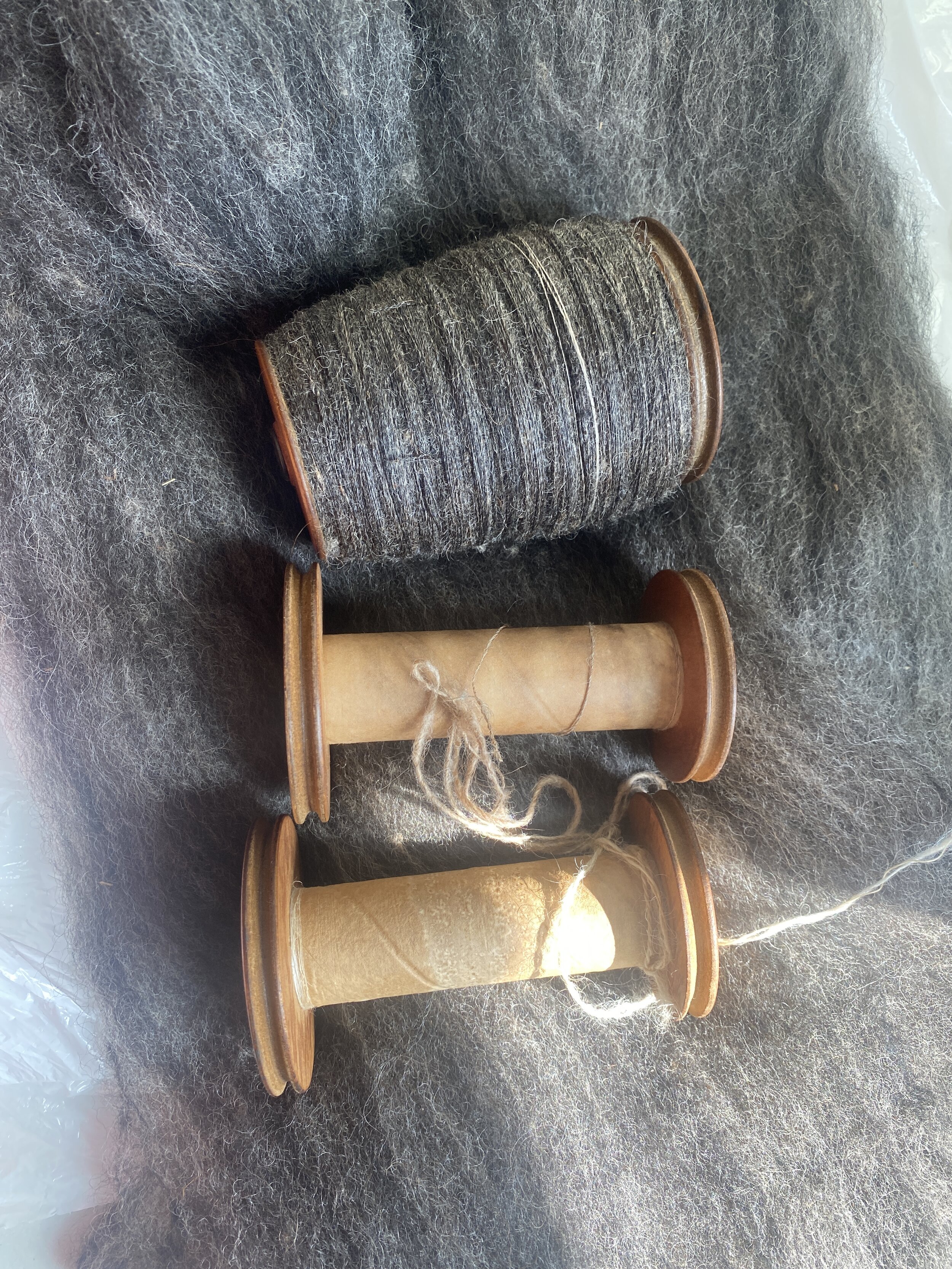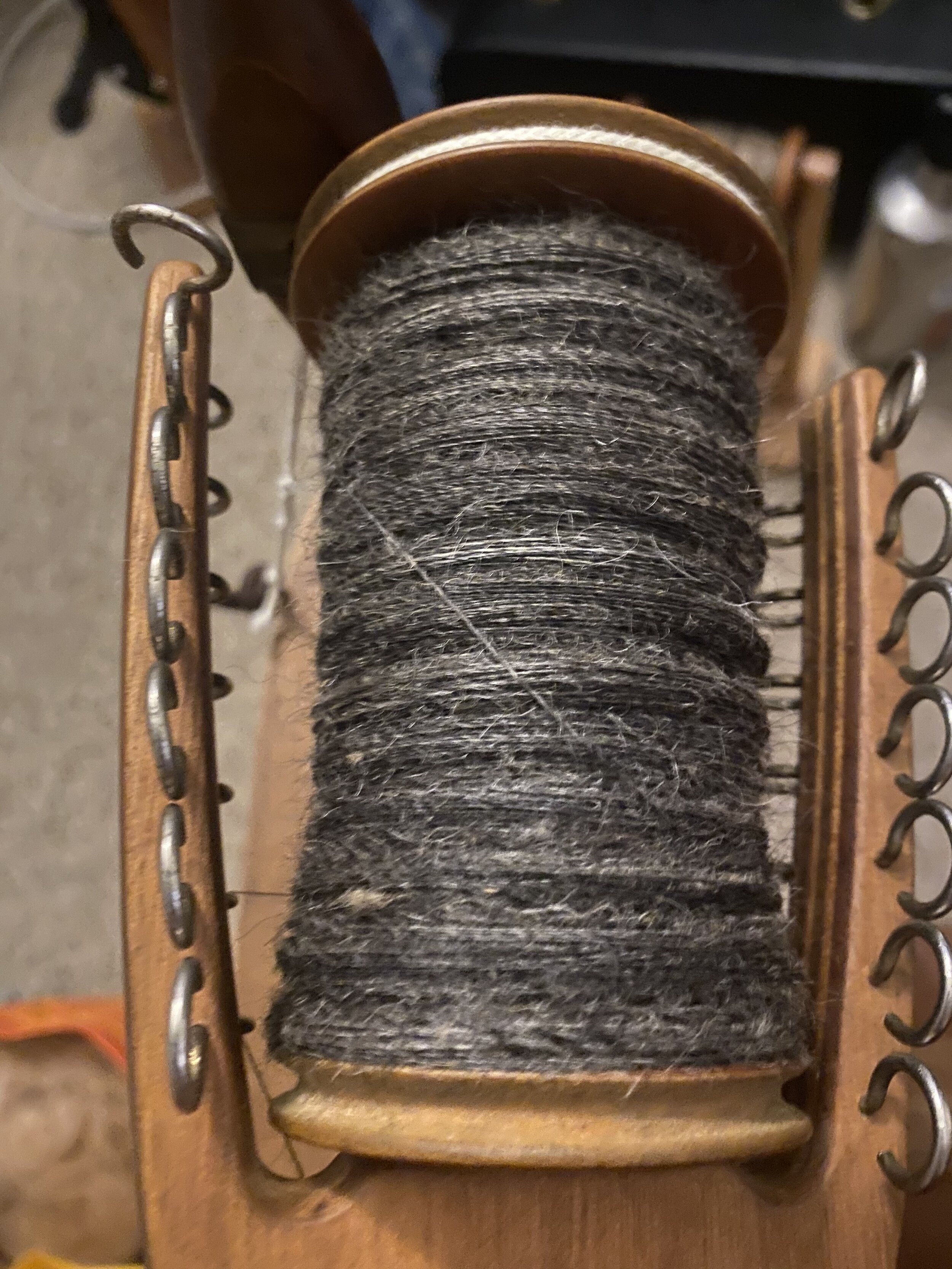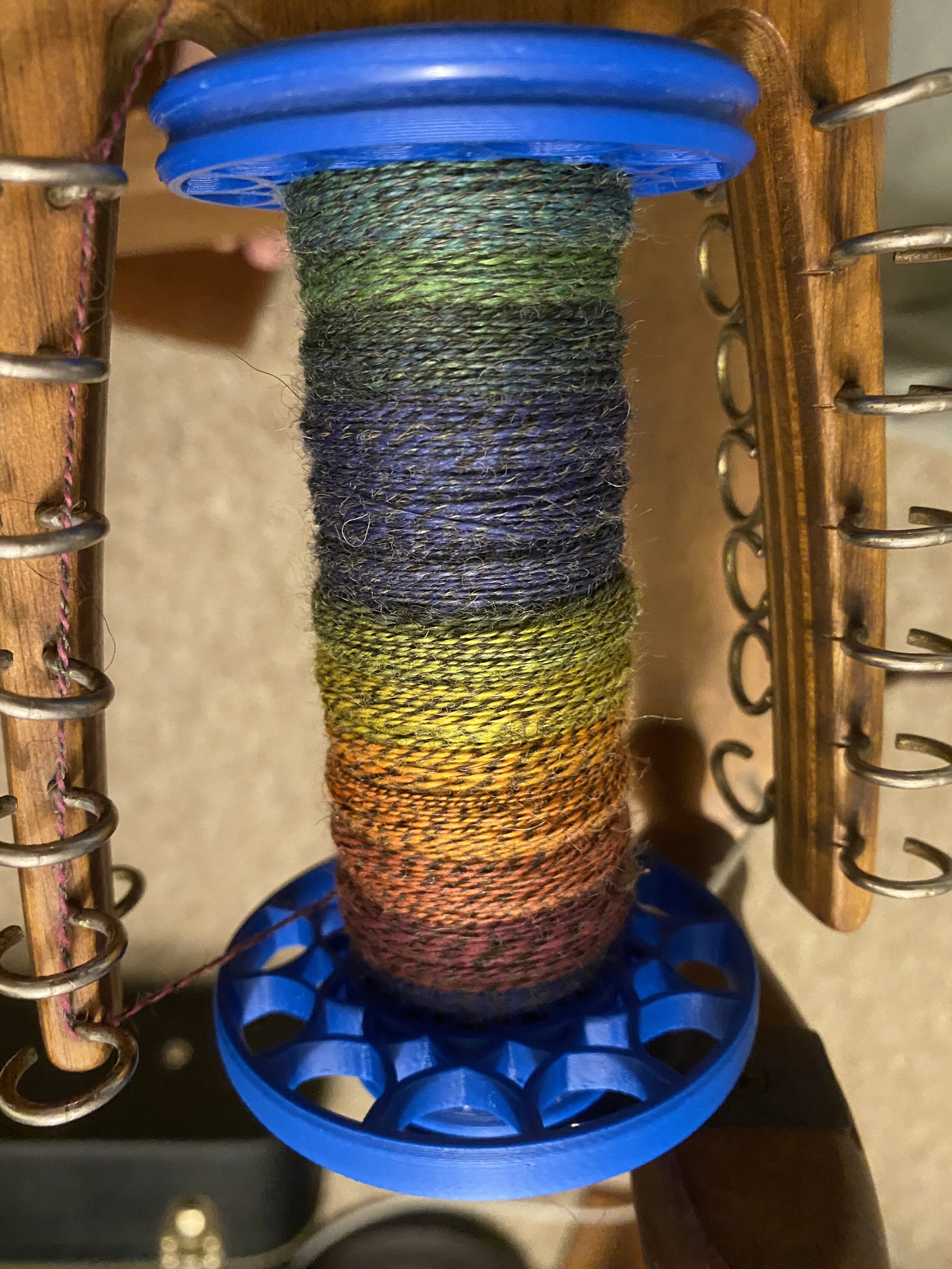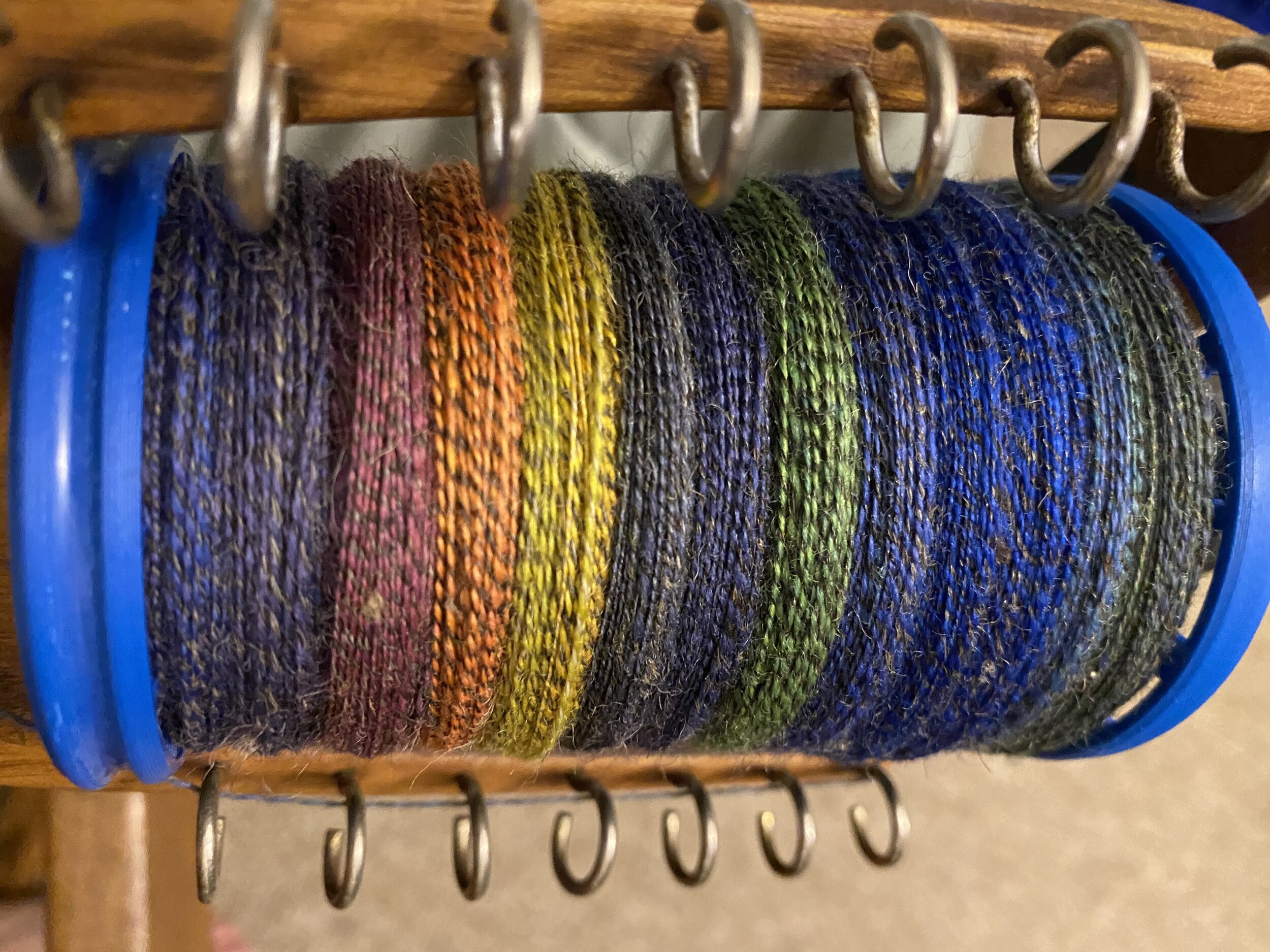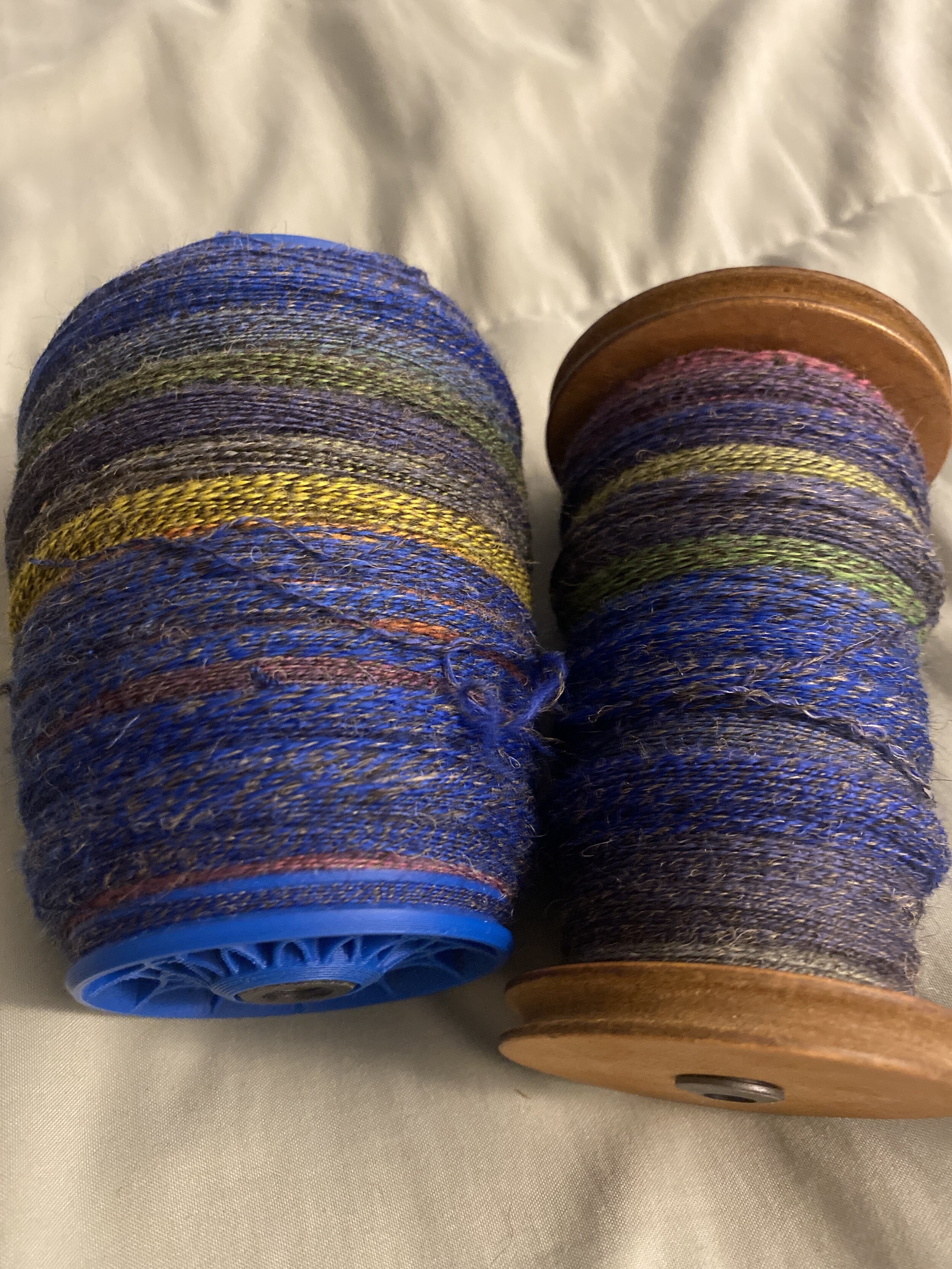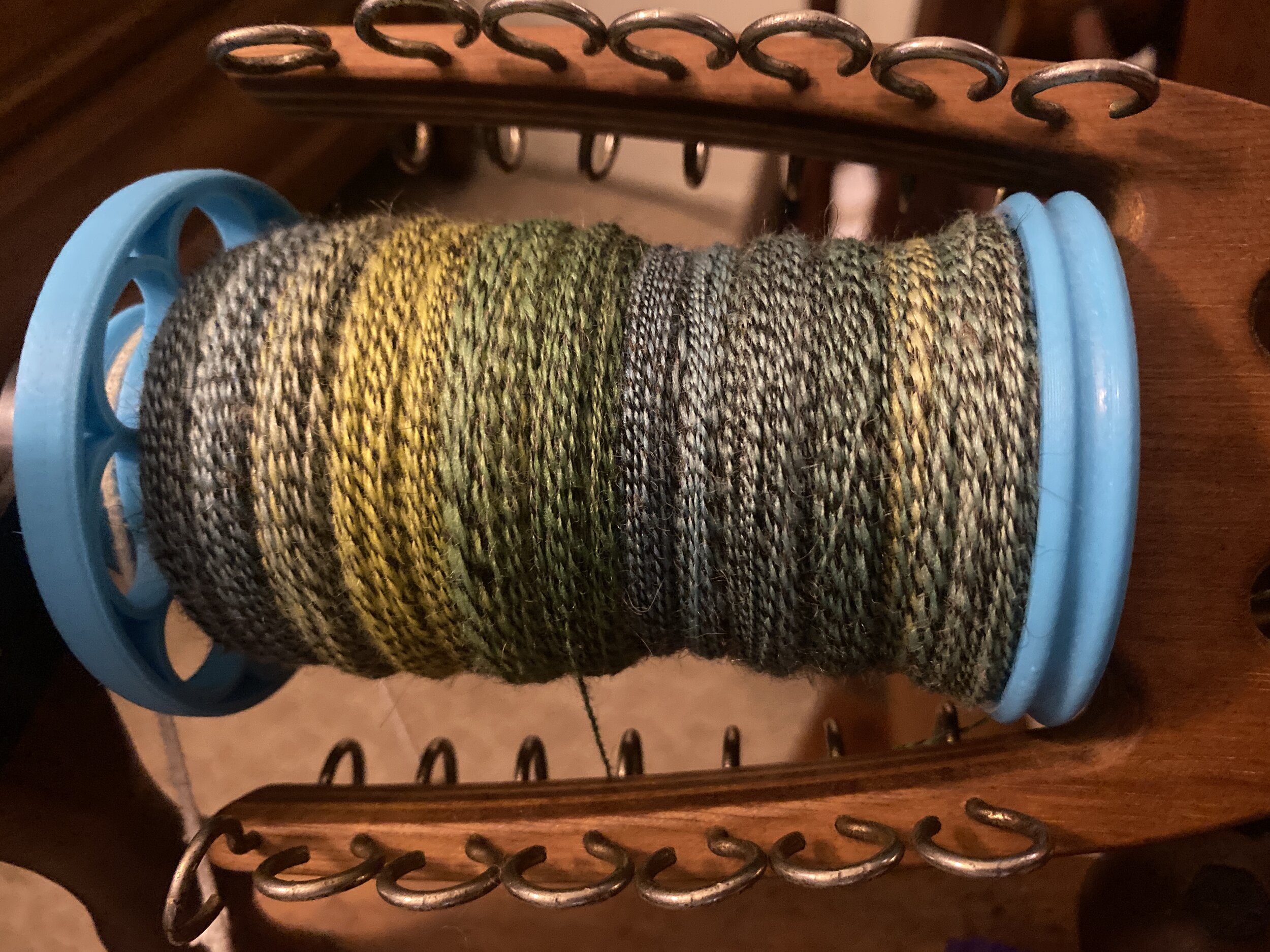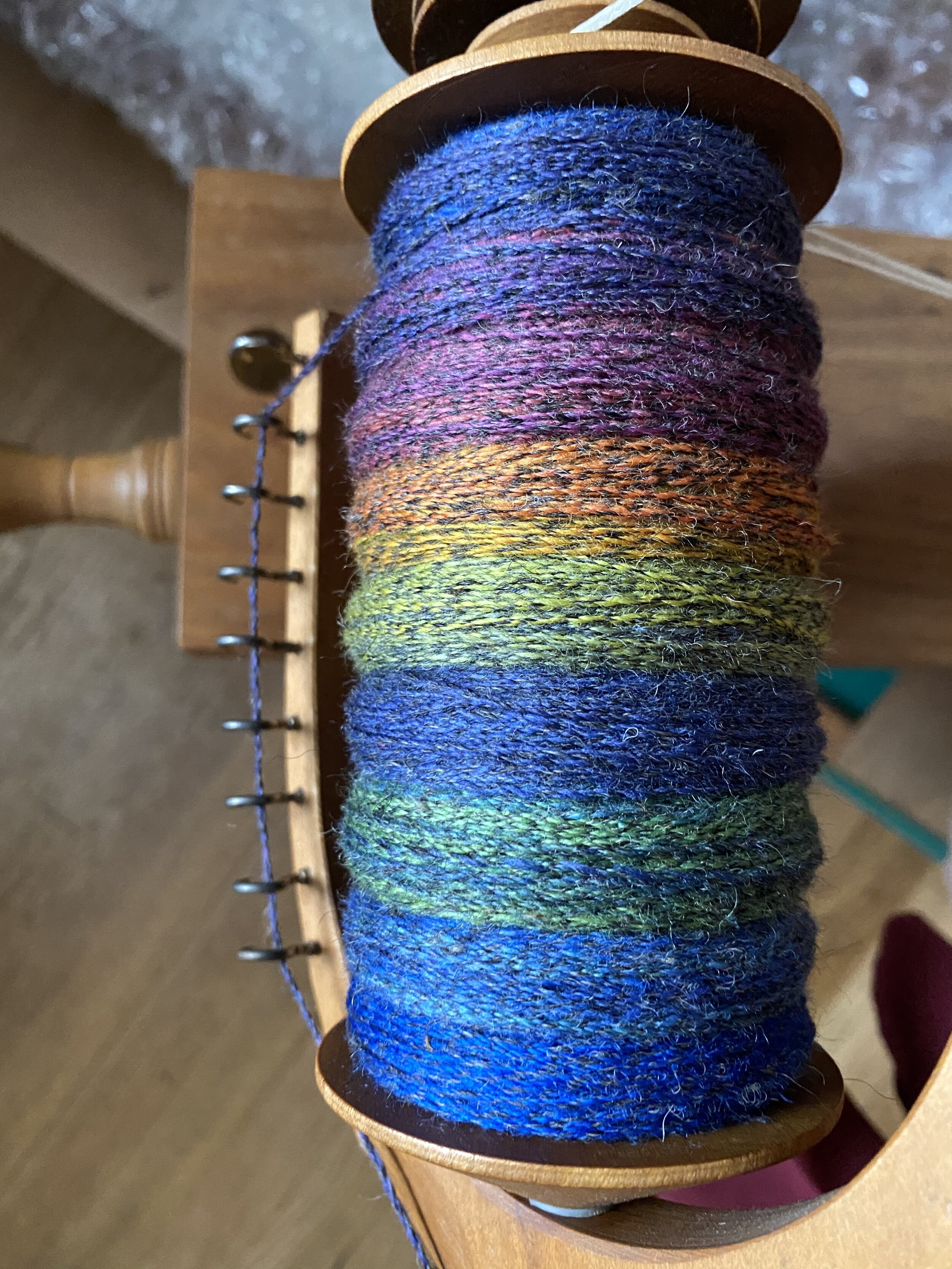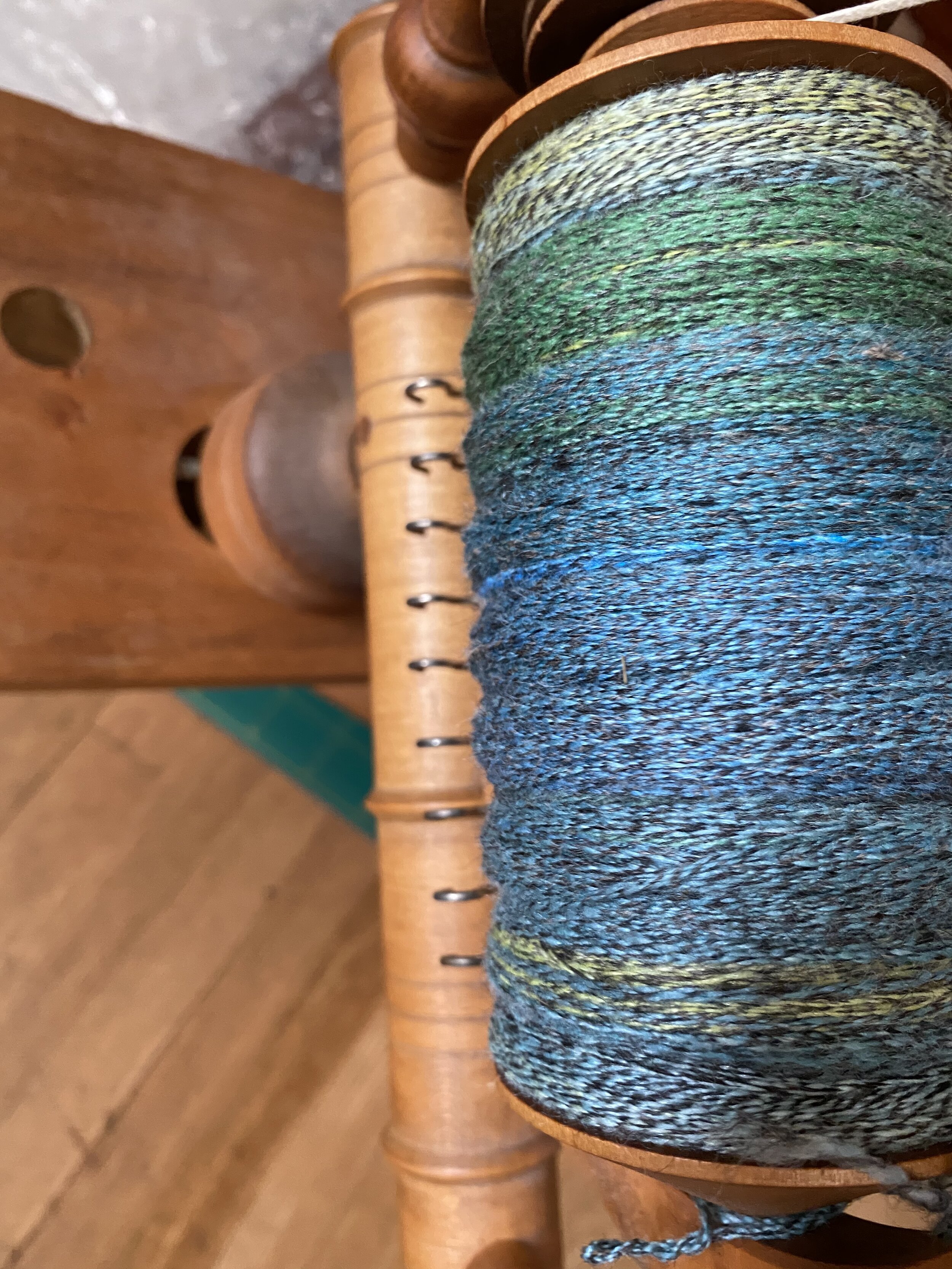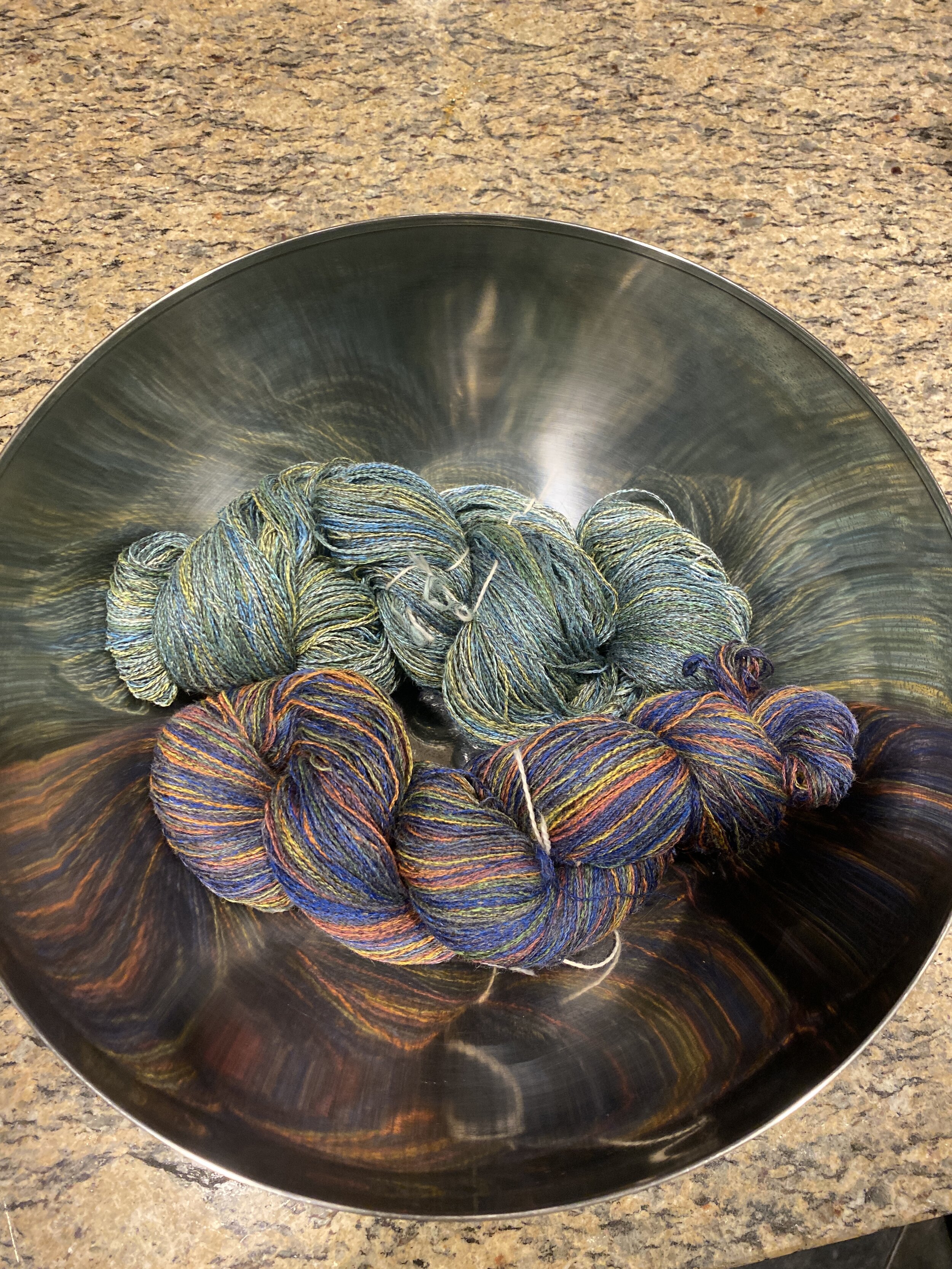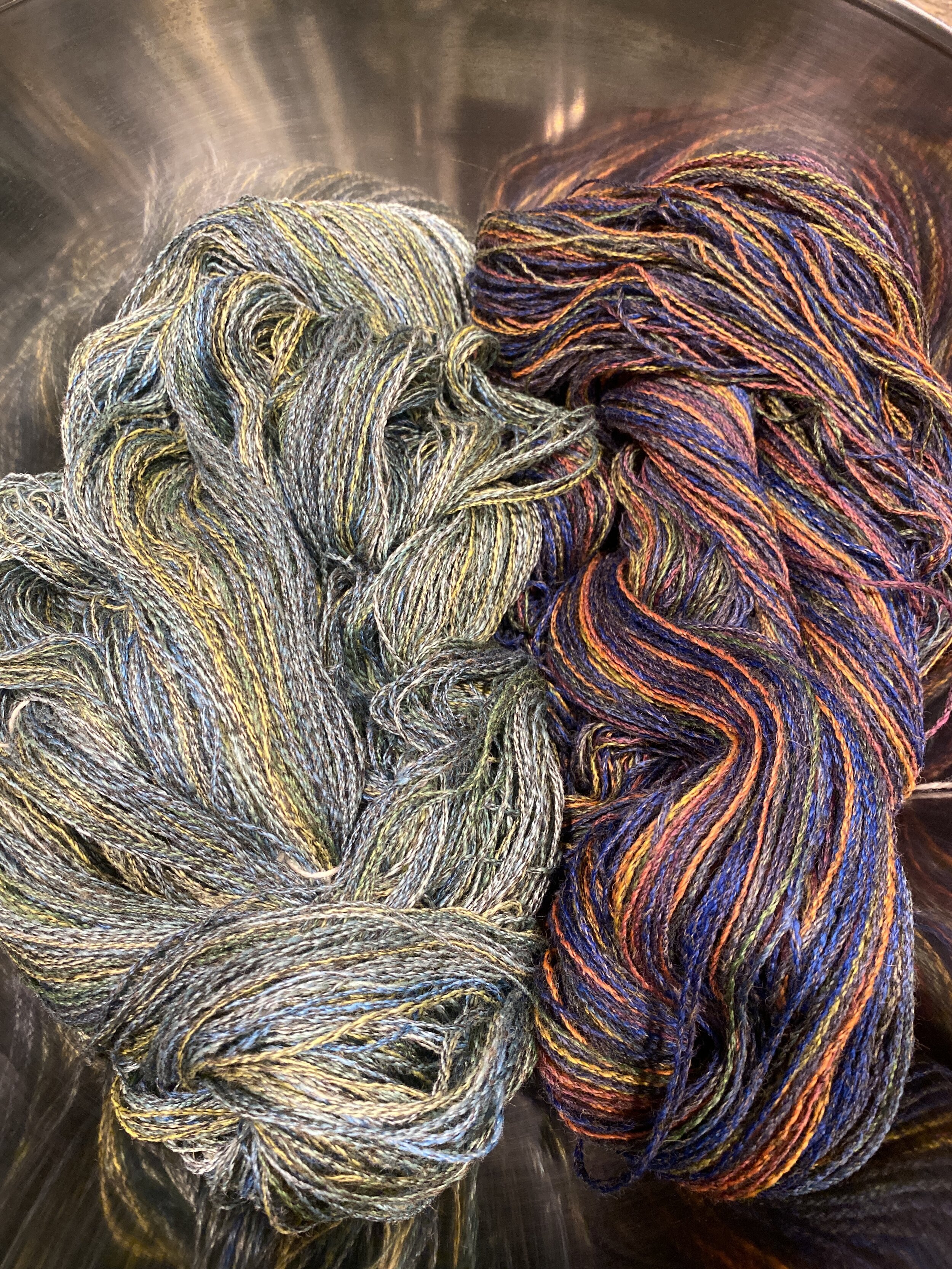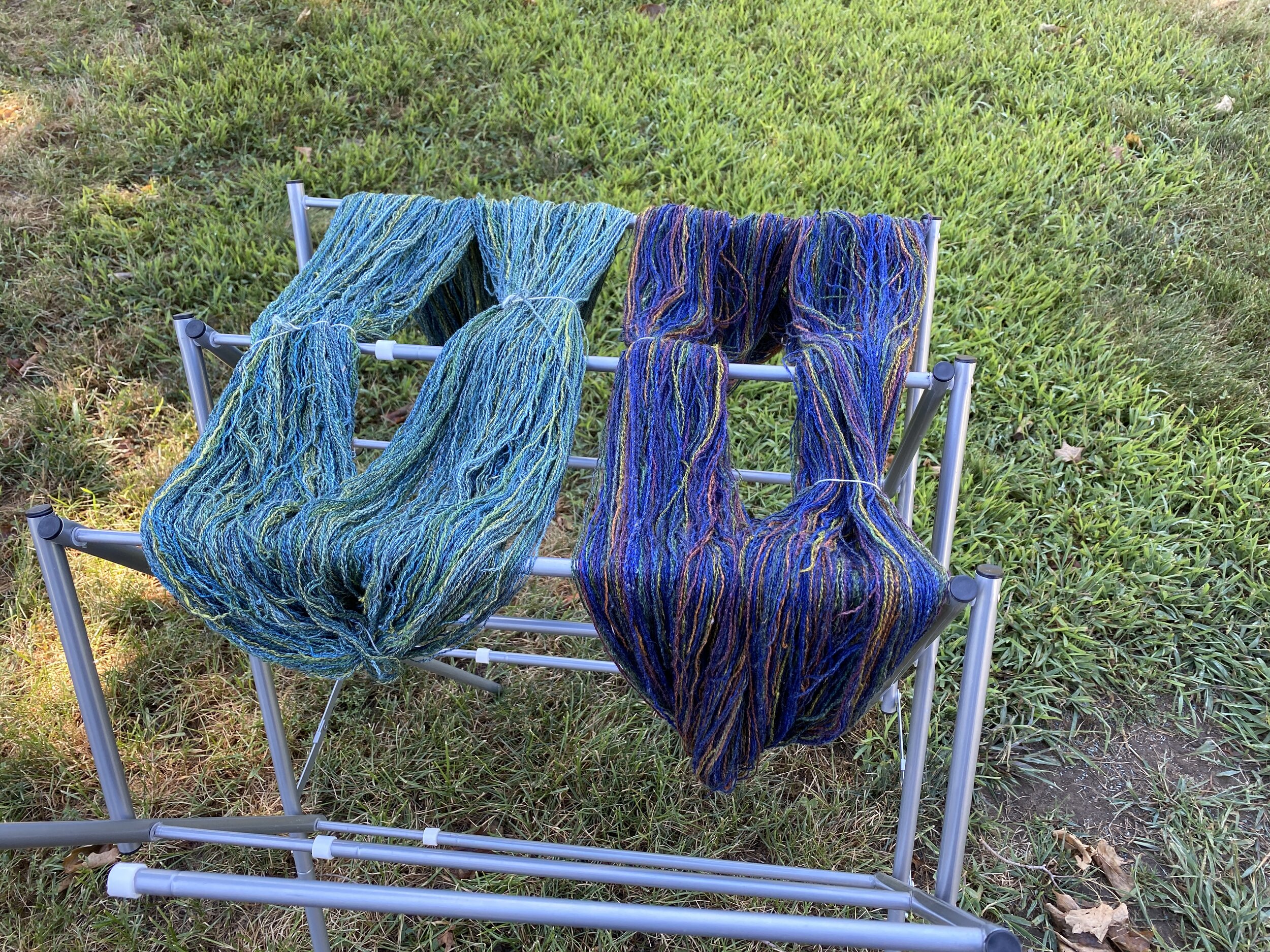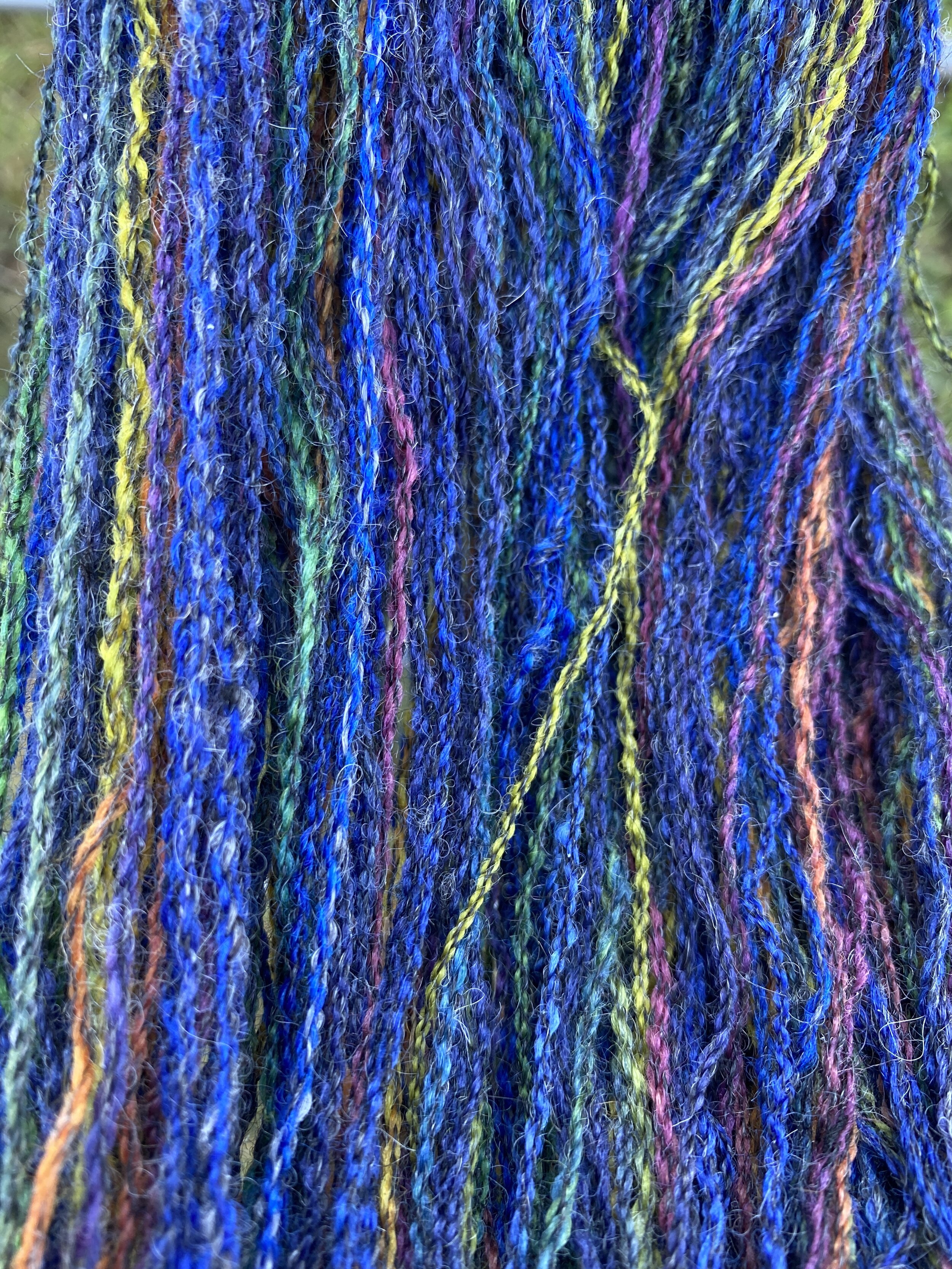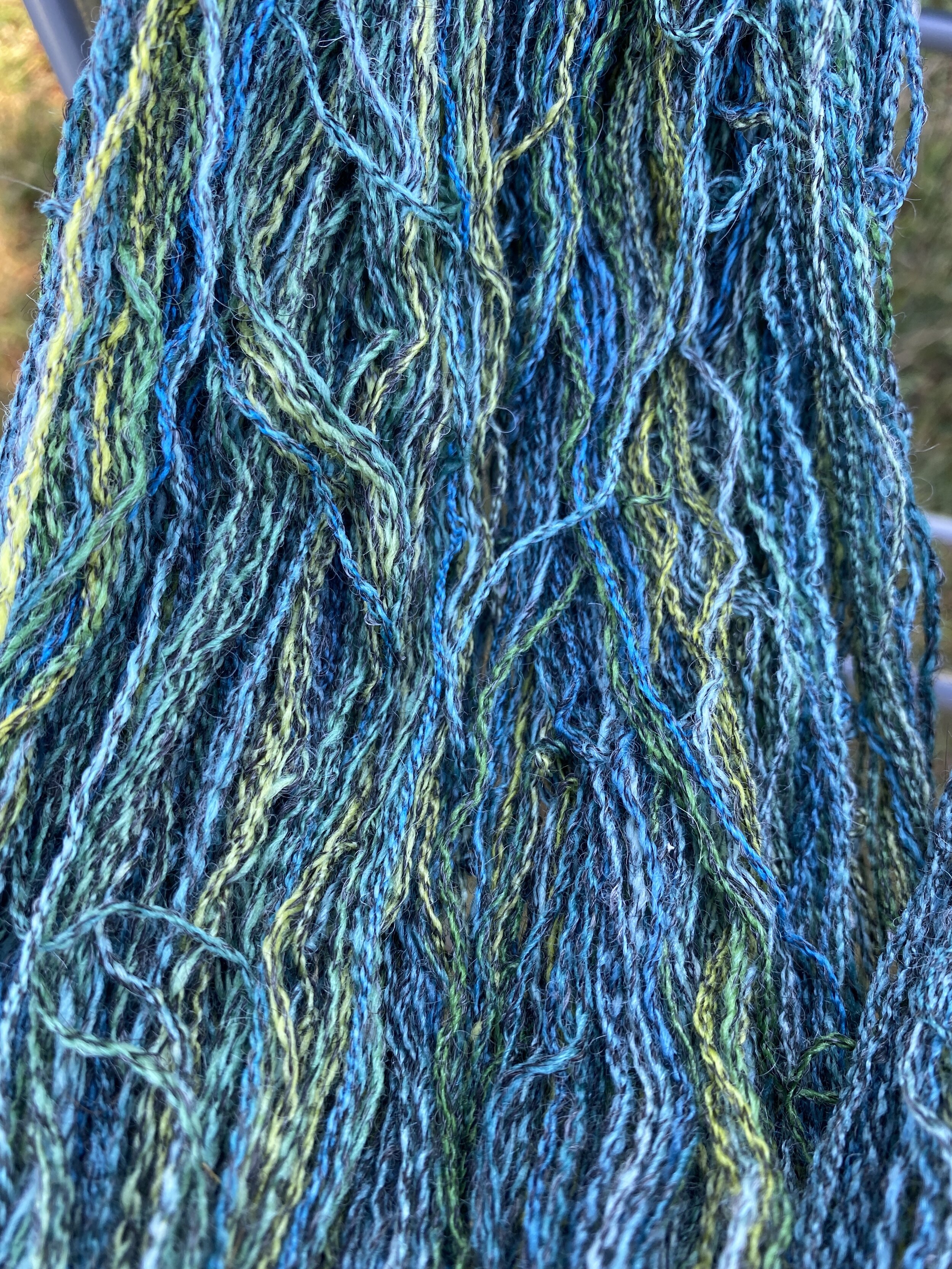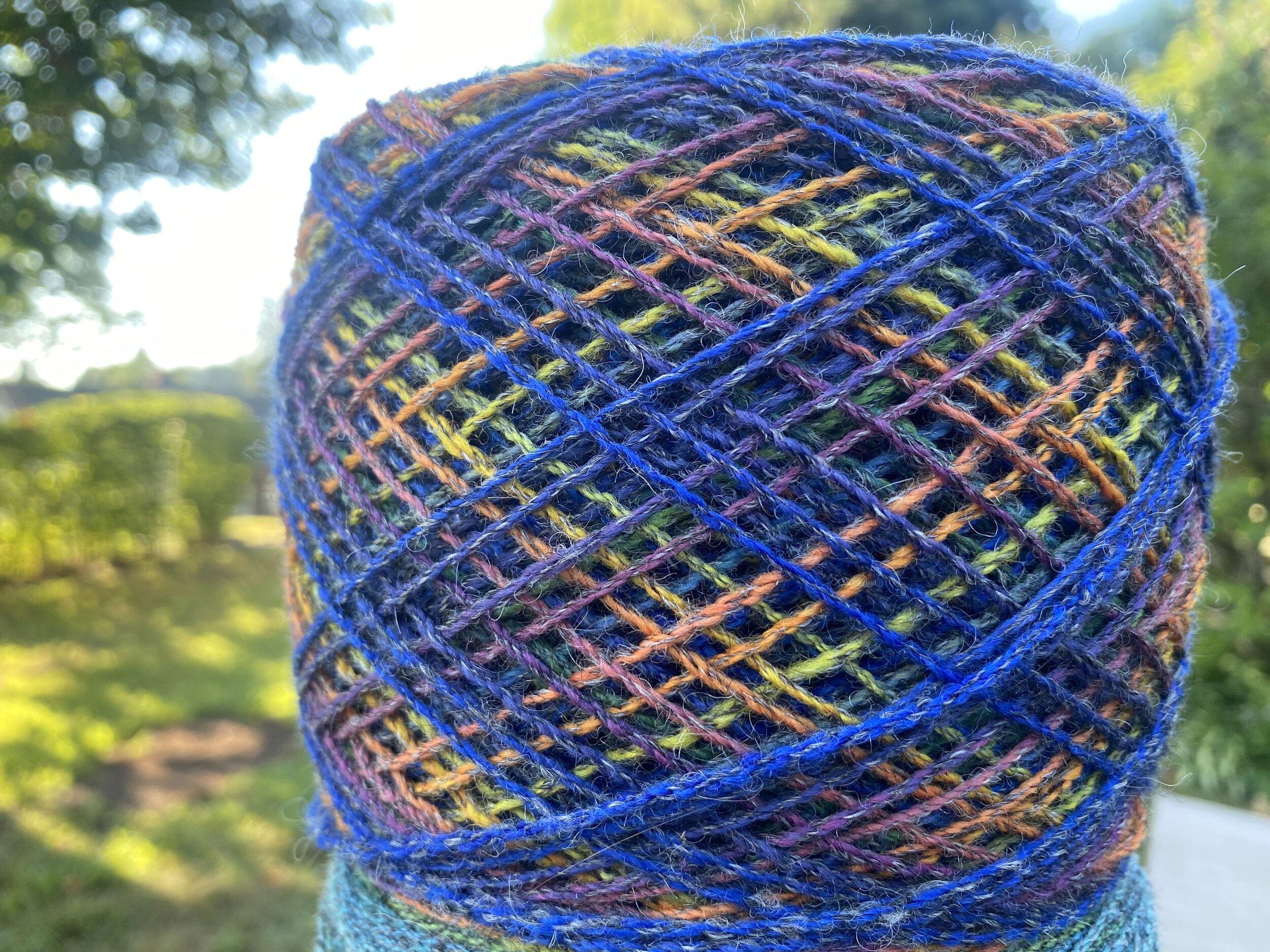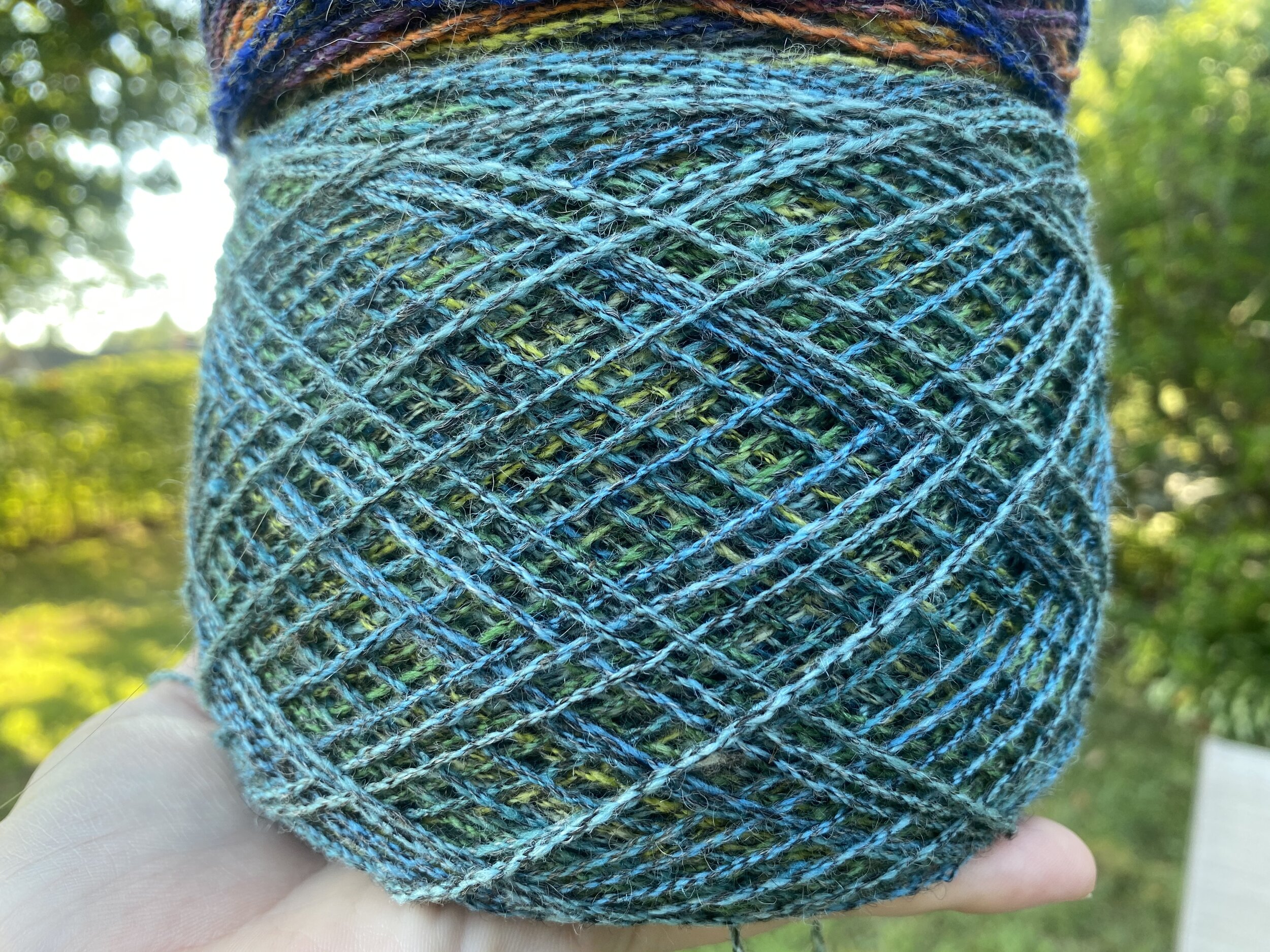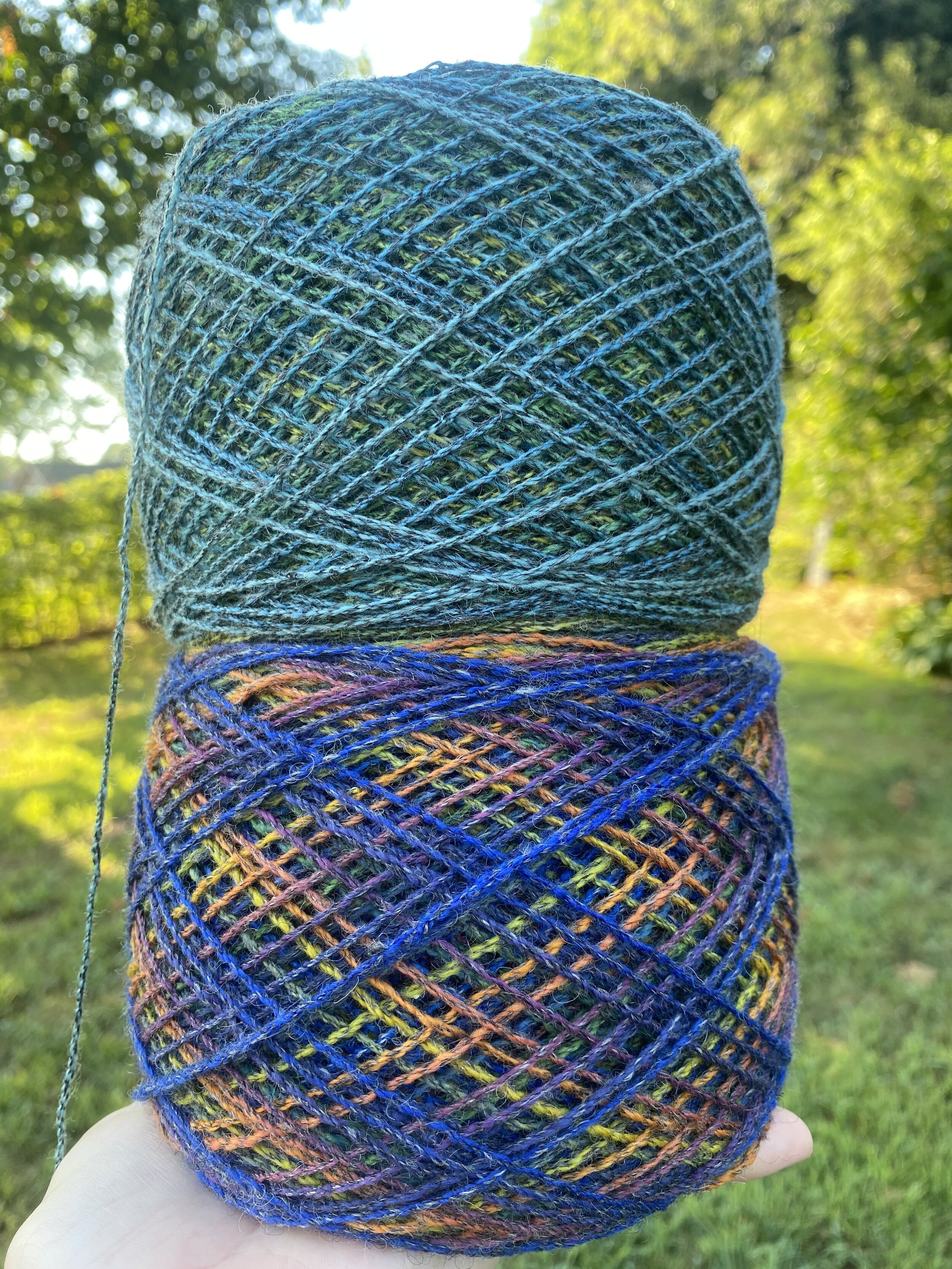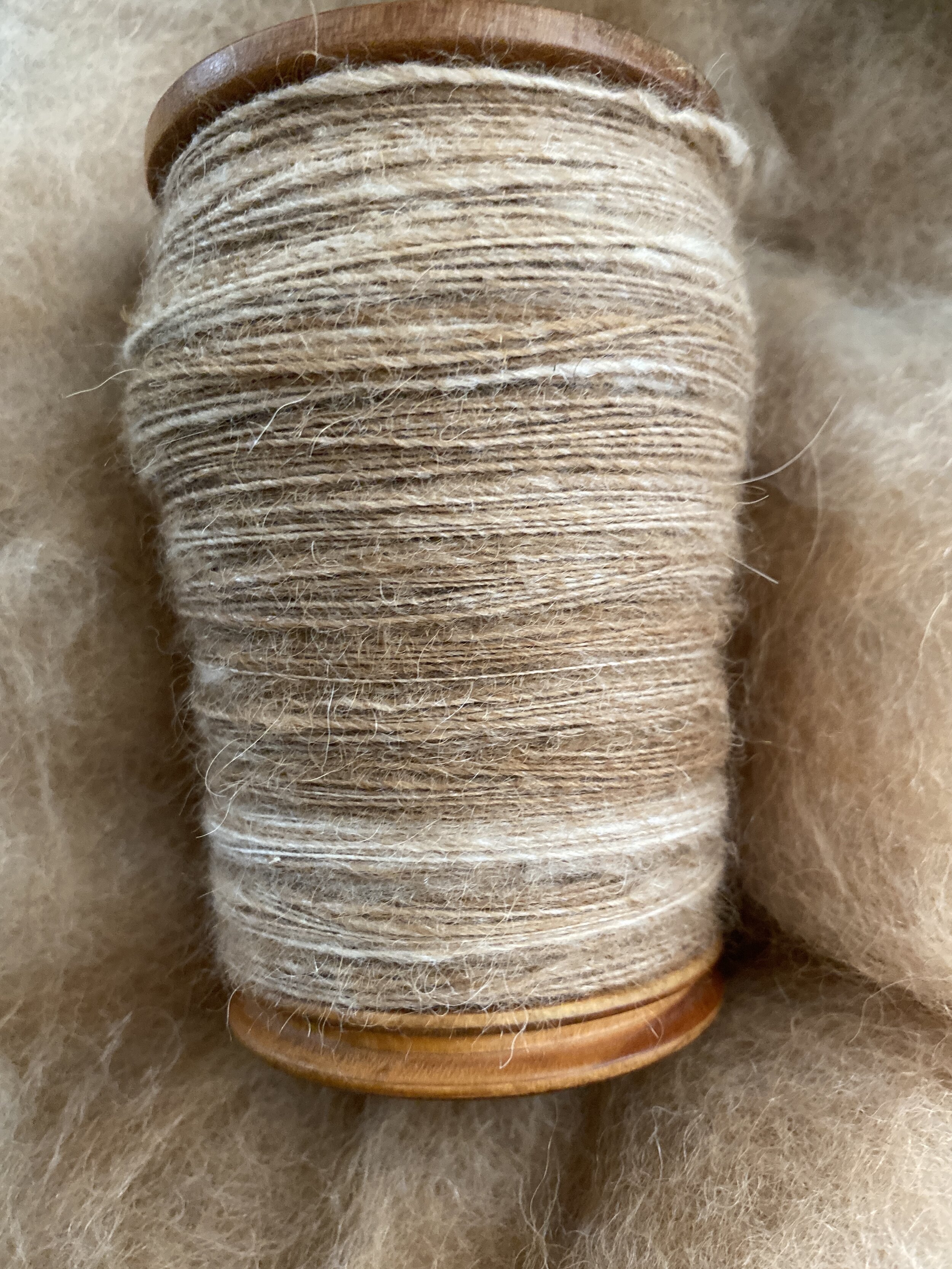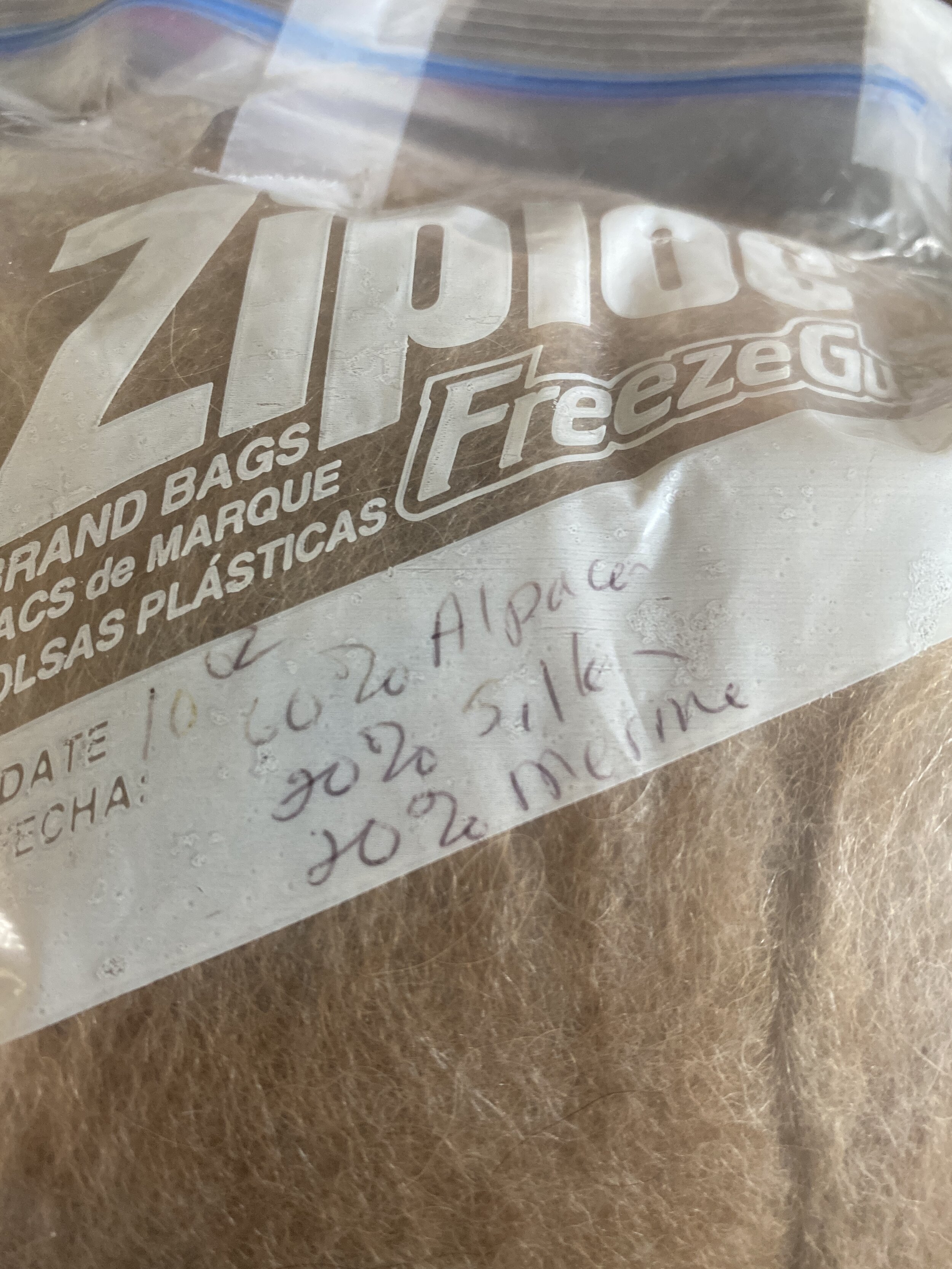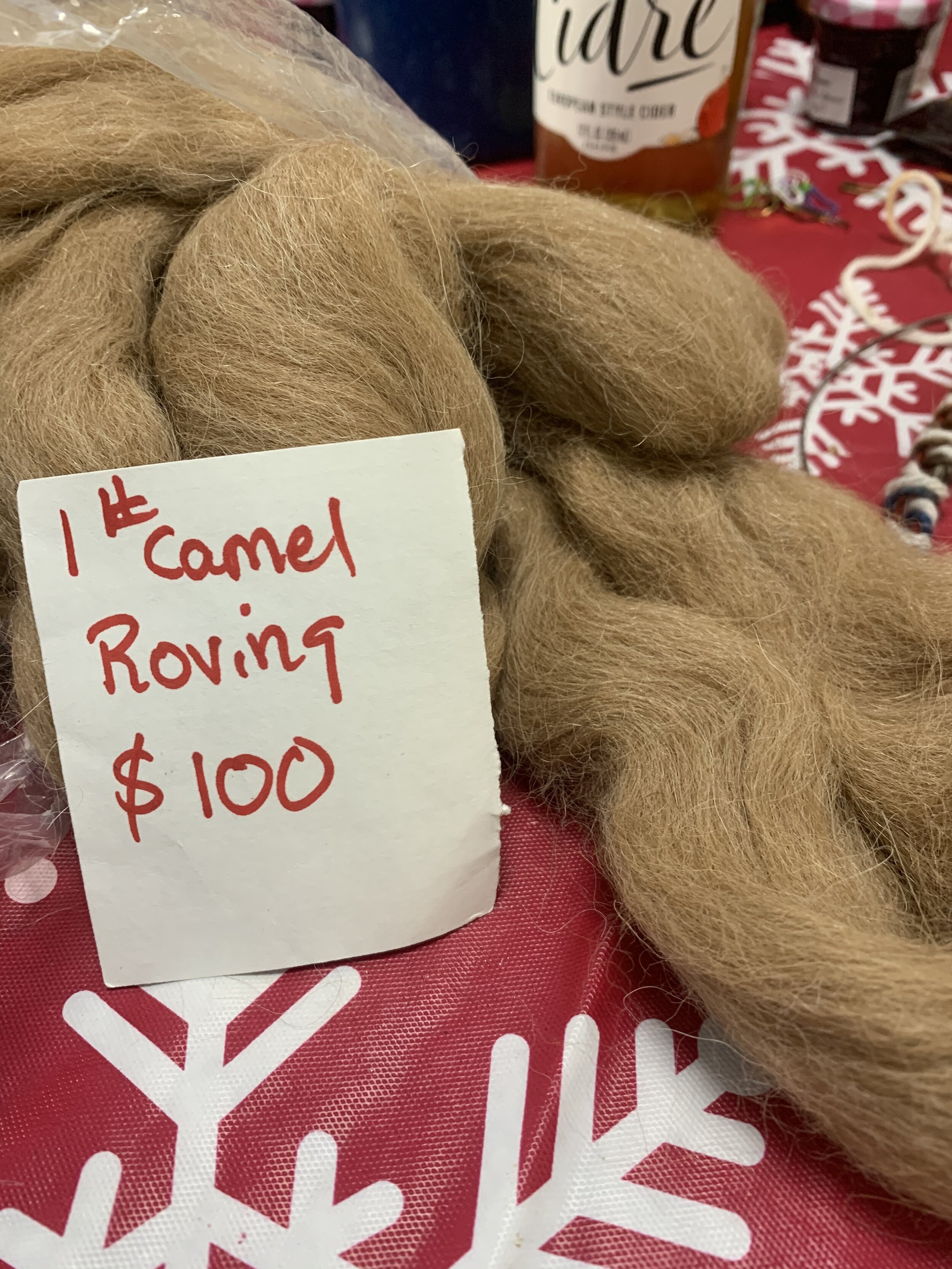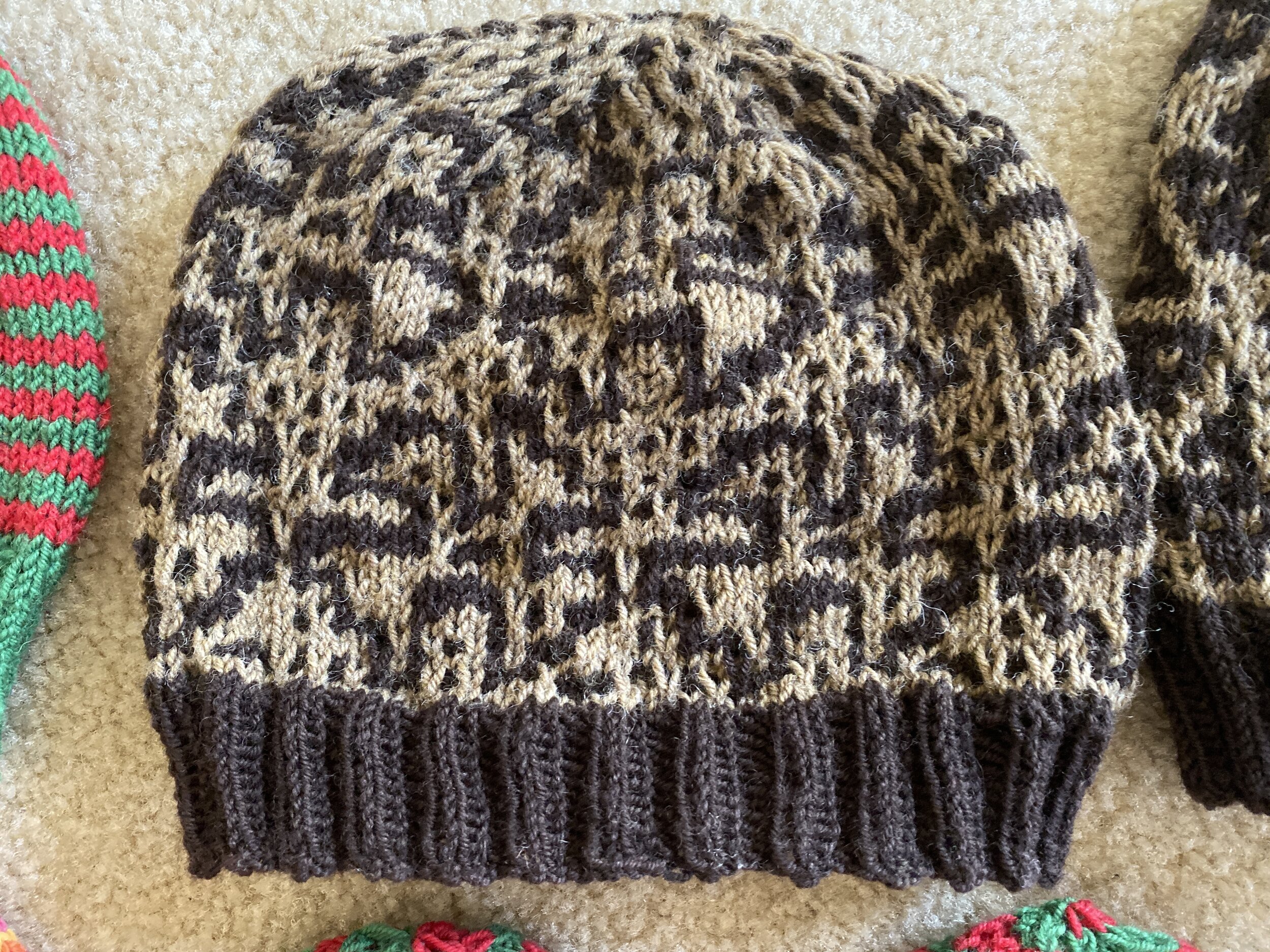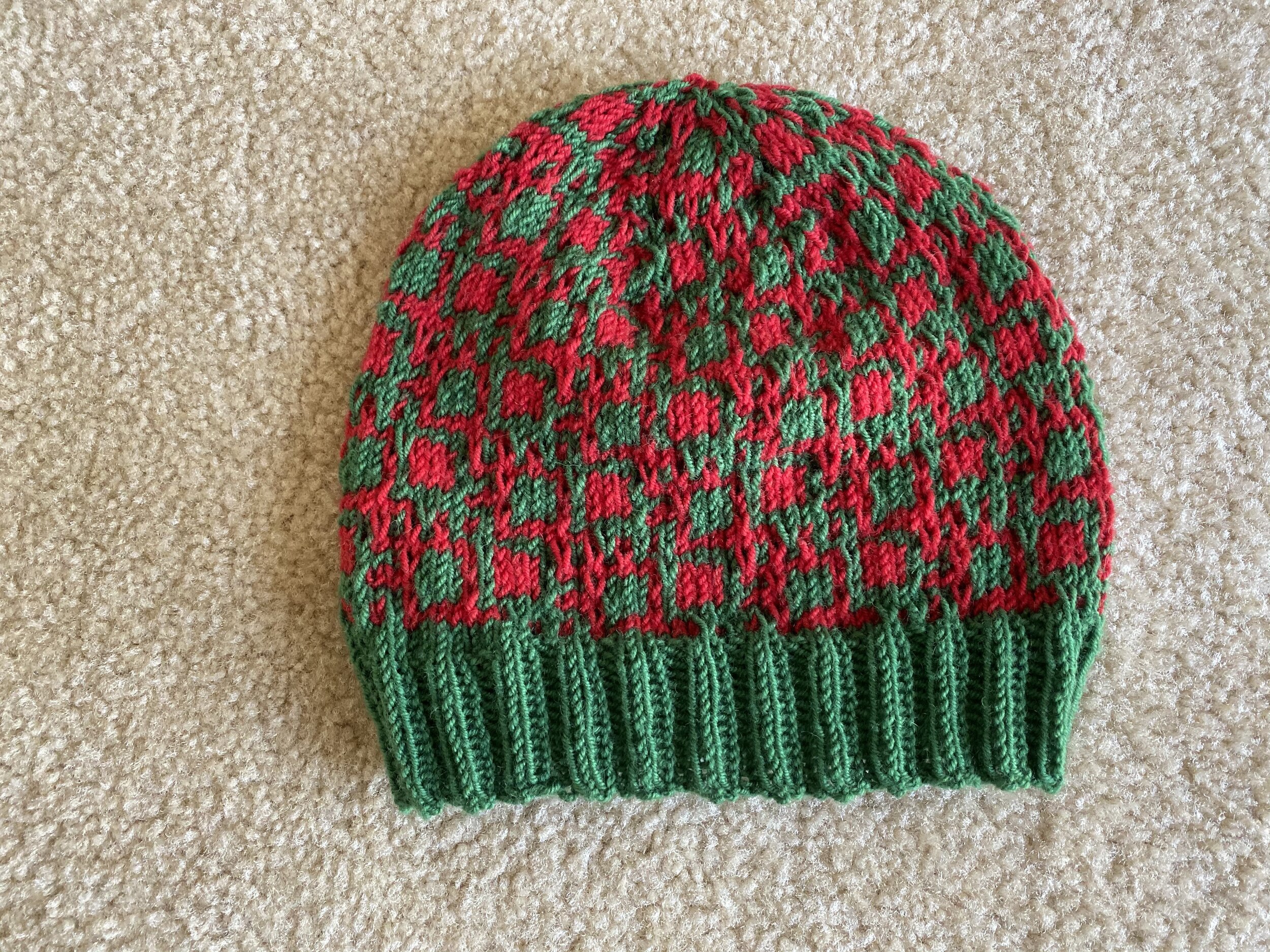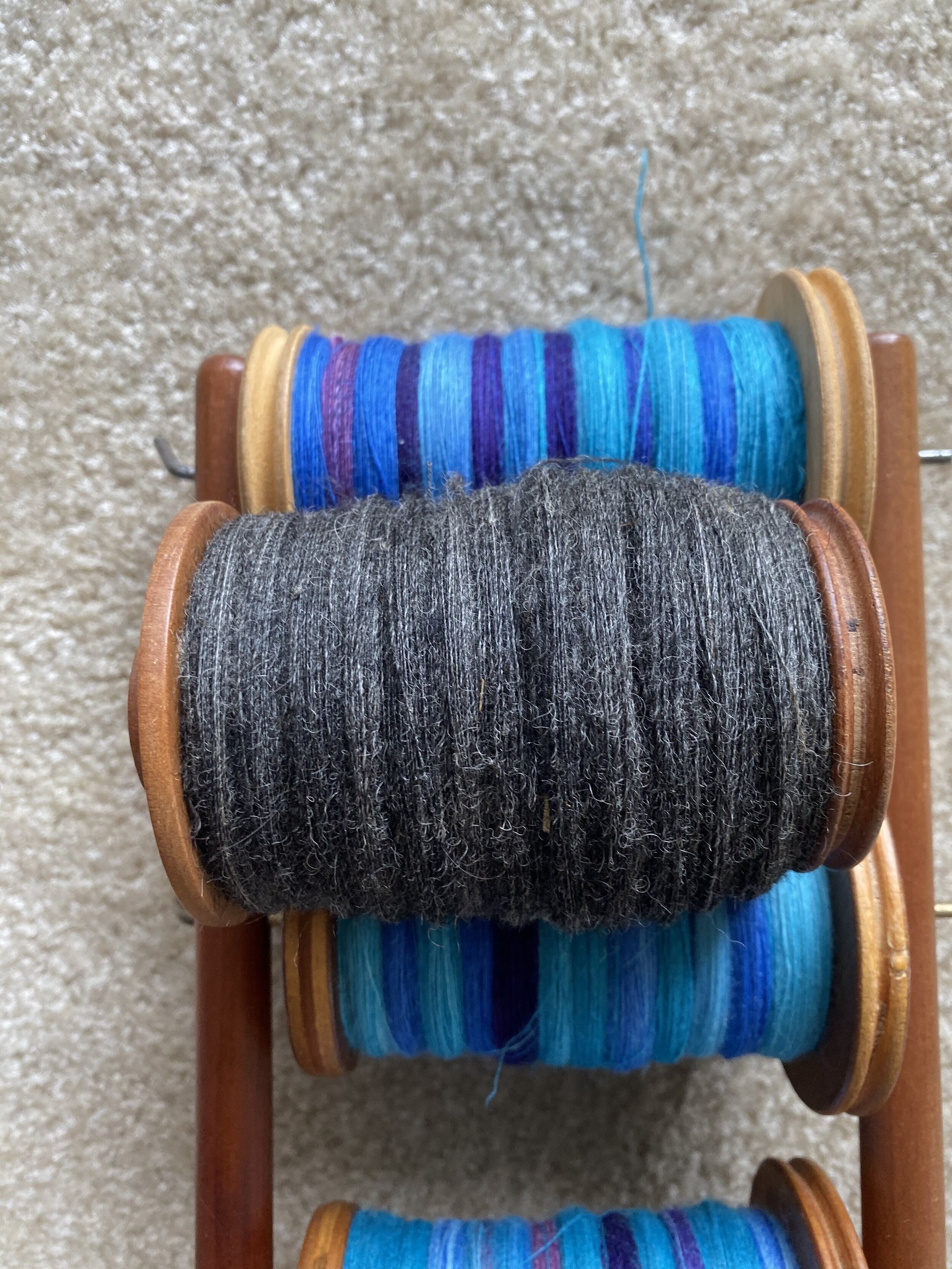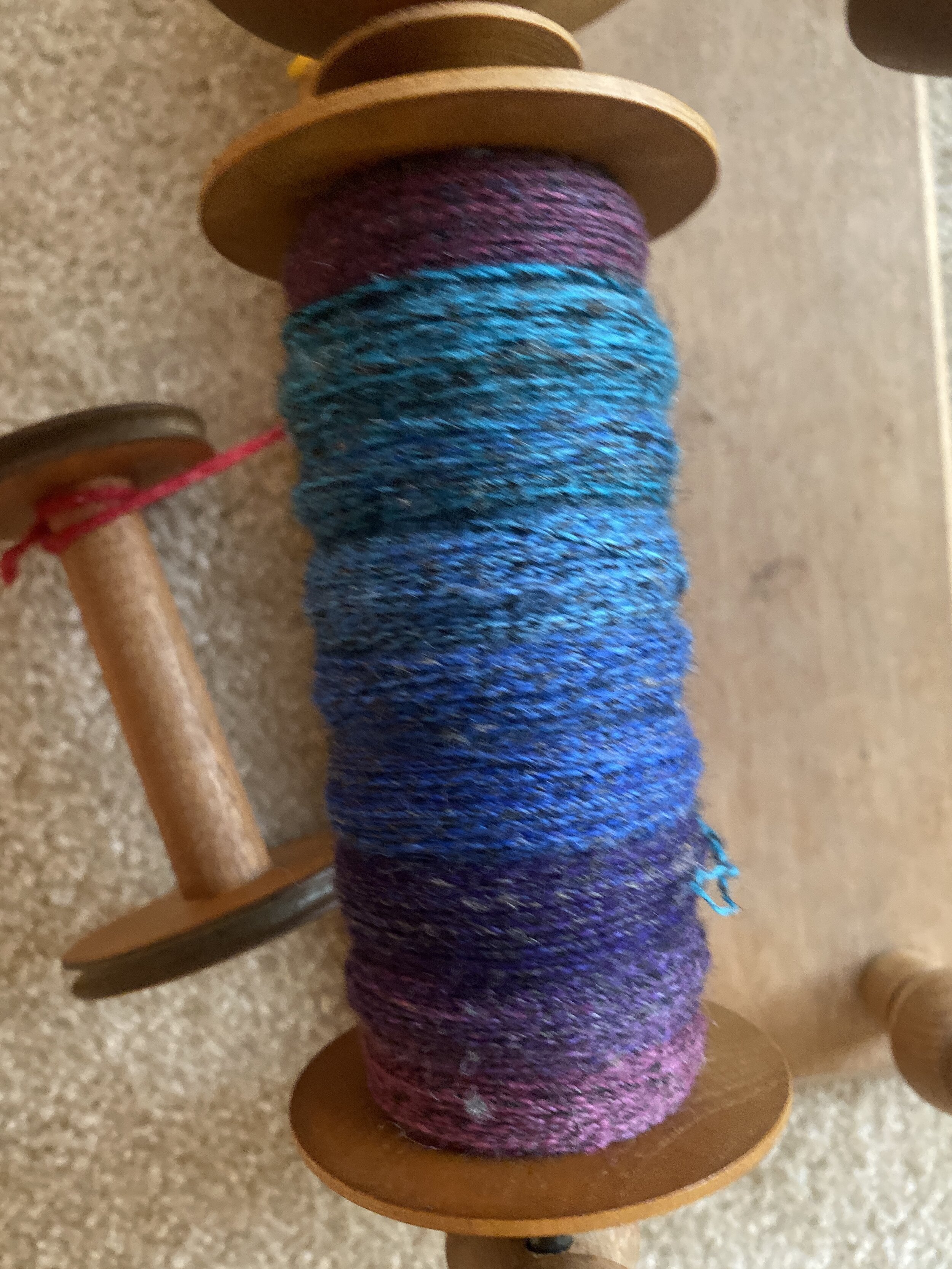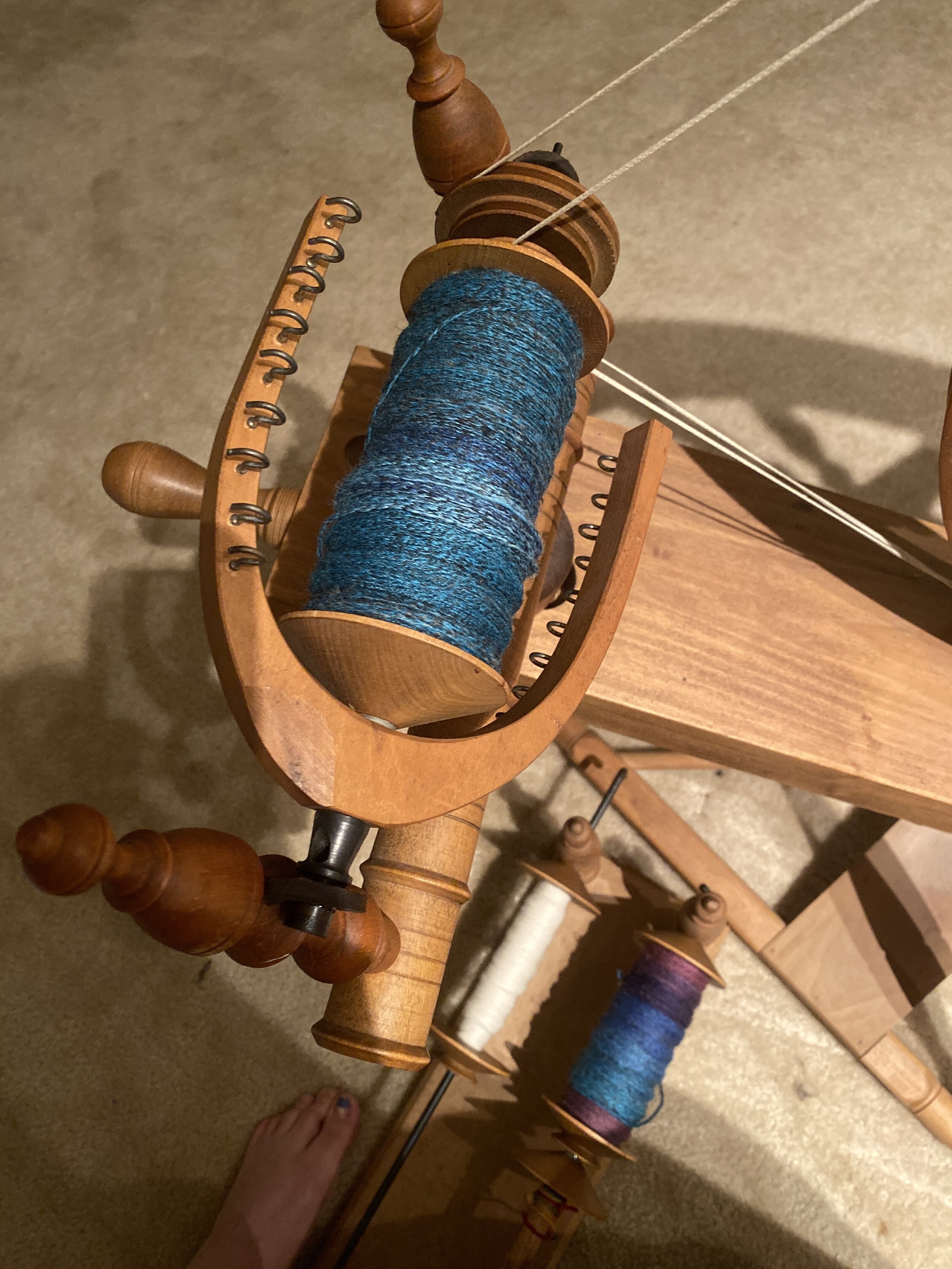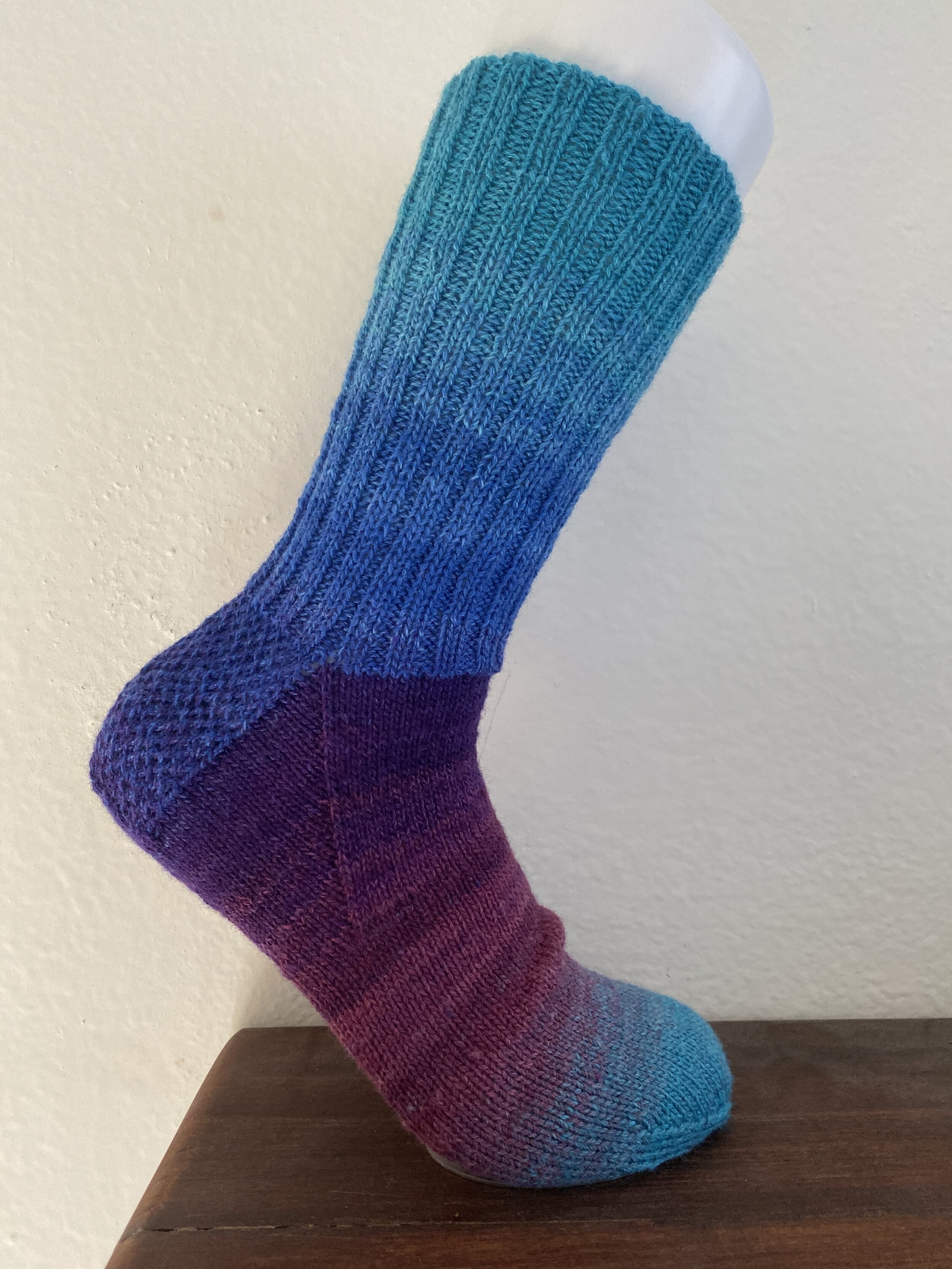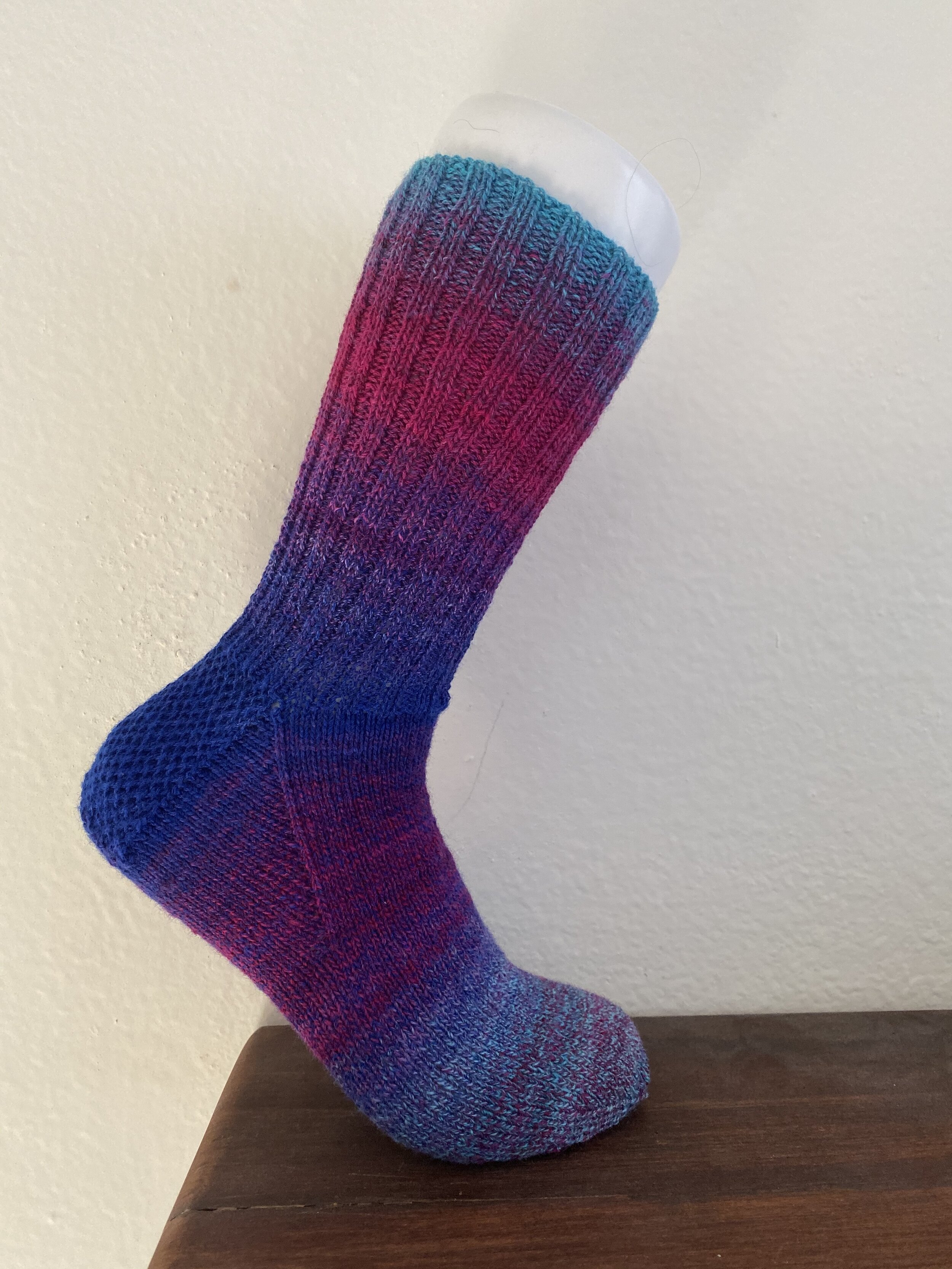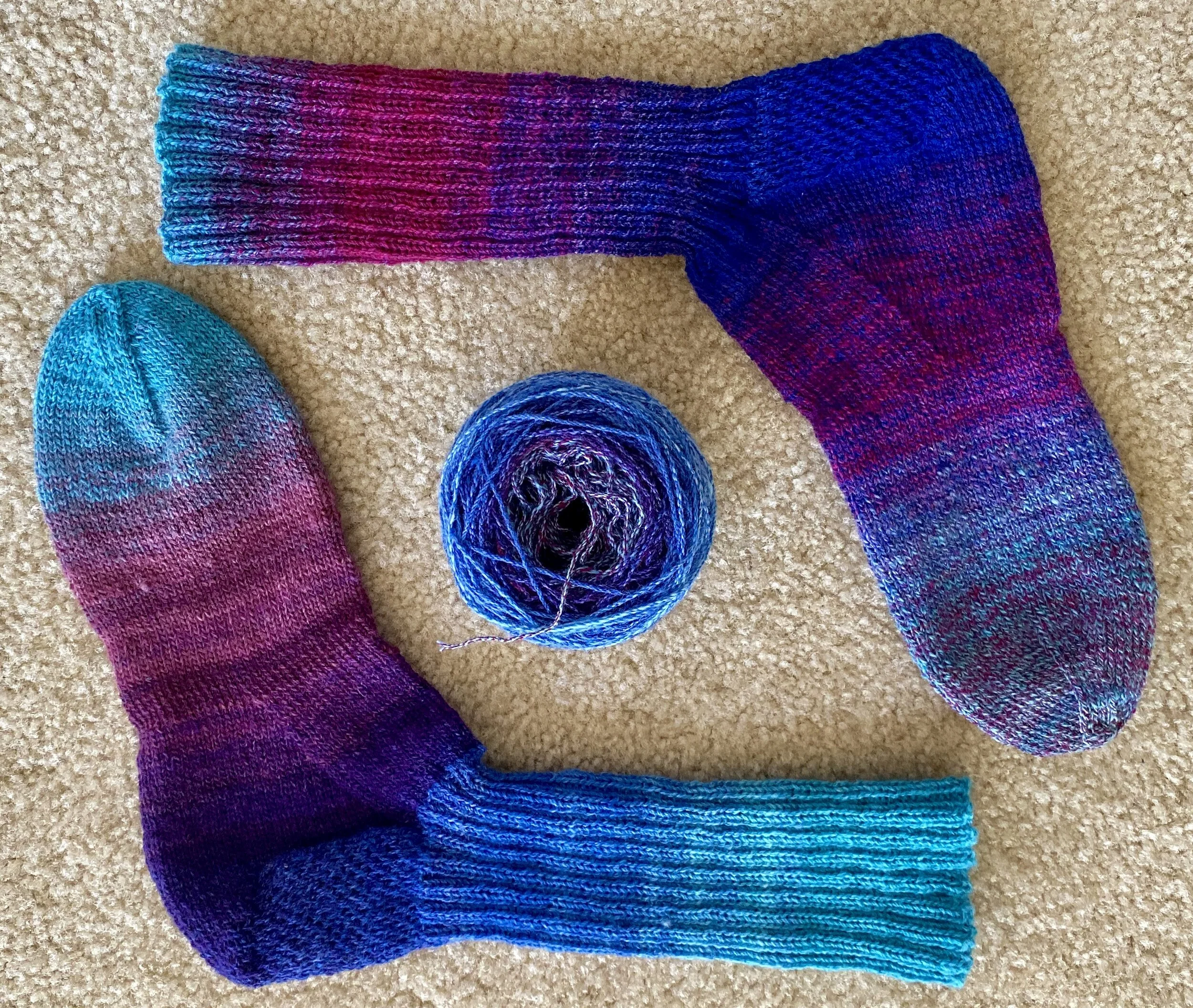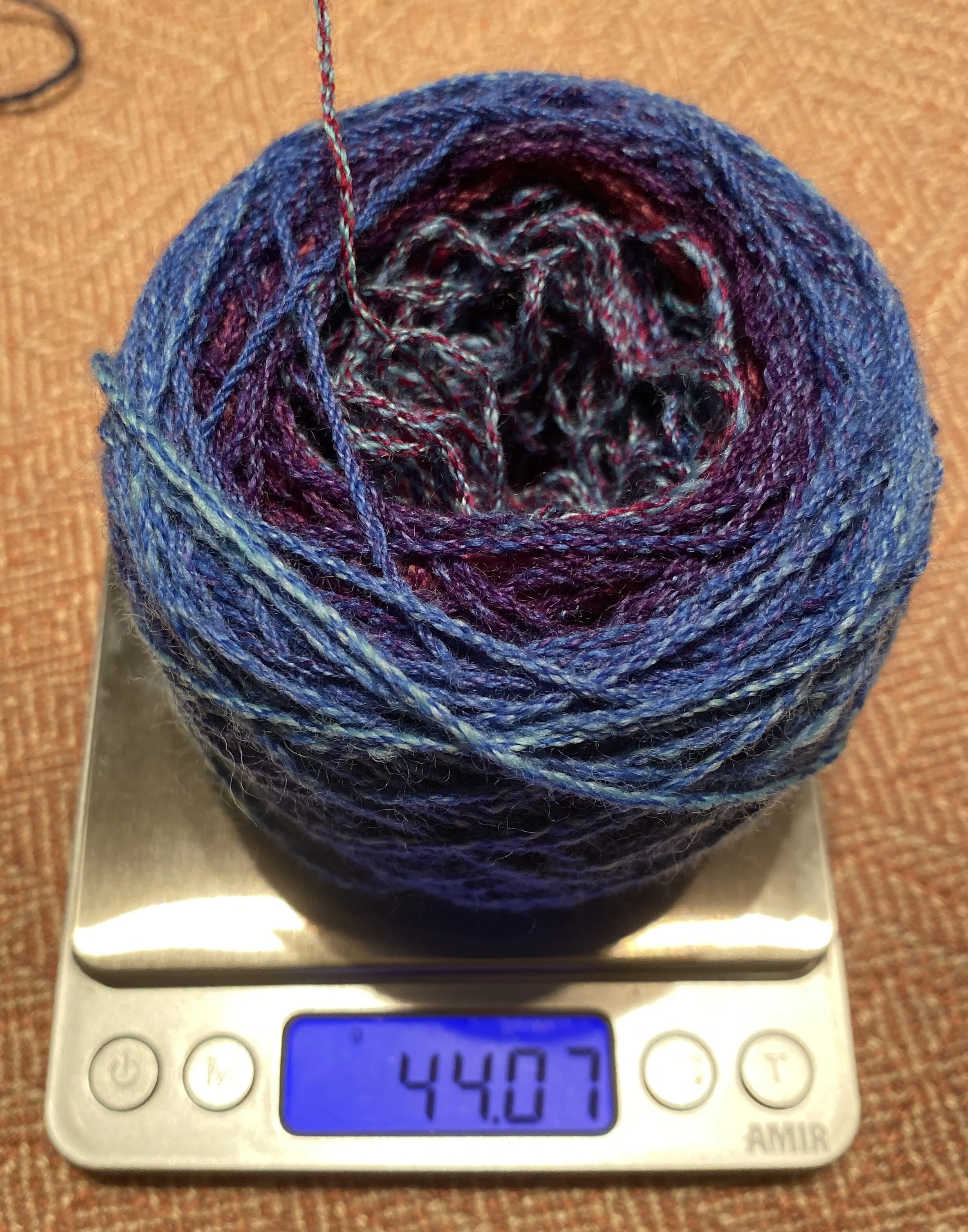I talked about making this yarn before, as well as the first pair of socks from it (the ones with diamonds made from traveling stitches). I managed to get another four pairs (five in total), using every last scrap (plus a bit of an additional skein). The second pair had cuffs, heel and toe in the contrasting grey, in an effort to use up all of the remaining grey yarn (I hate wasting my handspun!). Since I wasn’t sure how much I had, I started with the colorful yarn and a provisional cast on, knit the whole sock and then came back to do the grey ribbing at the top. I ended up with less than a foot after I finished casting off both cuffs! The third pair was a variation on the second, but all in the blue yarn. Unfortunately I don’t seem to have taken finished pictures of this pair, and they’re now at my mums…. I was super pleased at how well I got the colors to match on this pair! At this point I decided it was time for a mindless pair, so I knit a plain pair (ribbing along the whole cuff, plain knitting for the foot). The colors don’t match well, but I know that the two socks came from the same roving, and that’s what counts right? I wasn’t expecting to have any yarn left over, but I still had some. Since I really don’t like wasting my handspun, I decided to do a pair of short, small socks. I ended up needing to use a bit of my next handspun skein (I lost at yarn chicken…), but it blends in fairly well
The grey is a blend of 40% aplaca (named Serious), 40% shetland wool (sheep’s name is Treysa), and 20% black nylon, while the colorful is a commercially prepared merino roving that my mum dyed.
